

Hand-Picked Top-Read Stories

Vision Zero: A Comprehensive Guide
- Environment
- Transportation

Advantages of Public Transport: 20 Reasons to Make the Shift Today
- Planet earth

CNG Fuel: A Comprehensive Guide
Trending tags.
- Zoning Laws
- Zero-waste living
- zero-waste kitchen
- workplace safety
- workplace charging
- WineTasting
- Sustainable Tourism
Sustainable Tourism Practices and Destinations: Examples from Around the World
Sustainable Tourism Practices: Sustainable tourism is a growing trend in the travel industry that focuses on minimizing the environmental and social impact of tourism while providing economic benefits to local communities. From eco-friendly accommodations to responsible travel practices, there are many ways that tourism can be made more sustainable. Around the world, destinations and businesses are implementing sustainable tourismthat support conservation, reduce carbon emissions, and promote local cultural heritage. These efforts not only benefit the planet, but also provide a unique and authentic travel experience for visitors. In this context, we will explore some of the sustainable tourism and destinations from around the world that are leading the way in promoting responsible and ethical tourism.
Here are 40 examples of sustainable tourism and destinations from around the world:
- The Galapagos Islands, Ecuador – A protected wildlife sanctuary that limits visitor numbers to prevent environmental damage and promote sustainable tourism.
- Costa Rica – A country that has made a strong commitment to sustainable tourism, with a focus on eco-tourism, community-based tourism, and conservation efforts.
- Bhutan – A country that measures its economic success through a Gross National Happiness index, which includes the protection of the environment and cultural heritage.
- Norway – A country that is known for its sustainable tourism, including eco-friendly transportation, green energy, and sustainable tourism certification programs.
- The Netherlands – A country that is promoting sustainable tourism through initiatives such as green hotels, bike-friendly cities, and nature conservation programs.
- New Zealand – A country that has a strong focus on sustainable tourism, including eco-tourism, conservation efforts, and responsible travel practices.
- The Amazon Rainforest, Brazil – A region that has adopted sustainable tourism to promote conservation and support local communities.
- The Great Barrier Reef, Australia – A protected marine park that promotes sustainable tourism, such as reducing carbon emissions and protecting the natural environment.
- Kenya – A country that has implemented sustainable tourism, including wildlife conservation, community-based tourism, and eco-friendly lodges.
- Iceland – A country that is promoting sustainable tourism through eco-friendly transportation, renewable energy, and eco-certification programs.
- South Africa – A country that is known for its conservation efforts, including wildlife protection and community-based tourism.
- The Azores, Portugal – A group of islands that is promoting sustainable tourism through eco-tourism, whale watching, and nature conservation programs.
- The Serengeti, Tanzania – A protected wildlife sanctuary that promotes responsible tourism practices, such as reducing carbon emissions and supporting local communities.
- The Cook Islands, Pacific Ocean – A group of islands that is committed to sustainable tourism, including protecting the environment and supporting local communities.
- Thailand – A country that has implemented sustainable practices, including community-based tourism, wildlife conservation, and responsible travel.
- The Faroe Islands, Denmark – A group of islands that is promoting sustainable tourism through eco-friendly transportation, sustainable seafood, and nature conservation programs.
- The Lake District, England – A protected national park that promotes sustainable tourism, such as reducing carbon emissions and supporting local communities.
- The Annapurna Region, Nepal – A region that is promoting sustainable tourism through community-based tourism, conservation efforts, and responsible trekking practices.
- The Maasai Mara, Kenya – A protected wildlife reserve that promotes sustainable practices, such as reducing carbon emissions and supporting local communities.
- The Blue Mountains, Australia – A protected national park that promotes sustainable tourism practices, such as reducing carbon emissions and supporting local communities.
- Guna Yala, Panama – A protected indigenous territory that promotes sustainable tourism, such as supporting traditional livelihoods and preserving cultural heritage.
- The Isle of Eigg, Scotland – An island that is promoting sustainable tourism through renewable energy, eco-friendly accommodations, and community-based tourism initiatives.
- The San Blas Islands, Panama – A group of islands that is promoting sustainable tourism through eco-tourism, community-based tourism, and responsible travel practices.
- The Burren, Ireland – A protected national park that promotes sustainable practices, such as reducing carbon emissions and supporting local communities.
- The Bay of Fundy, Canada – A protected marine park that promotes sustainable tourism practices, such as reducing carbon emissions and supporting local communities.
- The Lofoten Islands, Norway – An archipelago that is promoting sustainable tourism through eco-friendly transportation, responsible fishing, and community-based tourism initiatives.
- The Tongariro National Park, New Zealand – A protected national park that promotes sustainable tourism, such as reducing carbon emissions and supporting local communities.
- The Danube Delta, Romania – A protected wetland that promotes sustainable tourism practices, such as eco-tourism and responsible travel practices.
- The Douro Valley, Portugal – A region that is promoting sustainable tourism through eco-tourism, responsible wine tourism, and community-based tourism initiatives.
- The Lake Titicaca, Peru/Bolivia – A protected lake that promotes sustainable tourism, such as preserving cultural heritage and supporting traditional livelihoods.
- The Everglades, United States – A protected wetland that promotes sustainable tourism, such as reducing carbon emissions and supporting local communities.
- The Cinque Terre, Italy – A protected coastal area that promotes sustainable tourism practices, such as reducing carbon emissions and supporting local communities.
- The Mekong Delta, Vietnam – A region that is promoting sustainable tourism through eco-tourism, responsible travel practices, and community-based tourism initiatives.
- The Lake District, Chile – A protected national park that promotes sustainable tourism practices, such as reducing carbon emissions and supporting local communities.
- The Sinharaja Forest Reserve , Sri Lanka – A protected rainforest that promotes sustainable tourism, such as eco-tourism and responsible travel practices.
- The Jasper National Park, Canada – A protected national park that promotes sustainable tourism practices, such as reducing carbon emissions and supporting local communities.
- The Arctic, various countries – A region that is promoting sustainable tourism through eco-tourism, responsible travel practices, and nature conservation programs.
- The Torres del Paine National Park, Chile – A protected national park that promotes sustainable tourism, such as reducing carbon emissions and supporting local communities.
- The Sagarmatha National Park, Nepal – A protected national park that promotes sustainable tourism practices, such as eco-tourism and responsible trekking practices.
- The Monteverde Cloud Forest Reserve, Costa Rica – A protected cloud forest that promotes sustainable tourism practices, such as eco-tourism and nature conservation programs.
These are just a few more examples of the many destinations and businesses around the world that are adopting sustainable tourism. With a growing focus on responsible and ethical tourism, sustainable tourism is becoming an increasingly important industry worldwide.
Similar Articles
- Green Hiking
- How To Save Water
- What is an Eco Lodge?
Frequently Asked Questions About Sustainable Tourism Practices
What is sustainable tourism?
Sustainable tourism is a form of tourism that focuses on minimizing the environmental and social impact of travel while providing economic benefits to local communities.
What are some sustainable tourism practices?
Some sustainable tourism practices include supporting conservation efforts, reducing carbon emissions, promoting local cultural heritage, and supporting local communities through community-based tourism initiatives.
Why is sustainable tourism important?
Sustainable tourism is important because it helps to preserve natural and cultural resources, provides economic benefits to local communities, and promotes responsible and ethical travel practices.
How can travelers practice sustainable tourism?
Travelers can practice sustainable tourism by supporting eco-friendly accommodations, engaging in responsible travel practices, supporting local communities, and minimizing their carbon footprint.
What are some examples of sustainable tourism destinations?
Some examples of sustainable tourism destinations include national parks, protected areas, eco-tourism lodges, and community-based tourism initiatives.
How can tourism businesses implement sustainable tourism practices?
Tourism businesses can implement sustainable practices by reducing their carbon emissions, supporting local communities, promoting conservation efforts, and adopting eco-friendly practices.
What is community-based tourism?
Community-based tourism is a form of tourism that involves local communities in the tourism industry, providing economic benefits while preserving local culture and traditions.
What is responsible tourism?
Responsible tourism is a form of tourism that focuses on minimizing the environmental and social impact of travel while providing economic benefits to local communities and promoting cultural awareness.
What is the difference between sustainable tourism and ecotourism?
Sustainable tourism is a broader concept that encompasses all forms of tourism that are socially, economically, and environmentally responsible, while ecotourism is a specific form of tourism that focuses on nature-based experiences that support conservation efforts.
How does sustainable tourism benefit local communities?
Sustainable tourism benefits local communities by providing economic benefits through job creation and supporting local businesses, while also preserving cultural heritage and traditions.
How can tourists ensure they are practicing sustainable tourism?
Tourists can ensure they are practicing sustainable tourism by choosing eco-friendly accommodations, engaging in responsible travel practices, supporting local communities, and minimizing their carbon footprint.
What role do governments play in promoting sustainable tourism?
Governments play an important role in promoting sustainable tourism by establishing policies and regulations that support conservation efforts, promoting sustainable practices, and providing funding for sustainable tourism initiatives.
What are some challenges to implementing sustainable tourism practices?
Some challenges to implementing sustainable tourism practices include the high cost of implementing eco-friendly practices, lack of awareness among tourists, and limited resources in developing countries.
What is the role of tourism businesses in promoting sustainable tourism?
Tourism businesses play a critical role in promoting sustainable tourism by adopting eco-friendly practices, supporting conservation efforts, and engaging with local communities to ensure their economic benefits are sustainable.
What is the impact of sustainable tourism on the environment?
Sustainable tourism aims to minimize the impact of tourism on the environment by reducing carbon emissions, supporting conservation efforts, and promoting eco-friendly practices. This can have a positive impact on the environment by preserving natural resources and reducing pollution.
What is the role of tourists in promoting sustainable tourism?
Tourists have a crucial role to play in promoting sustainable tourism by supporting eco-friendly accommodations, engaging in responsible travel practices, supporting local communities, and minimizing their carbon footprint.
What is the role of local communities in sustainable tourism?
Local communities play a vital role in sustainable tourism by providing unique cultural experiences, supporting conservation efforts, and benefitting from the economic opportunities that tourism can bring. Sustainable tourism initiatives often involve working with local communities to ensure their voices are heard and their needs are met.
How can sustainable tourism help preserve cultural heritage?
Sustainable tourism can help preserve cultural heritage by supporting local cultural practices and traditions, promoting cultural awareness, and providing economic benefits to local communities. In doing so, it helps to maintain and celebrate cultural diversity and promote the value of cultural heritage.
What is the impact of sustainable tourism on the economy?
Sustainable tourism can have a positive impact on the economy by providing job opportunities, supporting local businesses, and promoting economic growth in tourism-dependent communities. It can also encourage investment in infrastructure and services, leading to long-term economic benefits.
What is the role of education in promoting sustainable tourism?
Education plays a critical role in promoting sustainable tourism by raising awareness among tourists, tourism businesses, and local communities. It can help to promote best practices, encourage responsible travel behavior, and foster a culture of sustainability.
How can technology be used to promote sustainable tourism?
Technology can be used to promote sustainable tourism by supporting digital platforms that provide information and resources for sustainable travel, reducing the need for paper-based materials and promoting more efficient and eco-friendly travel methods.
What is the role of sustainable tourism in climate change mitigation?
Sustainable tourism can contribute to climate change mitigation by promoting low-carbon travel options, reducing carbon emissions, and supporting conservation efforts that help to mitigate the impact of climate change on natural resources.
How can sustainable tourism be measured?
Sustainable tourism can be measured using a range of indicators, such as carbon emissions, waste reduction, water conservation, and economic impact. There are also several certification programs and sustainability standards that can be used to assess the sustainability of tourism businesses and destinations.
How can travelers support sustainable tourism initiatives?
Travelers can support sustainable tourism initiatives by choosing eco-friendly accommodations, engaging in responsible travel practices, supporting local communities, and minimizing their carbon footprint. They can also seek out sustainable tourism certification programs and support businesses that are committed to sustainable tourism practices.
- Carbon emissions
- community-based tourism
- conservation
- Cultural Heritage
- Eco-friendly travel
- ethical tourism
- Local Communities
- Responsible Tourism
Leave a Reply Cancel reply
Your email address will not be published. Required fields are marked *
Save my name, email, and website in this browser for the next time I comment.
Previous Post

Benefits of Ecotourism: How Responsible Travel Can Make a Positive Impact

20 Sustainable Tourism Practices and Destinations in India to Visit Now
Related posts.

Reduce The Carbon Footprint

- Agritourism
Reforestation: Methods and Strategies for Successful Forest Restoration

Reducing Waste and Traveling Responsibly: A Guide to Sustainable Tourism
Sustainable tourism
Related sdgs, promote sustained, inclusive and sustainable ....

Description
Publications.
Tourism is one of the world's fastest growing industries and an important source of foreign exchange and employment, while being closely linked to the social, economic, and environmental well-being of many countries, especially developing countries. Maritime or ocean-related tourism, as well as coastal tourism, are for example vital sectors of the economy in small island developing States (SIDS) and coastal least developed countries (LDCs) (see also: The Potential of the Blue Economy report as well as the Community of Ocean Action on sustainable blue economy).
The World Tourism Organization defines sustainable tourism as “tourism that takes full account of its current and future economic, social and environmental impacts, addressing the needs of visitors, the industry, the environment and host communities".
Based on General assembly resolution 70/193, 2017 was declared as the International Year of Sustainable Tourism for Development.
In the 2030 Agenda for Sustainable Development SDG target 8.9, aims to “by 2030, devise and implement policies to promote sustainable tourism that creates jobs and promotes local culture and products”. The importance of sustainable tourism is also highlighted in SDG target 12.b. which aims to “develop and implement tools to monitor sustainable development impacts for sustainable tourism that creates jobs and promotes local culture and products”.
Tourism is also identified as one of the tools to “by 2030, increase the economic benefits to Small Island developing States and least developed countries” as comprised in SDG target 14.7.
In the Rio+20 outcome document The Future We want, sustainable tourism is defined by paragraph 130 as a significant contributor “to the three dimensions of sustainable development” thanks to its close linkages to other sectors and its ability to create decent jobs and generate trade opportunities. Therefore, Member States recognize “the need to support sustainable tourism activities and relevant capacity-building that promote environmental awareness, conserve and protect the environment, respect wildlife, flora, biodiversity, ecosystems and cultural diversity, and improve the welfare and livelihoods of local communities by supporting their local economies and the human and natural environment as a whole. ” In paragraph 130, Member States also “call for enhanced support for sustainable tourism activities and relevant capacity-building in developing countries in order to contribute to the achievement of sustainable development”.
In paragraph 131, Member States “encourage the promotion of investment in sustainable tourism, including eco-tourism and cultural tourism, which may include creating small- and medium-sized enterprises and facilitating access to finance, including through microcredit initiatives for the poor, indigenous peoples and local communities in areas with high eco-tourism potential”. In this regard, Member States also “underline the importance of establishing, where necessary, appropriate guidelines and regulations in accordance with national priorities and legislation for promoting and supporting sustainable tourism”.
In 2002, the World Summit on Sustainable Development in Johannesburg called for the promotion of sustainable tourism development, including non-consumptive and eco-tourism, in Chapter IV, paragraph 43 of the Johannesburg Plan of Implementation.
At the Johannesburg Summit, the launch of the “Sustainable Tourism – Eliminating Poverty (ST-EP) initiative was announced. The initiative was inaugurated by the World Tourism Organization, in collaboration with UNCTAD, in order to develop sustainable tourism as a force for poverty alleviation.
The UN Commission on Sustainable Development (CSD) last reviewed the issue of sustainable tourism in 2001, when it was acting as the Preparatory Committee for the Johannesburg Summit.
The importance of sustainable tourism was also mentioned in Agenda 21.
For more information and documents on this topic, please visit this link
UNWTO Annual Report 2015
2015 was a landmark year for the global community. In September, the 70th Session of the United Nations General Assembly adopted the Sustainable Development Goals (SDGs), a universal agenda for planet and people. Among the 17 SDGs and 169 associated targets, tourism is explicitly featured in Goa...
UNWTO Annual Report 2016
In December 2015, the United Nations General Assembly declared 2017 as the International Year of Sustainable Tourism for Development. This is a unique opportunity to devote a year to activities that promote the transformational power of tourism to help us reach a better future. This important cele...
Emerging Issues for Small Island Developing States
The 2012 UNEP Foresight Process on Emerging Global Environmental Issues primarily identified emerging environmental issues and possible solutions on a global scale and perspective. In 2013, UNEP carried out a similar exercise to identify priority emerging environmental issues that are of concern to ...
Transforming our World: The 2030 Agenda for Sustainable Development
This Agenda is a plan of action for people, planet and prosperity. It also seeks to strengthen universal peace in larger freedom, We recognize that eradicating poverty in all its forms and dimensions, including extreme poverty, is the greatest global challenge and an indispensable requirement for su...
15 Years of the UNWTO World Tourism Network on Child Protection: A Compilation of Good Practices
Although it is widely recognized that tourism is not the cause of child exploitation, it can aggravate the problem when parts of its infrastructure, such as transport networks and accommodation facilities, are exploited by child abusers for nefarious ends. Additionally, many other factors that contr...
Towards Measuring the Economic Value of Wildlife Watching Tourism in Africa
Set against the backdrop of the ongoing poaching crisis driven by a dramatic increase in the illicit trade in wildlife products, this briefing paper intends to support the ongoing efforts of African governments and the broader international community in the fight against poaching. Specifically, this...
Status and Trends of Caribbean Coral Reefs: 1970-2012
Previous Caribbean assessments lumped data together into a single database regardless of geographic location, reef environment, depth, oceanographic conditions, etc. Data from shallow lagoons and back reef environments were combined with data from deep fore-reef environments and atolls. Geographic c...
Natural Resources Forum: Special Issue Tourism
The journal considers papers on all topics relevant to sustainable development. In addition, it dedicates series, issues and special sections to specific themes that are relevant to the current discussions of the United Nations Commission on Sustainable Development (CSD)....
Thailand: Supporting Sustainable Development in Thailand: A Geographic Clusters Approach
Market forces and government policies, including the Tenth National Development Plan (2007-2012), are moving Thailand toward a more geographically specialized economy. There is a growing consensus that Thailand’s comparative and competitive advantages lie in amenity services that have high reliance...
Road Map on Building a Green Economy for Sustainable Development in Carriacou and Petite Martinique, Grenada
This publication is the product of an international study led by the Division for Sustainable Development (DSD) of the United Nations Department of Economic and Social Affairs (UNDESA) in cooperation with the Ministry of Carriacou and Petite Martinique Affairs and the Ministry of Environment, Foreig...
Natural Resources Forum, a United Nations Sustainable Development Journal (NRF)
Natural Resources Forum, a United Nations Sustainable Development Journal, seeks to address gaps in current knowledge and stimulate relevant policy discussions, leading to the implementation of the sustainable development agenda and the achievement of the Sustainable...
UN Ocean Conference 2025
Our Ocean, Our Future, Our Responsibility “The ocean is fundamental to life on our planet and to our future. The ocean is an important source of the planet’s biodiversity and plays a vital role in the climate system and water cycle. The ocean provides a range of ecosystem services, supplies us with
UN Ocean Conference 2022
The UN Ocean Conference 2022, co-hosted by the Governments of Kenya and Portugal, came at a critical time as the world was strengthening its efforts to mobilize, create and drive solutions to realize the 17 Sustainable Development Goals by 2030.
58th Session of the Commission for Social Development – CSocD58
22nd general assembly of the united nations world tourism organization, world tourism day 2017 official celebration.
This year’s World Tourism Day, held on 27 September, will be focused on Sustainable Tourism – a Tool for Development. Celebrated in line with the 2017 International Year of Sustainable Tourism for Development, the Day will be dedicated to exploring the contribution of tourism to the Sustainable Deve
World Tourism Day 2016 Official Celebration
Accessible Tourism for all is about the creation of environments that can cater for the needs of all of us, whether we are traveling or staying at home. May that be due to a disability, even temporary, families with small children, or the ageing population, at some point in our lives, sooner or late
4th Global Summit on City Tourism
The World Tourism Organisation (UNWTO) and the Regional Council for Tourism of Marrakesh with support of the Government of Morroco are organizing the 4th Global Summit on City Tourism in Marrakesh, Morroco (9-10 December 2015). International experts in city tourism, representatives of city DMOs, of
2nd Euro-Asian Mountain Resorts Conference
The World Tourism Organisation (UNWTO) and Ulsan Metropolitan City with support of the Government of the Republic of Korea are organizing the 2nd Euro-Asian Mountain Resorts Conference, in Ulsan, Republic of Korea (14 - 16 October 2015). Under the title “Paving the Way for a Bright Future for Mounta
21st General Assembly of the United Nations World Tourism Organization
Unwto regional conference enhancing brand africa - fostering tourism development.
Tourism is one of the Africa’s most promising sectors in terms of development, and represents a major opportunity to foster inclusive development, increase the region’s participation in the global economy and generate revenues for investment in other activities, including environmental preservation.
- January 2017 International Year of Tourism In the context of the universal 2030 Agenda for Sustainable Development and the Sustainable Development Goals (SDGs), the International Year aims to support a change in policies, business practices and consumer behavior towards a more sustainable tourism sector that can contribute to the SDGs.
- January 2015 Targets 8.9, 12 b,14.7 The 2030 Agenda for Sustainable Development commits Member States, through Sustainable Development Goal Target 8.9 to “devise and implement policies to promote sustainable tourism that creates jobs and promotes local culture and products”. The importance of sustainable tourism, as a driver for jobs creation and the promotion of local culture and products, is also highlighted in Sustainable Development Goal target 12.b. Tourism is also identified as one of the tools to “increase [by 2030] the economic benefits to Small Island developing States and least developed countries”, through Sustainable Development Goals Target 14.7.
- January 2012 Future We Want (Para 130-131) Sustainable tourism is defined as a significant contributor “to the three dimensions of sustainable development” thanks to its close linkages to other sectors and its ability to create decent jobs and generate trade opportunities. Therefore, Member States recognize “the need to support sustainable tourism activities and relevant capacity-building that promote environmental awareness, conserve and protect the environment, respect wildlife, flora, biodiversity, ecosystems and cultural diversity, and improve the welfare and livelihoods of local communities” as well as to “encourage the promotion of investment in sustainable tourism, including eco-tourism and cultural tourism, which may include creating small and medium sized enterprises and facilitating access to finance, including through microcredit initiatives for the poor, indigenous peoples and local communities in areas with high eco-tourism potential”.
- January 2009 Roadmap for Recovery UNWTO announced in March 2009 the elaboration of a Roadmap for Recovery to be finalized by UNWTO’s General Assembly, based on seven action points. The Roadmap includes a set of 15 recommendations based on three interlocking action areas: resilience, stimulus, green economy aimed at supporting the tourism sector and the global economy.
- January 2008 Global Sustainable Tourism Criteria The Global Sustainable Tourism Criteria represent the minimum requirements any tourism business should observe in order to ensure preservation and respect of the natural and cultural resources and make sure at the same time that tourism potential as tool for poverty alleviation is enforced. The Criteria are 41 and distributed into four different categories: 1) sustainability management, 2) social and economic 3) cultural 4) environmental.
- January 2003 WTO becomes a UN specialized body By Resolution 453 (XV), the Assembly agreed on the transformation of the WTO into a United Nations specialized body. Such transformation was later ratified by the United Nations General Assembly with the adoption of Resolution A/RES/58/232.
- January 2003 1st Int. Conf. on Climate Change and Tourism The conference was organized in order to gather tourism authorities, organizations, businesses and scientists to discuss on the impact that climate change can have on the tourist sector. The event took place from 9 till 11 April 2003 in Djerba, Tunisia.
- January 2002 World Ecotourism Summit Held in May 2002, in Quebec City, Canada, the Summit represented the most important event in the framework of the International Year of Ecosystem. The Summit identified as main themes: ecotourism policy and planning, regulation of ecotourism, product development, marketing and promotion of ecotourism and monitoring costs and benefits of ecotourism.
- January 1985 Tourism Bill of Rights and Tourist Code At the World Tourism Organization Sixth Assembly held in Sofia in 1985, the Tourism Bill of Rights and Tourist Code were adopted, setting out the rights and duties of tourists and host populations and formulating policies and action for implementation by states and the tourist industry.
- January 1982 Acapulco Document Adopted in 1982, the Acapulco Document acknowledges the new dimension and role of tourism as a positive instrument towards the improvement of the quality of life for all peoples, as well as a significant force for peace and international understanding. The Acapulco Document also urges Member States to elaborate their policies, plans and programmes on tourism, in accordance with their national priorities and within the framework of the programme of work of the World Tourism Organization.
What Is Sustainable Tourism and Why Is It Important?
Sustainable management and socioeconomic, cultural, and environmental impacts are the four pillars of sustainable tourism
- Chapman University
:max_bytes(150000):strip_icc():format(webp)/HaleyMast-2035b42e12d14d4abd433e014e63276c.jpg)
- Harvard University Extension School
- Sustainable Fashion
- Art & Media
What Makes Tourism Sustainable?
The role of tourists, types of sustainable tourism.
Sustainable tourism considers its current and future economic, social, and environmental impacts by addressing the needs of its ecological surroundings and the local communities. This is achieved by protecting natural environments and wildlife when developing and managing tourism activities, providing only authentic experiences for tourists that don’t appropriate or misrepresent local heritage and culture, or creating direct socioeconomic benefits for local communities through training and employment.
As people begin to pay more attention to sustainability and the direct and indirect effects of their actions, travel destinations and organizations are following suit. For example, the New Zealand Tourism Sustainability Commitment is aiming to see every New Zealand tourism business committed to sustainability by 2025, while the island country of Palau has required visitors to sign an eco pledge upon entry since 2017.
Tourism industries are considered successfully sustainable when they can meet the needs of travelers while having a low impact on natural resources and generating long-term employment for locals. By creating positive experiences for local people, travelers, and the industry itself, properly managed sustainable tourism can meet the needs of the present without compromising the future.
What Is Sustainability?
At its core, sustainability focuses on balance — maintaining our environmental, social, and economic benefits without using up the resources that future generations will need to thrive. In the past, sustainability ideals tended to lean towards business, though more modern definitions of sustainability highlight finding ways to avoid depleting natural resources in order to keep an ecological balance and maintain the quality of environmental and human societies.
Since tourism impacts and is impacted by a wide range of different activities and industries, all sectors and stakeholders (tourists, governments, host communities, tourism businesses) need to collaborate on sustainable tourism in order for it to be successful.
The World Tourism Organization (UNWTO) , which is the United Nations agency responsible for the promotion of sustainable tourism, and the Global Sustainable Tourism Council (GSTC) , the global standard for sustainable travel and tourism, have similar opinions on what makes tourism sustainable. By their account, sustainable tourism should make the best use of environmental resources while helping to conserve natural heritage and biodiversity, respect the socio-culture of local host communities, and contribute to intercultural understanding. Economically, it should also ensure viable long-term operations that will provide benefits to all stakeholders, whether that includes stable employment to locals, social services, or contributions to poverty alleviation.
The GSTC has developed a series of criteria to create a common language about sustainable travel and tourism. These criteria are used to distinguish sustainable destinations and organizations, but can also help create sustainable policies for businesses and government agencies. Arranged in four pillars, the global baseline standards include sustainable management, socioeconomic impact, cultural impacts, and environmental impacts.
Travel Tip:
The GSTC is an excellent resource for travelers who want to find sustainably managed destinations and accommodations and learn how to become a more sustainable traveler in general.
Environment
Protecting natural environments is the bedrock of sustainable tourism. Data released by the World Tourism Organization estimates that tourism-based CO2 emissions are forecast to increase 25% by 2030. In 2016, tourism transport-related emissions contributed to 5% of all man-made emissions, while transport-related emissions from long-haul international travel were expected to grow 45% by 2030.
The environmental ramifications of tourism don’t end with carbon emissions, either. Unsustainably managed tourism can create waste problems, lead to land loss or soil erosion, increase natural habitat loss, and put pressure on endangered species . More often than not, the resources in these places are already scarce, and sadly, the negative effects can contribute to the destruction of the very environment on which the industry depends.
Industries and destinations that want to be sustainable must do their part to conserve resources, reduce pollution, and conserve biodiversity and important ecosystems. In order to achieve this, proper resource management and management of waste and emissions is important. In Bali, for example, tourism consumes 65% of local water resources, while in Zanzibar, tourists use 15 times as much water per night as local residents.
Another factor to environmentally focused sustainable tourism comes in the form of purchasing: Does the tour operator, hotel, or restaurant favor locally sourced suppliers and products? How do they manage their food waste and dispose of goods? Something as simple as offering paper straws instead of plastic ones can make a huge dent in an organization’s harmful pollutant footprint.
Recently, there has been an uptick in companies that promote carbon offsetting . The idea behind carbon offsetting is to compensate for generated greenhouse gas emissions by canceling out emissions somewhere else. Much like the idea that reducing or reusing should be considered first before recycling , carbon offsetting shouldn’t be the primary goal. Sustainable tourism industries always work towards reducing emissions first and offset what they can’t.
Properly managed sustainable tourism also has the power to provide alternatives to need-based professions and behaviors like poaching . Often, and especially in underdeveloped countries, residents turn to environmentally harmful practices due to poverty and other social issues. At Periyar Tiger Reserve in India, for example, an unregulated increase in tourists made it more difficult to control poaching in the area. In response, an eco development program aimed at providing employment for locals turned 85 former poachers into reserve gamekeepers. Under supervision of the reserve’s management staff, the group of gamekeepers have developed a series of tourism packages and are now protecting land instead of exploiting it. They’ve found that jobs in responsible wildlife tourism are more rewarding and lucrative than illegal work.
Flying nonstop and spending more time in a single destination can help save CO2, since planes use more fuel the more times they take off.
Local Culture and Residents
One of the most important and overlooked aspects of sustainable tourism is contributing to protecting, preserving, and enhancing local sites and traditions. These include areas of historical, archaeological, or cultural significance, but also "intangible heritage," such as ceremonial dance or traditional art techniques.
In cases where a site is being used as a tourist attraction, it is important that the tourism doesn’t impede access to local residents. For example, some tourist organizations create local programs that offer residents the chance to visit tourism sites with cultural value in their own countries. A program called “Children in the Wilderness” run by Wilderness Safaris educates children in rural Africa about the importance of wildlife conservation and valuable leadership development tools. Vacations booked through travel site Responsible Travel contribute to the company’s “Trip for a Trip” program, which organizes day trips for disadvantaged youth who live near popular tourist destinations but have never had the opportunity to visit.
Sustainable tourism bodies work alongside communities to incorporate various local cultural expressions as part of a traveler’s experiences and ensure that they are appropriately represented. They collaborate with locals and seek their input on culturally appropriate interpretation of sites, and train guides to give visitors a valuable (and correct) impression of the site. The key is to inspire travelers to want to protect the area because they understand its significance.
Bhutan, a small landlocked country in South Asia, has enforced a system of all-inclusive tax for international visitors since 1997 ($200 per day in the off season and $250 per day in the high season). This way, the government is able to restrict the tourism market to local entrepreneurs exclusively and restrict tourism to specific regions, ensuring that the country’s most precious natural resources won’t be exploited.
Incorporating volunteer work into your vacation is an amazing way to learn more about the local culture and help contribute to your host community at the same time. You can also book a trip that is focused primarily on volunteer work through a locally run charity or non profit (just be sure that the job isn’t taking employment opportunities away from residents).
It's not difficult to make a business case for sustainable tourism, especially if one looks at a destination as a product. Think of protecting a destination, cultural landmark, or ecosystem as an investment. By keeping the environment healthy and the locals happy, sustainable tourism will maximize the efficiency of business resources. This is especially true in places where locals are more likely to voice their concerns if they feel like the industry is treating visitors better than residents.
Not only does reducing reliance on natural resources help save money in the long run, studies have shown that modern travelers are likely to participate in environmentally friendly tourism. In 2019, Booking.com found that 73% of travelers preferred an eco-sustainable hotel over a traditional one and 72% of travelers believed that people need to make sustainable travel choices for the sake of future generations.
Always be mindful of where your souvenirs are coming from and whether or not the money is going directly towards the local economy. For example, opt for handcrafted souvenirs made by local artisans.
Growth in the travel and tourism sectors alone has outpaced the overall global economy growth for nine years in a row. Prior to the pandemic, travel and tourism accounted for an $9.6 trillion contribution to the global GDP and 333 million jobs (or one in four new jobs around the world).
Sustainable travel dollars help support employees, who in turn pay taxes that contribute to their local economy. If those employees are not paid a fair wage or aren’t treated fairly, the traveler is unknowingly supporting damaging or unsustainable practices that do nothing to contribute to the future of the community. Similarly, if a hotel doesn’t take into account its ecological footprint, it may be building infrastructure on animal nesting grounds or contributing to excessive pollution. The same goes for attractions, since sustainably managed spots (like nature preserves) often put profits towards conservation and research.
Costa Rica was able to turn a severe deforestation crisis in the 1980s into a diversified tourism-based economy by designating 25.56% of land protected as either a national park, wildlife refuge, or reserve.
While traveling, think of how you would want your home country or home town to be treated by visitors.
Are You a Sustainable Traveler?
Sustainable travelers understand that their actions create an ecological and social footprint on the places they visit. Be mindful of the destinations , accommodations, and activities you choose, and choose destinations that are closer to home or extend your length of stay to save resources. Consider switching to more environmentally friendly modes of transportation such as bicycles, trains, or walking while on vacation. Look into supporting locally run tour operations or local family-owned businesses rather than large international chains. Don’t engage in activities that harm wildlife, such as elephant riding or tiger petting , and opt instead for a wildlife sanctuary (or better yet, attend a beach clean up or plan an hour or two of some volunteer work that interests you). Leave natural areas as you found them by taking out what you carry in, not littering, and respecting the local residents and their traditions.
Most of us travel to experience the world. New cultures, new traditions, new sights and smells and tastes are what makes traveling so rewarding. It is our responsibility as travelers to ensure that these destinations are protected not only for the sake of the communities who rely upon them, but for a future generation of travelers.
Sustainable tourism has many different layers, most of which oppose the more traditional forms of mass tourism that are more likely to lead to environmental damage, loss of culture, pollution, negative economic impacts, and overtourism.
Ecotourism highlights responsible travel to natural areas that focus on environmental conservation. A sustainable tourism body supports and contributes to biodiversity conservation by managing its own property responsibly and respecting or enhancing nearby natural protected areas (or areas of high biological value). Most of the time, this looks like a financial compensation to conservation management, but it can also include making sure that tours, attractions, and infrastructure don’t disturb natural ecosystems.
On the same page, wildlife interactions with free roaming wildlife should be non-invasive and managed responsibly to avoid negative impacts to the animals. As a traveler, prioritize visits to accredited rescue and rehabilitation centers that focus on treating, rehoming, or releasing animals back into the wild, such as the Jaguar Rescue Center in Costa Rica.
Soft Tourism
Soft tourism may highlight local experiences, local languages, or encourage longer time spent in individual areas. This is opposed to hard tourism featuring short duration of visits, travel without respecting culture, taking lots of selfies , and generally feeling a sense of superiority as a tourist.
Many World Heritage Sites, for example, pay special attention to protection, preservation, and sustainability by promoting soft tourism. Peru’s famed Machu Picchu was previously known as one of the world’s worst victims of overtourism , or a place of interest that has experienced negative effects (such as traffic or litter) from excessive numbers of tourists. The attraction has taken steps to control damages in recent years, requiring hikers to hire local guides on the Inca Trail, specifying dates and time on visitor tickets to negate overcrowding, and banning all single use plastics from the site.
Traveling during a destination’s shoulder season , the period between the peak and low seasons, typically combines good weather and low prices without the large crowds. This allows better opportunities to immerse yourself in a new place without contributing to overtourism, but also provides the local economy with income during a normally slow season.
Rural Tourism
Rural tourism applies to tourism that takes place in non-urbanized areas such as national parks, forests, nature reserves, and mountain areas. This can mean anything from camping and glamping to hiking and WOOFing. Rural tourism is a great way to practice sustainable tourism, since it usually requires less use of natural resources.
Community Tourism
Community-based tourism involves tourism where local residents invite travelers to visit their own communities. It sometimes includes overnight stays and often takes place in rural or underdeveloped countries. This type of tourism fosters connection and enables tourists to gain an in-depth knowledge of local habitats, wildlife, and traditional cultures — all while providing direct economic benefits to the host communities. Ecuador is a world leader in community tourism, offering unique accommodation options like the Sani Lodge run by the local Kichwa indigenous community, which offers responsible cultural experiences in the Ecuadorian Amazon rainforest.
" Transport-related CO 2 Emissions of the Tourism Sector – Modelling Results ." World Tourism Organization and International Transport Forum , 2019, doi:10.18111/9789284416660
" 45 Arrivals Every Second ." The World Counts.
Becken, Susanne. " Water Equity- Contrasting Tourism Water Use With That of the Local Community ." Water Resources and Industry , vol. 7-8, 2014, pp. 9-22, doi:10.1016/j.wri.2014.09.002
Kutty, Govindan M., and T.K. Raghavan Nair. " Periyar Tiger Reserve: Poachers Turned Gamekeepers ." Food and Agriculture Organization.
" GSTC Destination Criteria ." Global Sustainable Tourism Council.
Rinzin, Chhewang, et al. " Ecotourism as a Mechanism for Sustainable Development: the Case of Bhutan ." Environmental Sciences , vol. 4, no. 2, 2007, pp. 109-125, doi:10.1080/15693430701365420
" Booking.com Reveals Key Findings From Its 2019 Sustainable Travel Report ." Booking.com.
" Economic Impact Reports ." World Travel and Tourism Council .
- Regenerative Travel: What It Is and How It's Outperforming Sustainable Tourism
- How to Be a Sustainable Traveler: 18 Tips
- What Is Ecotourism? Definition, Examples, and Pros and Cons
- Some Advice on How to Travel More Intentionally
- 'The Last Tourist' Film Will Make You Approach Travel Differently
- Best of Green Awards 2021: Sustainable Travel
- Costa Rica’s Keys to Success as a Sustainable Tourism Pioneer
- What Is Community-Based Tourism? Definition and Popular Destinations
- What Is Overtourism and Why Is It Such a Big Problem?
- What Is Experiential Tourism?
- What Is Voluntourism? Does It Help or Harm Communities?
- Food Sovereignty: Definition, Principles, and Importance
- Best of Green Awards 2021: Eco Tech
- 10 Ways to Be an Eco-Conscious Tourist
- Travel + Leisure's Global Vision Awards Are a Win for the Planet
- Spain Starts a School for Shepherdesses
How global tourism can become more sustainable, inclusive and resilient

A sanitary mask lies on the ground at Frankfurt Airport Image: Reuters/Ralph Orlowski
.chakra .wef-1c7l3mo{-webkit-transition:all 0.15s ease-out;transition:all 0.15s ease-out;cursor:pointer;-webkit-text-decoration:none;text-decoration:none;outline:none;color:inherit;}.chakra .wef-1c7l3mo:hover,.chakra .wef-1c7l3mo[data-hover]{-webkit-text-decoration:underline;text-decoration:underline;}.chakra .wef-1c7l3mo:focus,.chakra .wef-1c7l3mo[data-focus]{box-shadow:0 0 0 3px rgba(168,203,251,0.5);} Ahmed Al-Khateeb

.chakra .wef-9dduvl{margin-top:16px;margin-bottom:16px;line-height:1.388;font-size:1.25rem;}@media screen and (min-width:56.5rem){.chakra .wef-9dduvl{font-size:1.125rem;}} Explore and monitor how .chakra .wef-15eoq1r{margin-top:16px;margin-bottom:16px;line-height:1.388;font-size:1.25rem;color:#F7DB5E;}@media screen and (min-width:56.5rem){.chakra .wef-15eoq1r{font-size:1.125rem;}} The Great Reset is affecting economies, industries and global issues

.chakra .wef-1nk5u5d{margin-top:16px;margin-bottom:16px;line-height:1.388;color:#2846F8;font-size:1.25rem;}@media screen and (min-width:56.5rem){.chakra .wef-1nk5u5d{font-size:1.125rem;}} Get involved with our crowdsourced digital platform to deliver impact at scale
Stay up to date:, the great reset.
- Tourism rose to the forefront of the global agenda in 2020, due to the devastating impact of COVID-19
- Recovery will be driven by technology and innovation – specifically seamless travel solutions, but it will be long, uneven and slow
- Success hinges on international coordination and collaboration across the public and private sectors
Tourism was one of the sectors hit hardest by the global pandemic. 2020 was the worst year on record for international travel due to the global pandemic, with countries taking decisive action to protect their citizens, closing borders and halting international travel.
The result was a 74% decline in international visitor arrivals, equivalent to over $1 trillion revenue losses , and an estimated 62 million fewer jobs . The impact on international air travel has been even more severe with a 90% drop on 2019 , resulting in a potential $1.8 trillion loss. And while the economic impact is dire in itself, nearly 2.9 million lives have been lost in the pandemic.
The path to recovery will be long and slow
Countries now face the challenge of reopening borders to resume travel and commerce, while protecting their populations’ health. At its peak, the World Tourism Organization (UNWTO) reported in April 2020 that every country on earth had implemented some travel restriction , signalling the magnitude of the operation to restart travel.
Have you read?
Tourism industry experts fear long road to recovery, how we can prioritize sustainability in rebuilding tourism, covid-19 could set the global tourism industry back 20 years.
Consequently, the path to recovery will be long and slow. The resurgence of cases following the discovery of new variants towards the end of last year delivered another disappointing blow to the travel industry. Any pickup over the summer months was quashed following a second wave of lockdowns and border closures . Coupled with mixed progress in the roll-out of vaccination programs, I predict that we will not see a significant rebound in international travel until the middle of this year at best.
Others echo my fears. The International Air Transport Association (IATA) forecasts a 50.4% improvement on 2020 air travel demand, which would bring the industry to 50.6% of 2019 levels . However, a more pessimistic outlook based on the persistence of travel restrictions suggests that demand may only pick up by 13% this year, leaving the industry at 38% of 2019 levels. McKinsey & Company similarly predict that tourism expenditure may not return to pre-COVID-19 levels until 2024 .
How to enhance sustainability, inclusivity and resilience
Given its economic might – employing 330 million people, contributing 10% to global GDP before the pandemic, and predicted to create 100 million new jobs – restoring the travel and tourism sector to a position of strength is the utmost priority.
The Great Reset provides an opportunity to rethink how tourism is delivered and to enhance sustainability, inclusivity and resilience. We must also address the challenges – from climate change and “ overtourism ” to capacity constraints – that we faced before the pandemic, while embracing traveller preferences, as we rebuild.
A 2018 study found that global tourism accounted for 8% of global greenhouse gas emissions from 2009 to 2013 ; four times higher than previous estimates. Even more worryingly, this puts progress towards the Paris Agreement at risk – recovery efforts must centre around environmental sustainability.
Furthermore, according to a study on managing overcrowding, the top 20 most popular global destinations were predicted to add more international arrivals than the rest of the world combined by 2020 . While COVID-19 will have disrupted this trend, it is well known that consumers want to travel again, and we must address the issues associated with overcrowding, especially in nascent destinations, like Saudi Arabia.
The Great Reset is a chance to make sure that as we rebuild, we do it better.

Seamless solutions lie at the heart of travel recovery
Tourism has the potential to be an engine of economic recovery provided we work collaboratively to adopt a common approach to a safe and secure reopening process – and conversations on this are already underway.
Through the G20, which Saudi Arabia hosted in 2020, our discussions focused on how to leverage technology and innovation in response to the crisis, as well as how to restore traveller confidence and improve the passenger experience in the future .
At the global level, across the public and private sectors, the World Economic Forum is working with the Commons Project on the CommonPass framework , which will allow individuals to access lab results and vaccination records, and consent to having that information used to validate their COVID status. IATA is trialling the Travel Pass with airlines and governments , which seeks to be a global and standardized solution to validate and authenticate all country regulations regarding COVID-19 travel requirements.
The provision of solutions that minimize person-to-person contact responds to consumer wants, with IATA finding that 85% of travellers would feel safer with touchless processing . Furthermore, 44% said they would share personal data to enable this, up from 30% months prior , showing a growing trend for contactless travel processes.
Such solutions will be critical in coordinating the opening of international borders in a way that is safe, seamless and secure, while giving tourists the confidence to travel again.
Collaboration at the international level is critical
The availability of vaccines will make this easier, and we have commenced our vaccination programme in Saudi Arabia . But we need to ensure processes and protocols are aligned globally, and that we support countries with limited access to vaccinations to eliminate the threat of another resurgence. It is only when businesses and travellers have confidence in the systems that the sector will flourish again.
In an era of unprecedented data and ubiquitous intelligence, it is essential that organizations reimagine how they manage personal data and digital identities. By empowering individuals and offering them ways to control their own data, user-centric digital identities enable trusted physical and digital interactions – from government services or e-payments to health credentials, safe mobility or employment.

The World Economic Forum curates the Platform for Good Digital Identity to advance global digital identity activities that are collaborative and put the user interest at the center.
The Forum convenes public-private digital identity collaborations from travel, health, financial services in a global action and learning network – to understand common challenges and capture solutions useful to support current and future coalitions. Additionally, industry-specific models such as Known Traveller Digital Identity or decentralized identity models show that digital identity solutions respecting the individual are possible.
The approach taken by Saudi Arabia and its partners to establish consensus and build collaborative relationships internationally and between the public and private sectors, should serve as a model to be replicated so that we can maximize the tourism sector’s contribution to the global economic recovery, while ensuring that it becomes a driver of prosperity and social progress again.
Don't miss any update on this topic
Create a free account and access your personalized content collection with our latest publications and analyses.
License and Republishing
World Economic Forum articles may be republished in accordance with the Creative Commons Attribution-NonCommercial-NoDerivatives 4.0 International Public License, and in accordance with our Terms of Use.
The views expressed in this article are those of the author alone and not the World Economic Forum.
Related topics:
The agenda .chakra .wef-n7bacu{margin-top:16px;margin-bottom:16px;line-height:1.388;font-weight:400;} weekly.
A weekly update of the most important issues driving the global agenda
.chakra .wef-1dtnjt5{display:-webkit-box;display:-webkit-flex;display:-ms-flexbox;display:flex;-webkit-align-items:center;-webkit-box-align:center;-ms-flex-align:center;align-items:center;-webkit-flex-wrap:wrap;-ms-flex-wrap:wrap;flex-wrap:wrap;} More on Industries in Depth .chakra .wef-17xejub{-webkit-flex:1;-ms-flex:1;flex:1;justify-self:stretch;-webkit-align-self:stretch;-ms-flex-item-align:stretch;align-self:stretch;} .chakra .wef-nr1rr4{display:-webkit-inline-box;display:-webkit-inline-flex;display:-ms-inline-flexbox;display:inline-flex;white-space:normal;vertical-align:middle;text-transform:uppercase;font-size:0.75rem;border-radius:0.25rem;font-weight:700;-webkit-align-items:center;-webkit-box-align:center;-ms-flex-align:center;align-items:center;line-height:1.2;-webkit-letter-spacing:1.25px;-moz-letter-spacing:1.25px;-ms-letter-spacing:1.25px;letter-spacing:1.25px;background:none;padding:0px;color:#B3B3B3;-webkit-box-decoration-break:clone;box-decoration-break:clone;-webkit-box-decoration-break:clone;}@media screen and (min-width:37.5rem){.chakra .wef-nr1rr4{font-size:0.875rem;}}@media screen and (min-width:56.5rem){.chakra .wef-nr1rr4{font-size:1rem;}} See all

Agritech: Shaping Agriculture in Emerging Economies, Today and Tomorrow

Confused about AI? Here are the podcasts you need on artificial intelligence
Robin Pomeroy
April 25, 2024

Which technologies will enable a cleaner steel industry?
Daniel Boero Vargas and Mandy Chan

Industry government collaboration on agritech can empower global agriculture
Abhay Pareek and Drishti Kumar
April 23, 2024

Nearly 15% of the seafood we produce each year is wasted. Here’s what needs to happen
Charlotte Edmond
April 11, 2024

How Paris 2024 aims to become the first-ever gender-equal Olympics
Victoria Masterson
April 5, 2024

- GSTC Mission & Impacts
- GSTC History
- Market Access Program
- GSTC Board of Directors
- Assurance Panel
- Working Groups
- GSTC Sponsors
- GSTC Members
- Recruitment
- Contact GSTC
- GSTC For the Press
- Criteria Development, Feedback & Revisions
- Sustainable Tourism Glossary
- SDGs and GSTC Criteria
- GSTC Industry Criteria
- GSTC Destination Criteria
- GSTC MICE Criteria
- Criteria Translations
- GSTC-Recognized Standards for Hotels
- GSTC-Recognized Standards for Tour Operators
- GSTC-Recognized Standards for Destinations
- Recognition of Standards (for Standard Owners)
- GSTC-Committed
- Certification for Hotels
- Certification for Tour Operator
- Certification for Destination
- Accreditation for Certification Bodies
- Accredited Certification Bodies
- Stakeholder Consultations
- What is Certification? Accreditation? Recognition?
- Sustainable Tourism Training Program (STTP)
- Upcoming Courses
- Professional Certificate in Sustainable Tourism
- Professional Certificate in Sustainable Business Travel
- GSTC Trainers and Partners
- FAQs: GSTC Training Program
- Organization Membership Application
- Destination Membership Application
- Membership Policy
- Membership Categories & Fees
- Membership Payment Options
- Webinars for GSTC Members
- Members Log In
- Upcoming Webinars
- GSTC2024 Sweden, Apr 23-26
- GSTC2024 Singapore, Nov 13-16
- Past Conferences
- Destination Stewardship Report
GSTC2024 Global Conference
Royal djurgården, stockholm, sweden - april 23-26, gstc criteria, the global sustainability standards in travel and tourism, what is sustainable tourism.
There are many terms that float around that may sound similar but actually refer to something distinct.
Definition of Sustainable Tourism
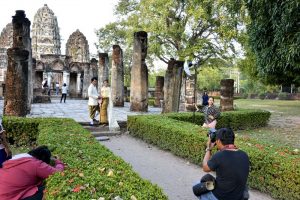
Negative impacts to a destination include economic leakage, damage to the natural environment and overcrowding to name a few.
Positive impacts to a destination include job creation, cultural heritage preservation and interpretation, wildlife preservation landscape restoration, and more.
Sustainable tourism is defined by the UN Environment Program and UN World Tourism Organization as “tourism that takes full account of its current and future economic, social and environmental impacts, addressing the needs of visitors, the industry, the environment and host communities.”
Additionally, they say that sustainable tourism “refers to the environmental, economic, and socio-cultural aspects of tourism development, and a suitable balance must be established between these three dimensions to guarantee its long-term sustainability” ( UNEP & UNWTO , 2005: 11-12. Making Tourism More Sustainable – A Guide for Policy Makers ).
Definition of Ecotourism
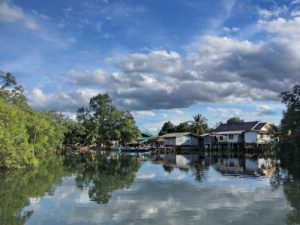
Fennell described it as such: “Ecotourism is a sustainable form of natural resource-based tourism that focuses primarily on experiencing and learning about nature, and which is ethically managed to be low-impact, non-consumptive, and locally-oriented. It typically occurs in natural areas, and should contribute to the conservation or preservation of such areas” (Fennell, 1999: 43. Ecotourism: An Introduction ).
The Mohonk Agreement (2000) , a proposal for international certification of Sustainable Tourism and Ecotourism, saw ecotourism as “sustainable tourism with a natural area focus, which benefits the environment and communities visited, and fosters environmental and cultural understanding, appreciation, and awareness.”
The ecotourism definition by the Global Ecotourism Network (GEN) : “Ecotourism is responsible travel to natural areas that conserves the environment, sustains the well-being of the local people, and creates knowledge and understanding through interpretation and education of all involved (visitors, staff and the visited).”
Definitions of Responsible Travel
Responsible Travel refers to the behavior of individual travelers aspiring to make choices according to sustainable tourism practices. The behaviors usually align with minimizing the negative impacts and maximizing positive ones when one visits a tourism destination.
Travelers that want to learn more about how to be a responsible traveler can visit the section on the GSTC website For Travelers .
Summary of the difference between Sustainable Tourism, Ecotourism, and Responsible Travel
Ecotourism is a niche segment of tourism in natural areas.
Sustainable Tourism does not refer to a specific type of tourism, rather it is an aspiration for the impacts of all forms of tourism to be sustainable for generations to come.
Responsible Travel is a term referring to the behavior and style of individual travelers. The behaviors align with making a positive impact to the destination rather than negative ones.
Sustainable Tourism and the GSTC Criteria

They are the result of a worldwide effort to develop a common language about sustainability in tourism. They are categorized in four pillars: (A) Sustainable management; (B) Socioeconomic impacts; (C) Cultural impacts; (D) Environmental impacts.
These standards were built on decades of prior work from industry experts around the globe. During the process of development, they were widely consulted in both developed and developing countries. They reflect our goal in attaining a global consensus on sustainable tourism.
The process of developing the Criteria was designed to adhere to the standards-setting code of the ISEAL Alliance. The ISEAL Alliance is the international body providing guidance for the management of sustainability standards in all sectors. That code is informed by relevant ISO standards .
Finally, the GSTC Criteria are the starting goals that businesses, governments, and destinations should achieve. Tourism destinations each have their own culture, environment, customs, and laws. Therefore, the Criteria are designed to be adapted to local conditions and supplemented by additional criteria for the specific location and activity.
There are three sets of Criteria
- GSTC Industry Criteria = relates to the sustainable management of private sector travel industry, focusing currently on Hotels and Tour Operators.
- GSTC Destination Criteria = relates to sustainable management of Tourism Destinations.
- GSTC MICE Criteria = relates to sustainable management of Venues, Event Organizers and Events & Exhibitions.
Learn more about Sustainable Tourism
Reading one article is not enough. The GSTC website offers those interested in learning more about sustainable tourism the needed resources. Make sure you visit the relevant pages for you:
- For Hotels & Accommodations
- For Tour Operators
- For Governments & Destinations
- For Corporate and Business Travel
You can also join one of the regular GSTC courses:
- Want to gain in-depth knowledge of the GSTC Criteria and understand sustainable tourism? The GSTC Sustainable Tourism course is for you.
- Engaged with corporate and business travel? The GSTC Sustainable Business Travel course is for you.
- Are you a hotelier or work in the hospitality sector? GSTC Sustainable Hotel course
GSTC Sustainable Tourism Training Schedule
✓ Gain in-depth knowledge of the GSTC Criteria, the global standard for sustainability in travel and tourism. ✓ Make informed decisions on how to implement sustainability practices for your company or destination. ✓ Get ready for developing viable and actionable sustainable tourism policies and practices for your organization
I’ve participated in the course to get a comprehensive overview of destination sustainability criteria. Much more than this, the course gave me the up-to-date analysis of current trends, and a huge number of relevant cases from the destinations, the industry networks and the service providers. I strongly recommend to attend the course.

My course facilitator and teacher (Ayako and Antje) went above and beyond to answer our questions and provide us with additional resources. The course content (the GSTC Criteria) was delivered in an understandable and organized way. Learning the GSTC Criteria and how it applies to our own projects, businesses, and destinations is integral to anyone wanting to do any kind of work in the future centered around travel. I appreciated that the course was delivered in an interactive way over Zoom, and not just something we watched on YouTube. For me, being able to interact with fellow students from around the world, was a big plus. Was well worth it, and I highly recommend the course!

This course has been very relevant and provides in-depth knowledge of GSTC criteria for sustainable practices for destinations as well as the travel industry [with] plenty of real life examples and share links to plenty of reading material throughout the course. … As we move forward during these difficult COVID times, learning our lessons on the damage to nature, it becomes all the more important for industry professionals to get trained and step up efforts to embrace sustainability in all aspects of tourism. Hence, I recommend this course to all industry professionals.

This course enables participants to connect with the GSTC team directly, over an easy to use platform and network around the world. Using real life examples and detail in each of the 4 sections of the GSTC.

The GSTC training was a great way to connect, network, and engage in mind-broadening and eye-opening discussions with others in the diverse field of sustainable tourism. I would highly recommend this as a starting point for anyone interested in the journey of regenerative and sustainable tourism.

The course was great and the on- the-go discussions added great value to keep abreast of trends from across the globe. Participants from various parts of the world brought in their experiences and made the course very interesting.

Hearing about actual destinations applying Sustainable Tourism initiatives and learning from real situations practicing Sustainable Tourism, as well as the related successes and challenges, was very informative and valuable. My favorite part was the unexpected camaraderie from and connections with the other participants. I genuinely enjoyed the online discussion, sharing of ideas, and breakout groups and, overall, meeting so many others who she a passion for Sustainable Tourism. Thank you, GSTC, for a great course!

A complete holistic approach to sustainable tourism. The comprehensive lessons given each week break down the GSTC Criteria and are paired with practical examples, international experts and ‘hands on’ online workshops. The opportunity to discuss and share insights from all the participants around the world not only contributes to my own knowledge but to also my professional network. I highly recommend this course for anyone discovering sustainable tourism.

The course is quick and handy way to immerse in the issues of Sustainability in Tourism and a great kick start in starting your own business or destination program. I could have had the course even longer and especially the live sessions were great to get to know some of the other participants and share their knowledge and experiences – best practices are the best way to get started and to get valuable information. Highly recommended!

The course was so informative and presented in an engaging & interesting way. The examples & speakers gave us a lot to think about and many tangible ways that we can make a difference in our travel business. Thank you!

This course has given me an approach to the GSTC Criteria, where the basic and complete structure to move forward on sustainable paths is visualized. The reflections generated through real examples, discussions and available material are key to better internalize what sustainability means. Ideas applicable to our business and our work area appear during the course that contribute positively to one’s reality. I will recommend this course, for its contribution to the objective, honest and constructive understanding of what sustainability is.

I can only highly recommend the course for every travel and tourism professional- it is a great motivational boost to get into action and helps me support destinations in bringing the idea of destination stewardship – an inclusive and holistic approach – alive. We do not need more and more tourists, we need sustainable tourism.

Taking the GSTC training at this point in time was extremely valuable. It gave me a sustainable tourism framework to help assess what I’ve been able to accomplish and also consider the role that sustainable experiential travel may mean as we begin to inch our way out of the world of zero tourism towards something likely new and different. One other great benefit of the training was starting to get acquainted and sharing with other participants and instructors from around the globe. These connections will be valuable for a very long time to come.

I found this online course well structured and enjoyable. The trainers are really inspiring, extremely knowledgeable about the field and very supportive. The live online sessions give a great introduction to key topics, and there are online lessons, discussion forums and reference material to deepen knowledge. I feel like I have access to so much wisdom, and it is great to be part of a global community of sustainable tourism practitioners.

Thank you GSTC for such a great course. The content was relevant, the case studies were inspiring and the course structure was spot on! I can’t wait to take my learnings and inspiration and activate it across regional destinations in Australia. Keep up the great work.

What I liked the most about this course is the well-defined structure, the opinion sharing with online classmates, and the up-to-date topics. It makes the experience much more effective and enjoyable.

Excellent course that sets the foundations for sustainable tourism practice.I was very new with sustainable tourism and now after the course I have very solid understanding and skills to apply to my job. In addition, the amazing network of professionals sharing ideas is another great tool!

This course provided me with a thorough understanding of how to implement sustainable travel practices. I will definitely integrate information from this training into my work with travel organizations and destinations to help them achieve short-term progress through a long-term strategy.

The GSTC training provides a comprehensive overview of key indicators for a holistic view of sustainable tourism. The training provided an excellent opportunity to network with other tourism professionals, and to share ideas, develop plans, and comment on sustainable tourism initiatives that are being implemented in a diverse array of locations globally. I’m grateful for the connections that I made and for the helpful feedback on ideas for improving sustainability in several operations.

Useful and inspiring! The way the course is organised with lots of practical experience from colleagues in the tourism sector is indeed the most useful and interesting part of the course, [making it easier] to approach the GSTC criteria.

The GSTC course was really great to me because it gave me an in-depth knowledge about sustainable tourism. The combination of the criteria explanation and the presentation from other experts was really great, as it gave us the know-how, lots of samples and case studies. Before joining this course, I had heard about the term sustainable tourism many times, but [was not sure] what it is all about and how we can achieve it. I am glad to have gained the bigger picture of sustainable tourism. I’m developing my village to be a community based tourism destination, and now I can adopt and apply the standard locally.
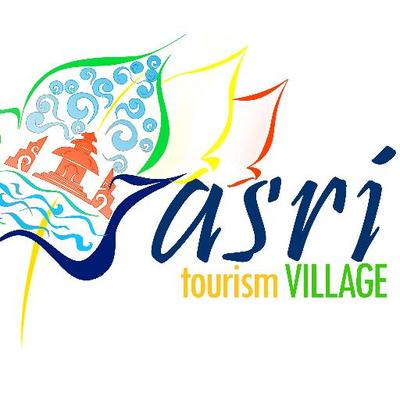
A great training program that gives the participants a thorough understanding on the sustainable management of both destinations and individual businesses. Anyone from the industry – from the business or the government side – should understand the bigger picture of the destination level management as well as the industrial level so that both public and private sectors can work together for a more sustainable tourism industry.

The GSTC Sustainable Tourism Training Program provided an up-to-date perspective and holistic approach on the topic. I really enjoyed taking part in the group discussions and hearing about the realities of other destinations and their challenges.

I think the training was very useful and gave me many insights that I will use in my daily work to develop more sustainable tourism. The training class was also a good group for networking.

The Global Sustainable Tourism Council (GSTC) is the most widely recognized institution for offering sustainability courses for tourism professionals.

This is a one-of-a-kind course that provides the tools in getting you started. Not to mention, you’re also collaborating with people and organizations across the globe facing similar challenges. The feedback from fellow students was invaluable and honestly, what better way to tackle some big challenges related to the environment than with people from different countries and backgrounds. I’d take this course again just for those connections!

The [GSTC course] has been a remarkable learning experience and a great introduction to sustainable tourism. The combination of online resources, discussion forums, weekly live events with guest presenters provides a deeper understanding and useful tools in sustainable tourism. The trainers have incredible expertise in both tourism and sustainability and share their knowledge and passion about current sustainability practices. I would highly recommend this course to everyone involved in the tourism industry or have a interest in sustainable tourism.
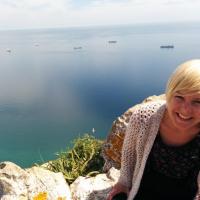
An excellent programme run by well qualified professional staff and trainers. The guest speakers were world class and materials industry leading. A definite must for any tourism professional who is serious about making sustainable impacts for the betterment of our industry.

Amazing learning experience. Exceeded my expectations by far. Excellently organized and facilitated. Great dynamics in discussions with course participants – so much to learn from. Highly valuable best practices and interactive modules really made the best learning experience I had until now! It really motivated and inspired me to continue on the road of global sustainable tourism.

The GSTC Sustainable Tourism Training gave me the tools and network to be able to work for a more sustainable tourism sector in the area where I’m based (South Sweden). The structure with the four principles makes it easy to follow and to discuss also outside the GSTC world. The examples from the other participants were great, and we will continue sharing good and bad examples from destinations all over the world.

To work on sustainability is a never-ending story and can be overwhelming at times. The GSTC training supports a structured approach toward continuous improvement. It provides applicable tools to evaluate our sustainability performance and guidance for setting long-term strategies. It allows you to break down this massive task into achievable working packages.

The GSTC training was a great first touch point for me into the world of sustainable tourism and destination management. I loved hearing case studies from around the world and real life examples on how the GSTC criteria can make a difference. The course has enabled me to start building on these criteria within my job.

The training has enable me to go through all the GSTC Criteria thoroughly with better knowledge of sustainable tourism standard and practices. It will be useful as basic guidelines for the Foundation to use these Criteria, as the destination wants to embark in becoming a sustainable tourism destination, aiming to become GSTC-Certified.

I would definitely recommend GSTC training to absolutely everyone in the tourism industry. The entire [GSTC] framework is extremely useful and important – a framework of values and ideas that is evolving, and that is meant for us a roadmap to make things better for people and companies that may be starting from different points in the journey towards sustainability.

The quality of this training was really first class; materials, presentations, trainer support, resources and discussions. The forum helped keep everything relevant and up to date, and I also liked the format of the live events. All guest presenters were excellent; I liked that they were sharing real life experiences and not just theoretical examples. From each and every live presentation I gained ideas, reinforcements to my own experiences and enthusiasm for what I and my colleagues are doing in our own part of the world.

The STTP programme has been a good introduction to the principles of sustainable tourism. It was a good mix of presentations and cases of sustainable tourism in real-life, insights from experts from various countries and across tourism sectors and explanation of key GSTC criteria. Participants were encouraged to share their experiences and observations through discussion forums and presentations, which made the sessions more lively. The final exam is recommended for those who wish to test their ability to put these principles to practice. I highly recommend this course to tourism industry professionals wishing to incorporate sustainable tourism management at work.

The GSTC training provided me with a deep understanding of the criteria. My fellow classmates were industry experts in various sectors from around the world, bringing the criteria to life with valuable examples/discussions of how they have implemented the very practices we were learning.

My first impression was the organization, it was perfect regarding the admin efforts and the learning tools. The course materials were really useful, as well as the live sessions from which I gained a deep understanding and experience from the other participants. I really want to have the chance to thank all the team who was involved, and of course I would recommend people working in the tourism industry to join this course

The training gave me a clear understanding of the challenges we face and the actions to take to make sustainability effective, [covering] each of the main areas in a systematic way with enough technical detail for those who needed it, without losing the less technical trainees (like myself) who needed to understand the broad overview of sustainable tourism practices

The overview of standards, coupled with best practice and real world examples has been very beneficial for my work in destination management and responsible tourism development. The ability to meet likeminded industry colleagues, who are working in this arena was also highly valuable.

Share This Story, Choose Your Platform!
Related posts.
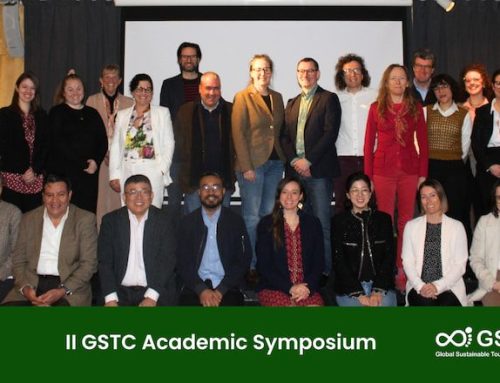
II GSTC Academic Symposium concluded successfully
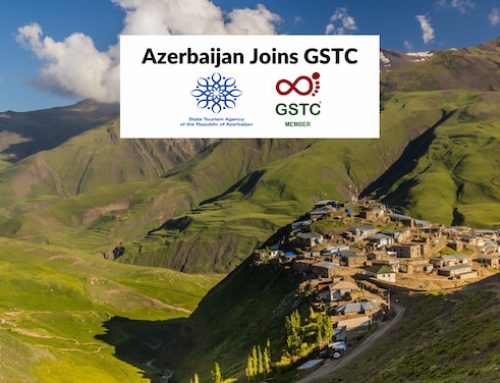
Azerbaijan joins and signs MOU with GSTC
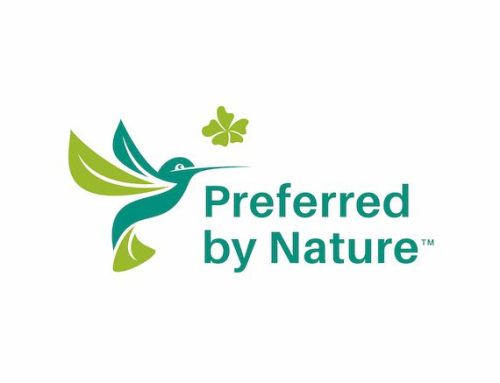
Preferred by Nature Standard gains GSTC-Recognized Standard Status
Let us take a walk to the sustainable tourism practices: a qualitative study through the lens of tourism experts
- Research Article
- Published: 04 January 2024
- Volume 31 , pages 12892–12915, ( 2024 )
Cite this article

- Vikas Arya 1 ,
- Vilte Auruskeviciene ORCID: orcid.org/0000-0002-1563-4052 2 ,
- Srishti Agarwal 3 ,
- Priyanka Kokatnur 3 ,
- Harish Kumar 4 &
- Rajeev Verma 5
417 Accesses
Explore all metrics
The rising opportunities of sustainable tourism have brought many policies to control the exploitation of the environment and increase the reach of luxurious, safe, and authentic experiences to the different segments of tourists. This study seeks to prioritize the variables influencing the development of sustainable tourism and pinpoint key success factors that align with the Sustainable Development Goals (SDGs). It adopts a tri-dimensional framework encompassing economic, social, and environmental aspects, further delineated into eleven sub-dimensions, to provide a quantitative evaluation of sustainable tourism. We conducted interviews with 26 tourism industry experts hailing from eight countries, analyzing their responses using interval type-2 fuzzy sets. The results underscore the critical role of specific components in advancing sustainable tourism. In the economic dimension, “financial resources and tourism costs” emerge as vital factors. In the social dimension, “health and safety” takes center stage, while “green infrastructure” plays a pivotal role in the environmental dimension. These findings underscore the significance of these aspects in promoting sustainable tourism. Furthermore, this study explores the strategic importance of sustainable tourism equity in shaping tourism planning and development for emerging markets.
This is a preview of subscription content, log in via an institution to check access.
Access this article
Price includes VAT (Russian Federation)
Instant access to the full article PDF.
Rent this article via DeepDyve
Institutional subscriptions
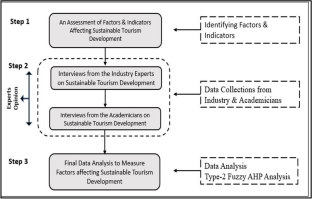
Source: Authors
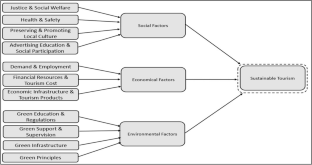
Similar content being viewed by others

Three pillars of sustainability: in search of conceptual origins

Impact of tourism development upon environmental sustainability: a suggested framework for sustainable ecotourism

The impact of social media marketing strategies on promoting sustainability of tourism with fuzzy cognitive mapping: a case of Kalanggaman Island (Philippines)
Data availability.
Data will be available on request.
Agarwal SA, Kasliwal N (2019) Indian consumer’s environmental consciousness and decision towards green services of hospitality industry. J Hosp Appl Res 14(2):22–40
Google Scholar
Ahmad N, Youjin L, Hdia M (2022) The role of innovation and tourism in sustainability: why is environment-friendly tourism necessary for entrepreneurship? J Clean Prod 379:134799. https://doi.org/10.1016/j.jclepro.2022.134799
Article Google Scholar
Alfaro Navarro JL, Andrés Martínez ME, Mondéjar Jiménez JA (2020) An approach to measuring sustainable tourism at the local level in Europe. Curr Issue Tour 23(4):423–437. https://doi.org/10.1080/13683500.2019.1579174
Andereck KL, Valentine KM, Knopf RC, Vogt CA, Knollenberg W (2021) Tourists’ willingness to conserve resources and reduce their carbon footprint in national parks. J Sustain Tour 29(4):499–516
Andria J, di Tollo G, Pesenti R (2019) A fuzzy evaluation of tourism sustainability. In Business and consumer analytics: New ideas pp 911–932. Springer, Cham. https://doi.org/10.1007/978-3-030-06222-4_24
Apak ÖC, Gürbüz A (2023) The effect of local food consumption of domestic tourists on sustainable tourism. J Retail Consum Serv 71:103192. https://doi.org/10.1016/j.jretconser.2022.103192
Arya V, Sethi D, Paul J (2019) Does digital footprint act as a digital asset? — enhancing brand experience through remarketing. Int J Inf Manage 49:142–156. https://doi.org/10.1016/j.ijinfomgt.2019.03.013
Arya V, Sharma S, Sethi D, Verma H, Shiva A (2018) Ties that bind tourists: embedding destination motivators to destination attachment: a study in the context of Kumbh Fair India. Asia Pacific J Tour Res 23(12):1160–1172. https://doi.org/10.1080/10941665.2018.1528992
Arya V, Sambyal R, Sharma A, Dwivedi YK (2023) Brands are calling your AVATAR in Metaverse—a study to explore XR‐based gamification marketing activities and consumer‐based brand equity in virtual world. Journal of Consumer Behaviour. https://doi.org/10.1002/cb.2214
Athari SA, Alola UV, Ghasemi M, Alola AA (2021) The (Un) sticky role of exchange and inflation rate in tourism development: insight from the low and high political risk destinations. Curr Issue Tour 24(12):1670–1685. https://doi.org/10.1080/13683500.2020.1798893
Balsalobre-Lorente D, Abbas J, He C, Pilař L, Shah SAR (2023a) Tourism, urbanization and natural resources rents matter for environmental sustainability: the leading role of AI and ICT on sustainable development goals in the digital era. Resour Policy 82:103445. https://doi.org/10.1016/j.resourpol.2023.103445
Balsalobre-Lorente D, Luzon LI, Usman M, Jahanger A (2023) The relevance of international tourism and natural resource rents in economic growth: fresh evidence from MINT countries in the digital era. Environ Sci Pollut Res 1–18. https://doi.org/10.1007/s11356-022-25022-0
Barbieri C, Sotomayor S, Gil Arroyo C (2020) Sustainable tourism practices in indigenous communities: the case of the Peruvian Andes. Tour Plann Dev 17(2):207–224. https://doi.org/10.1080/21568316.2019.1597760
Beames S, Mackenzie SH, Raymond E (2022) How can we adventure sustainably? A systematized review of sustainability guidance for adventure tourism operators. J Hosp Tour Manag 50:223–231. https://doi.org/10.1016/j.jhtm.2022.01.002
Becken S, Loehr J (2022) Tourism governance and enabling drivers for intensifying climate action. Journal of Sustainable Tourism 1–19. https://doi.org/10.1080/09669582.2022.2032099
Becken S, Stantic B, Chen JS (2020) Climate change and tourism: impacts and challenges. Tourism Review 75(1):46–60
Berno T, Rajalingam G, Miranda AI, Ximenes J (2022) Promoting sustainable tourism futures in Timor-Leste by creating synergies between food, place and people. J Sustain Tour 30(2–3):500–514. https://doi.org/10.1080/09669582.2021.1895819
Bodhanwala S, Bodhanwala R (2022) Exploring relationship between sustainability and firm performance in travel and tourism industry: a global evidence. Social Respons J 18(7):1251–1269. https://doi.org/10.1108/SRJ-09-2020-0360
Bramwell B, Lane B (2019) Critical research on the governance and management of tourism in protected areas. Curr Issue Tour 22(5):547–579
Briassoulis H (2002) Sustainable tourism and the question of the commons. Ann Tour Res 29(4):1065–1085. https://doi.org/10.1016/S0160-7383(02)00021-X
Bricker KS, Schultz J (2011) Sustainable tourism in the USA: a comparative look at the Global Sustainable Tourism Criteria. Tour Recreat Res 36(3):215–229
Bramwell B, Lane B (2011) Critical research on the governance of tourism and sustainability. J Sustain Tour 19(4–5):411–421. https://doi.org/10.1080/02508281.2011.11081668
Budeanu A, Miller G, Moscardo G, Ooi CS (2016) Sustainable tourism, progress, challenges and opportunities: an introduction. J Clean Prod 111:285–294. https://doi.org/10.1016/j.jclepro.2015.10.027
Buckley R (2012) Sustainable tourism: research and reality. Ann Tour Res 39(2):528–546. https://doi.org/10.1016/j.annals.2012.02.003
Article MathSciNet Google Scholar
Carlson J, Rahman MM, Rosenberger PJ III, Holzmüller HH (2016) Understanding communal and individual customer experiences in group-oriented event tourism: an activity theory perspective. J Mark Manag 32(9–10):900–925. https://doi.org/10.1080/0267257X.2016.1181099
Chandra P, Kumar J (2021) Strategies for developing sustainable tourism business in the Indian Himalayan Region: insights from Uttarakhand, the Northern Himalayan State of India. J Destin Mark Manag 19:100546. https://doi.org/10.1016/j.jdmm.2020.100546
Choe J, O’Regan M, Kimbu A, Lund NF, Ladkin A (2021) Quality of life perspectives for different social groups in a World Centre of Tourism and Leisure. Tour Stud 21(4):615–637. https://doi.org/10.1177/14687976211038758
Choi HSC, Sirakaya E (2005) Measuring residents’ attitude toward sustainable tourism: development of sustainable tourism attitude scale. J Travel Res 43(4):380–394. https://doi.org/10.1177/0047287505274651
Chong K, Balasingam AS (2019) Tourism sustainability: economic benefits and strategies for preservation and conservation of heritage sites in Southeast Asia. Tourism Review 74(2):268–279. https://doi.org/10.1108/TR-11-2017-0182
Darcy S, Cameron B, Pegg S (2010) Accessible tourism and sustainability: a discussion and case study. J Sustain Tour 18(4):515–537. https://doi.org/10.1080/09669581003690668
Da Silva J, Fernandes V, Limont M, Rauen WB (2020) Sustainable development assessment from a capitals perspective: analytical structure and indicator selection criteria. J Environ Manage 260:110147. https://doi.org/10.1016/j.jenvman.2020.110147
Article PubMed Google Scholar
Sausmarez De (2007) Crisis management, tourism and sustainability: the role of indicators. J Sustain Tour 15(6):700–714
Dolnicar S, Crouch GI, Long P (2008) Environment-friendly tourists: what do we really know about them? J Sustain Tour 16(2):197–210. https://doi.org/10.2167/jost653.0
Dong XD, Nguyen TQT (2022) Power, community involvement, and sustainability of tourism destinations. Tour Stud 23(1):62–79. https://doi.org/10.1177/14687976221144335
Dredge D, Scott N, Lechner AM, Dominey-Howes D (2020) Spatial and coastal tourism. In Tourism and Water (pp. 109–126). Channel View Publications
Durband R (2021) Establishing sustainability standards in tourism. Handbook for sustainable tourism practitioners: the essential toolbox, 233
El Atiek S, Goutte S (2023) Impacts, sustainability, and resilience on the Egyptian tourism and hospitality industry after the Russian airplane crash in 2015. Res Int Bus Financ 64:101866. https://doi.org/10.1016/j.ribaf.2022.101866
El-Masry EA, El-Sayed MK, Awad MA, El-Sammak AA, Sabarouti MAE (2022) Vulnerability of tourism to climate change on the Mediterranean coastal area of El Hammam–EL Alamein Egypt. Environ Dev Sustain 24(1):1145–1165. https://doi.org/10.1007/s10668-021-01488-9
Eslami S, Khalifa Z, Mardani A, Streimikiene D, Han H (2019) Community attachment, tourism impacts, quality of life and residents’ support for sustainable tourism development. J Travel Tour Mark 36(9):1061–1079. https://doi.org/10.1080/10548408.2019.1689224
Falatoonitoosi E, Schaffer V, Kerr D (2022) Does sustainable tourism development enhance destination prosperity? J Hosp Tourism Res 46(5):1056–1082. https://doi.org/10.1177/1096348020988328
Farrell B, Twining-Ward L (2005) Seven steps towards sustainability: tourism in the context of new knowledge. J Sustain Tour 13(2):109–122. https://doi.org/10.1080/09669580508668481
Firman A, Moslehpour M, Qiu R, Lin PK, Ismail T, Rahman FF (2023) The impact of eco-innovation, ecotourism policy and social media on sustainable tourism development: evidence from the tourism sector of Indonesia. Econ Res - Ekonomska Istraživanja 36(2):2143847. https://doi.org/10.1080/1331677X.2022.2143847
Fong SF, Lo MC, Songan P et al (2017) Self-efficacy and sustainable rural tourism development: Local communities’ perspectives from Kuching, Sarawak. Asia Pacific J Tour Res 22(2):147–159. https://doi.org/10.1080/10941665.2016.1208668
Font X, Torres-Delgado A, Crabolu G, Palomo Martinez J, Kantenbacher J, Miller G (2023) The impact of sustainable tourism indicators on destination competitiveness: The European Tourism Indicator System. J Sustain Tour 31(7):1608–1630. https://doi.org/10.1080/09669582.2021.1910281
Garau G, Carboni D, Karim El Meligi A (2022) Economic and environmental impact of the tourism carrying capacity: a local-based approach. J Hosp Tour Res 46(7):1257–1273. https://doi.org/10.1177/10963480211031426
Geoffrey Deladem T, Xiao Z, Siueia TT, Doku S, Tettey I (2021) Developing sustainable tourism through public-private partnership to alleviate poverty in Ghana. Tour Stud 21(2):317–343. https://doi.org/10.1177/1468797620955250
Ghoochani O, Ghanian M, Khosravipour B, Crotts JC (2020) Sustainable tourism development performance in the wetland areas: a proposed composite index. Tourism Review. https://doi.org/10.1108/TR-02-2019-0061
Garrig’os-Sim’on FJ, Gald’on-Salvador JL and Gil-Pechu’an I (2015) The economic sustainability of tourism growth through leakage calculation. Tourism Econ 21(4):721–739. https://doi.org/10.5367/te.2014.0372
Ghahramani L, Khalilzadeh J, Kc B (2018) Tour guides’ communication ecosystems: an inferential social network analysis approach. Inform Technol Tour 20(1):103–130. https://doi.org/10.1007/s40558-018-0114-y
Go H, Kang M (2023) Metaverse tourism for sustainable tourism development: Tourism agenda 2030. Tourism Review 78(2):381–394. https://doi.org/10.1108/TR-02-2022-0102
Gössling S (2021) Tourism, technology and ICT: a critical review of affordances and concessions. J Sustain Tour 29(5):733–750. https://doi.org/10.1080/09669582.2021.1873353
Gössling S, Scott D, Hall CM (2020) Tourism and water: interactions, impacts, and challenges. Annu Rev Environ Resour 45:269–294
Gossling S, Scott D, Hall CM (2018) Tourism and Water (Vol. 13). Channel View Publications
Graci S, Maher PT, Peterson B, Hardy A, Vaugeois N (2021) Thoughts from the think tank: lessons learned from the sustainable Indigenous tourism symposium. J Ecotour 20(2):189–197. https://doi.org/10.1080/14724049.2019.1583754
Grilli G, Tyllianakis E, Luisetti T, Ferrini S, Turner RK (2021) Prospective tourist preferences for sustainable tourism development in Small Island Developing States. Tour Manage 82:104178. https://doi.org/10.1016/j.tourman.2020.104178
GSTC (2021) Who We Are. Global Sustainable Tourism Council. Accessed during October 2023, https://www.gstcouncil.org/who-we-are/
GSTC (2022) The GSTC criteria: the global baseline standards for sustainability in travel and tourism. Global Sustainable Tourism Council. Accessed during October 2023, https://www.gstcouncil.org/the-gstc-criteria/
GSTC (2023) Certification. Global Sustainable Tourism Council. Accessed during October 2023, https://www.gstcouncil.org/certification/
Hall CM (2019) Constructing sustainable tourism development: the 2030 agenda and the managerial ecology of sustainable tourism. J Sustain Tour 27(7):1044–1060. https://doi.org/10.1080/09669582.2018.1560456
Hall CM, Gossling S, Scott D (Eds.) (2015) The Routledge handbook of tourism and sustainability. Routledge
Hardy A, Beeton RJ, Pearson L (2002) Sustainable tourism: an overview of the concept and its position in relation to conceptualisations of tourism. J Sustain Tour 10(6):475–496. https://doi.org/10.1080/09669580208667183
Hamid MA, Isa SM, Kiumarsi S (2021) Sustainable tourism practices and business performance from the tour operators’ perspectives. Anatolia 32(1):23–32. https://doi.org/10.1080/13032917.2020.1830135
Han H (2021) Consumer behavior and environmental sustainability in tourism and hospitality: a review of theories, concepts, and latest research. J Sustain Tour 29(7):1021–1042. https://doi.org/10.1080/09669582.2021.1903019
He LY, Li H, Bi JW, Yang JJ, Zhou Q (2022) The impact of public health emergencies on hotel demand—estimation from a new foresight perspective on the COVID-19. Annals of Tourism Research, 94, May 2022. https://doi.org/10.1016/j.annals.2022.103402
Hamid MA, Isa SM, Kiumarsi S (2020) Sustainable tourism practices and business performance from the tour operators’ perspectives. Anatolia 1–10. https://doi.org/10.1080/13032917.2020.1830135
Higgins-Desbiolles F, Carnicelli S, Krolikowski C, Wijesinghe G, Boluk K (2019) Degrowing tourism: rethinking tourism. J Sustain Tour 27(12):1926–1944. https://doi.org/10.1080/09669582.2019.1601732
Higgins-Desbiolles F (2018) Sustainable tourism: sustaining tourism or something more? Tour Manage Perspect 25:157–160. https://doi.org/10.1016/j.tmp.2017.11.017
Higuchi Y, Yamanaka Y (2019) The potential value of research-based evidence in destination management: the case of Kamikawa. Japan Tour Rev 74(2):166–178. https://doi.org/10.1108/TR-11-2017-0188
Iorio M, Corsale A (2013) Diaspora and tourism: Transylvanian Saxons visiting the homeland. Tour Geogr 15(2):198–232. https://doi.org/10.1080/14616688.2012.647327
Iqbal A, Ramachandran S, Siow ML, Subramaniam T, Afandi SHM (2022) Meaningful community participation for effective development of sustainable tourism: bibliometric analysis towards a quintuple helix model. J Outdoor Recreat Tour 39:100523. https://doi.org/10.1016/j.jort.2022.100523
Ivanov S, Gavrilina M, Webster C, Ralko V (2017) Impacts of political instability on the tourism industry in Ukraine. J Policy Res Tourism Leisure Events 9(1):100–127. https://doi.org/10.1080/19407963.2016.1209677
Ivars-Baidal JA, Vera-Rebollo JF, Perles-Ribes J, Femenia-Serra F, Celdrán-Bernabeu MA (2023) Sustainable tourism indicators: what’s new within the smart city/destination approach? J Sustain Tour 31(7):1556–1582
Iversen R (2022). Cultural exchange in sustainable tourism: a literature review. Current Issues in Tourism, 1–16
Jabbour CJC, Fiorini PDC, Wong CW, Jugend D, Jabbour ABLDS, Seles BMRP, ... et al (2020) First-mover firms in the transition towards the sharing economy in metallic natural resource-intensive industries: implications for the circular economy and emerging industry 4.0 technologies. Resources Policy 66:101596. https://doi.org/10.1016/j.resourpol.2020.101596
Kahraman C (Ed.) (2008) Fuzzy multi-criteria decision making: theory and applications with recent developments (Vol. 16). Springer Science and Business Media
Kahraman C, Öztayşi B, Sarı İU, Turanoğlu E (2014) Fuzzy analytic hierarchy process with interval type-2 fuzzy sets. knowledge-Based Systems 59:48–57. https://doi.org/10.1016/j.knosys.2014.02.001
Karnik NN, Mendel JM, Liang Q (1999) Type-2 fuzzy logic systems. IEEE Trans Fuzzy Syst 7(6):643–658. https://doi.org/10.1109/91.811231
Kaefer F (2022) Linda Veråsdal on ethical travel and responsible tourism in the Gambia. In Sustainability leadership in tourism: interviews, insights, and knowledge from practice pp 405–409. Cham: Springer International Publishing. https://doi.org/10.1007/978-3-031-05314-6_64
Kamata H (2022) Tourist destination residents’ attitudes towards tourism during and after the COVID-19 pandemic. Curr Issue Tour 25(1):134–149
Katemliadis I, Kolongou ES, Drousiotis P (2021) Rising sustainability standards: the Cyprus sustainable tourism initiative. Worldwide Hosp Tour Themes 13(6):754–762. https://doi.org/10.1080/13683500.2021.1881452
Kerdpitak C (2022) The effects of innovative management, digital marketing, service quality and supply chain management on performance in cultural tourism business. Uncertain Supply Chain Manage 10(3):771–778. https://doi.org/10.5267/j.uscm.2022.4.005
Ketter E (2020) Millennial travel: tourism micro-trends of European Generation Y. J Tour Futures 7(2):192–196. https://doi.org/10.1108/JTF-10-2019-0106
Komppula R (2014) The role of individual entrepreneurs in the development of competitiveness for a rural tourism destination—a case study. Tour Manage 40:361–371. https://doi.org/10.1016/j.tourman.2013.07.007
Kim YJ, Palakurthi R, Hancer M (2012) The environmentally friendly programs in hotels and customers’ intention to stay: an online survey approach. Int J Hosp Tour Adm 13(3):195–214. https://doi.org/10.1080/15256480.2012.698169
Kilic M, Kaya I (2015) Investment project evaluation by a decision making methodology based on type-2 fuzzy sets. Appl Soft Comput 27:399–410. https://doi.org/10.1016/j.asoc.2014.11.028
Klintman M (2012) Issues of scale in the global accreditation of sustainable tourism schemes: toward harmonized re-embeddedness?. Sustainability: Science, Practice and Policy 8(1):59–69. https://doi.org/10.1080/15487733.2012.11908085
Kularatne T, Wilson C, Månsson J, Hoang V, Lee (2019) Do environmentally sustainable practices make hotels more efficient? A study of major hotels in Sri Lanka. Tourism Management 71:213-225 https://doi.org/10.1016/j.tourman.2018.09.009
Kumar A, Misra SC, Chan FT (2022) Leveraging AI for advanced analytics to forecast altered tourism industry parameters: a COVID-19 motivated study. Expert Syst Appl 210:118628. https://doi.org/10.1016/j.eswa.2022.118628
Article PubMed PubMed Central Google Scholar
Kuo FI, Fang WT, LePage BA (2022) Proactive environmental strategies in the hotel industry: eco-innovation, green competitive advantage, and green core competence. J Sustain Tour 30(6):1240–1261. https://doi.org/10.1080/09669582.2021.1931254
Lasso A, Dahles H (2018) Are tourism livelihoods sustainable? Tourism development and economic transformation on Komodo Island, Indonesia. Asia Pacific J Tour Res 23(5):473–485. https://doi.org/10.1080/10941665.2018.1467939
Lee CK, Olya H, Ahmad MS, Kim KH, Oh MJ (2021) Sustainable intelligence, destination social responsibility, and pro-environmental behaviour of visitors: evidence from an eco-tourism site. J Hosp Tour Manag 47:365–376. https://doi.org/10.1016/j.jhtm.2021.04.010
Lee SW, Xue K (2020) A model of destination loyalty: Integrating destination image and sustainable tourism. Asia Pacific J Tour Res 25(4):393–408. https://doi.org/10.1080/10941665.2020.1713185
Liburd JJ, Edwards D (eds) (2010) Understanding the sustainable development of tourism. Goodfellow, Oxford, pp 19–44
Liu CH, Jiang JF, Gan B (2021) The antecedent and consequence behaviour of sustainable tourism: integrating the concepts of marketing strategy and destination image. Asia Pacific J Tour Res 26(8):829–848. https://doi.org/10.1080/10941665.2021.1908384
Liu CR, Lin WR, Wang YC, Chen SP (2019) Sustainability indicators for festival tourism: a multi-stakeholder perspective. J Qual Assur Hosp Tour 20(3):296–316. https://doi.org/10.1080/1528008X.2018.1530165
Liu-Lastres B, Wen H, Huang WJ (2023) A reflection on the Great Resignation in the hospitality and tourism industry. Int J Contemp Hosp Manag 35(1):235–249. https://doi.org/10.1108/IJCHM-05-2022-0551
Liu T, Juvan E, Qiu H, Dolnicar S (2022) Context-and culture-dependent behaviors for the greater good: a comparative analysis of plate waste generation. J Sustain Tour 30(6):1200–1218. https://doi.org/10.1080/09669582.2021.1918132
Liu Z (2003) Sustainable tourism development: a critique. J Sustain Tour 11(6):459–475. https://doi.org/10.1080/09669580308667216
Lopes HS, Remoaldo PC, Ribeiro V, Martin-Vide J (2022) Pathways for adapting tourism to climate change in an urban destination—evidences based on thermal conditions for the Porto Metropolitan Area (Portugal). J Environ Manage 315:115161. https://doi.org/10.1016/j.jenvman.2022.115161
Lu J, Nepal SK (2009) Sustainable tourism research: an analysis of papers published in the Journal of Sustainable Tourism. J Sustain Tour 17(1):5–16. https://doi.org/10.1080/09669580802582480
Mamirkulova G, Mi J, Abbas J, Mahmood S, Mubeen R, Ziapour A (2020) New Silk Road infrastructure opportunities in developing tourism environment for residents better quality of life. Global Ecol Conserv 24:e01194. https://doi.org/10.1016/j.gecco.2020.e01194
Mathew PV (2022) Sustainable tourism development: discerning the impact of responsible tourism on community well-being. J Hosp Tour Insights 5(5):987–1001. https://doi.org/10.1108/JHTI-02-2021-0052
Millar M, Baloglu S (2009) A green room experience: a comparison of business and leisure travelers’ preferences. Hospitality Management 1–12
MacKenzie N, Gannon MJ (2019) Exploring the antecedents of sustainable tourism development. Int J Contemp Hosp Manag 31(6):2411–2427. https://doi.org/10.1108/IJCHM-05-2018-0384
Moayerian N, McGehee NG, Stephenson MO Jr (2022) Community cultural development: exploring the connections between collective art making, capacity building and sustainable community-based tourism. Ann Tour Res 93:103355. https://doi.org/10.1016/j.annals.2022.103355
Molden O, Abrams J, Davis EJ, Moseley C (2017) Beyond localism: the micropolitics of local legitimacy in a community-based organization. J Rural Stud 50:60–69. https://doi.org/10.1016/j.jrurstud.2017.01.001
Monaco S (2018) Tourism and the new generations: emerging trends and social implications in Italy. J Tour Futures 4(1):7–15. https://doi.org/10.1108/JTF-12-2017-0053
Mowforth M, Munt I (2019) Tourism and sustainability: development, globalisation, and new tourism in the third world. Routledge
Moyle BD, Weaver DB, Gössling S, McLennan CL, Hadinejad A (2022) Are water-centric themes in sustainable tourism research congruent with the UN Sustainable Development Goals? J Sustain Tour 30(8):1821–1836. https://doi.org/10.1080/09669582.2022.2083903
Nash D, Butler R (1990) Towards sustainable tourism. Tour Manage 11(3):263–264
Nguyen TQT, Young T, Johnson P, Wearing S (2019) Conceptualising networks in sustainable tourism development. Tour Manage Perspect 32:100575. https://doi.org/10.1016/j.tmp.2019.100575
Nok LC, Suntikul W, Agyeiwaah E, Tolkach D (2017) Backpackers in Hong Kong–motivations, preferences and contribution to sustainable tourism. J Travel Tour Mark 34(8):1058–1070. https://doi.org/10.1080/10548408.2016.1276008
Nunkoo R, Sharma A, Rana NP, Dwivedi YK, Sunnassee VA (2021) Advancing sustainable development goals through interdisciplinarity in sustainable tourism research. Journal of Sustainable Tourism 1–25. https://doi.org/10.1080/09669582.2021.2004416
O’Hare D, Pegoraro A, Scarles C (2020) “Instagrammability”: an exploration of social media engagement and destination image in organic contexts. Curr Issue Tour 23(1):1–18
Pan SY, Gao M, Kim H, Shah KJ, Pei SL, Chiang PC (2018) Advances and challenges in sustainable tourism toward a green economy. Sci Total Environ 635:452–469. https://doi.org/10.1016/j.scitotenv.2018.04.134
Article CAS PubMed ADS Google Scholar
Partanen M, Sarkki S (2021) Social innovations and sustainability of tourism: Insights from public sector in Kemi Finland. Tourist Studies 21(4):550–571. https://doi.org/10.1177/14687976211040246
Poudel S, Nyaupane GP, Budruk M (2016) Stakeholders’ perspectives of sustainable tourism development: a new approach to measuring outcomes. J Travel Res 55(4):465–480. https://doi.org/10.1177/0047287514563166
Rahmadian E, Feitosa D, Zwitter A (2022) A systematic literature review on the use of big data for sustainable tourism. Curr Issue Tour 25(11):1711–1730. https://doi.org/10.1080/13683500.2021.1974358
Rasoolimanesh SM, Ramakrishna S, Hall CM, Esfandiar K, Seyfi S (2023) A systematic scoping review of sustainable tourism indicators in relation to the sustainable development goals. J Sustain Tour 31(7):1497–1517. https://doi.org/10.1080/09669582.2020.1775621
Rastegar R, Ruhanen L (2021) A safe space for local knowledge sharing in sustainable tourism: an organisational justice perspective. Journal of Sustainable Tourism 1–17. https://doi.org/10.1080/09669582.2021.1929261
Rodríguez-Díaz B, Pulido-Fernández JI (2020) Sustainability as a key factor in tourism competitiveness: a global analysis. Sustainability 12(1):51. https://doi.org/10.3390/su12010051
Roxas FMY, Rivera JPR, Gutierrez ELM (2020-a) Framework for creating sustainable tourism using systems thinking. Current Issues in Tourism 23(3):280–296. https://doi.org/10.1080/13683500.2018.1534805
Roxas FMY, Rivera JPR, Gutierrez ELM (2020b) Mapping stakeholders’ roles in governing sustainable tourism destinations. Journal of Hospitality and Tourism Management 45:387–398. https://doi.org/10.1016/j.jhtm.2020.09.005
Saaty TL (1980) The analytic hierarchy process: planning, priority setting, resources allocation. McGraw-Hill, London
Šagovnović I, Stamenković I (2022) Investigating values of green marketing tools in predicting tourists’ eco-friendly attitudes and behavior. Journal of Ecotourism 1–23. https://doi.org/10.1080/14724049.2022.2075003
Sahoo BK, Nayak R, Mahalik MK (2022) Factors affecting domestic tourism spending in India. Ann Tour Res Empirical Insights 3(2):100050. https://doi.org/10.1016/j.annale.2022.100050
Santos M, Veiga C, Santos JAC, Águas P (2022) Sustainability as a success factor for tourism destinations: a systematic literature review. Worldwide Hosp Tour Themes 14(1):20–37. https://doi.org/10.1108/WHATT-10-2021-0139
Sarı IU, Öztayşi B, Kahraman C (2013) Fuzzy analytic hierarchy process using type-2 fuzzy sets: an application to warehouse location selection. In Multicriteria decision aid and artificial intelligence pp285–308. John Wiley and Sons, Ltd. https://doi.org/10.1002/9781118522516.ch12
Schmude J, Zavareh S, Schwaiger KM, Karl M (2020) Micro-level assessment of regional and local disaster impacts in tourist destinations. In Tourism in changing natural environments pp. 98–116. Routledge
Scott D, Gössling S (2022) A review of research into tourism and climate change—launching the annals of tourism research curated collection on tourism and climate change. Ann Tour Res 95:103409. https://doi.org/10.1016/j.annals.2022.103409
Shafiee S, Ghatari AR, Hasanzadeh A, Jahanyan S (2019) Developing a model for sustainable smart tourism destinations: a systematic review. Tour Manage Perspect 31:287–300
Shafiee S, Jahanyan S, Ghatari AR, Hasanzadeh A (2023) Developing sustainable tourism destinations through smart technologies: a system dynamics approach. J Simul 17(4):477–498. https://doi.org/10.1080/17477778.2022.2030656
Shang Y, Lian Y, Chen H, Qian F (2023) The impacts of energy resource and tourism on green growth: evidence from Asian economies. Resour Policy 81:103359. https://doi.org/10.1016/j.resourpol.2023.103359
Sharif A, Afshan S, Nisha N (2017) Impact of tourism on CO 2 emission: evidence from Pakistan. Asia Pacific J Tour Res 22(4):408–421. https://doi.org/10.1080/10941665.2016.1273960
Sharma K, Arya V, Mathur HP (2023) New higher education policy and strategic plan: commensurate India’s higher education in global perspective. FIIB Business Review 23197145221125351
Sharpley R (2023) Sustainable tourism governance: local or global? Tour Recreat Res 48(5):809–812. https://doi.org/10.1080/02508281.2022.2040295
Sharpley R (2021) On the need for sustainable tourism consumption. Tour Stud 21(1):96–107. https://doi.org/10.1177/1468797620986087
Sharpley R (2000) Tourism and sustainable development: Exploring the theoretical divide. J Sustain Tour 8(1):1–19. https://doi.org/10.1080/09669580008667346
Shu H, Yu Q, Liu K, Wang A, Zha J (2022) Understanding wage differences across tourism-characteristic sectors: insights from an extended input-output analysis. J Hosp Tour Manag 51:88–104. https://doi.org/10.1016/j.jhtm.2022.02.030
Sisneros-Kidd AM, Monz C, Hausner V, Schmidt J, Clark D (2019) Nature-based tourism, resource dependence, and resilience of Arctic communities: framing complex issues in a changing environment. J Sustain Tour 27(8):1259–1276. https://doi.org/10.1080/09669582.2019.1612905
Sobaih AEE, Elshaer I, Hasanein AM, Abdelaziz AS (2021) Responses to COVID-19: The role of performance in the relationship between small hospitality enterprises’ resilience and sustainable tourism development. Int J Hosp Manag 94:102824. https://doi.org/10.1016/j.ijhm.2020.102824
Sørensen EB, Hjalager AM (2020) Conspicuous non-consumption in tourism: non-innovation or the innovation of nothing? Tour Stud 20(2):222–247. https://doi.org/10.1177/1468797619894463
Streimikiene D, Svagzdiene B, Jasinskas E, Simanavicius A (2021) Sustainable tourism development and competitiveness: the systematic literature review. Sustain Dev 29(1):259–271. https://doi.org/10.1002/sd.2133
Strzelecka M, Dąbrowski JM, Uramowska M (2021) A review of environmental sustainability in tourism. J Clean Prod 279:123748
Sullivan K, Thomas S, Rosano M (2018) Using industrial ecology and strategic management concepts to pursue the Sustainable Development Goals. J Clean Prod 174:237–246. https://doi.org/10.1016/j.jclepro.2017.10.201
Sun L, Wang Y (2021) Global economic performance and natural resources commodity prices volatility: evidence from pre and post COVID-19 era. Resour Policy 74:102393. https://doi.org/10.1016/j.resourpol.2021.102393
Sun YY, Li M, Lenzen M, Malik A, Pomponi F (2022) Tourism, job vulnerability and income inequality during the COVID-19 pandemic: a global perspective. Ann Tour Res Empirical Insights 3(1):100046. https://doi.org/10.1016/j.annale.2022.100046
Terry Mok Connie Lam (1998) Hotel and tourism development in Vietnam. Journal of Travel and Tourism Marketing 7(1):85-91. https://doi.org/10.1300/J073v07n01_06
Thapa K, King D, Banhalmi-Zakar Z, Diedrich A (2022) Nature-based tourism in protected areas: a systematic review of socio-economic benefits and costs to local people. International Journal of Sustainable Development and World Ecology 29(7):625–640 https://doi.org/10.1080/13504509.2022.2073616
Tolkach D, King B, Pearlman M (2013) An attribute-based approach to classifying community-based tourism networks. Tour Plann Dev 10(3):319–337. https://doi.org/10.1080/21568316.2012.747985
Torres-Delgado A, Saarinen J (2017) Using indicators to assess sustainable tourism development: a review. New research paradigms in tourism geography, 31–47
Tuan VK, Rajagopal P (2019) Analyzing factors affecting tourism sustainable development towards Vietnam in the new era. Eur J Business Innov Res 7(1):30–42
Tzschentke N, Kirk D, Lynch PA (2004) Reasons for going green in serviced accommodation establishments. Int J Contemp Hosp Manag 16(2):116–124. https://doi.org/10.1108/09596110410520007
UNWTO (2020) Sustainable Development Goals. United Nations World Tourism Organization. Accessed during October 2023, https://www.unwto.org/sustainable-development-goals
UNWTO (2018) Tourism and the SDGs: Journey to 2030. World Tourism Organization
Valenti WC, Kimpara JM, Preto BDL, Moraes-Valenti P (2018) Indicators of sustainability to assess aquaculture systems. Ecol Ind 88:402–413. https://doi.org/10.1016/j.ecolind.2017.12.068
Verma R, Arya V, Thomas A, Bolognesi E, Mueller J (2023) Does startup culture in the emerging country grow around societal sustainability? An empirical study through the lens of co-creational capital and green intellect. J Intellect Cap 24(4):1047–1074
Vespestad MK, Lindberg F, Mossberg L (2019) Value in tourist experiences: How nature-based experiential styles influence value in climbing. Tour Stud 19(4):453–474. https://doi.org/10.1177/1468797619837966
Weaver DB, Moyle B, McLennan CLJ (2022) The citizen within: positioning local residents for sustainable tourism. J Sustain Tour 30(4):897–914. https://doi.org/10.1080/09669582.2021.1903017
Westoby R, Gardiner S, Carter RW, Scott N (2021) Sustainable livelihoods from tourism in the “10 New Balis” in Indonesia. Asia Pacific J Tour Res 26(6):702–716. https://doi.org/10.1080/10941665.2021.1908386
World Tourism Organization (WTO) (2019), International tourism results 2018 and outlook 2019. http://cf.cdn.unwto.org/sites/all/files/pdf/unwto_barometer_jan19_presentation_en.pdf (accessed 24 August 2019)
World Travel and Tourism Council (WTTC) represents the Travel and Tourism Sector globally (2020), Accessed at https://wttc.org/ retrieved on 15 January 2020
Wu JS, Barbrook-Johnson P, Font X (2021) Participatory complexity in tourism policy: understanding sustainability programmes with participatory systems mapping. Ann Tour Res 90:103269. https://doi.org/10.1016/j.annals.2021.103269
Zadeh L (1975) The concept of a linguistic variable and its application to approximate reasoning. Prt I. Inform Sci 8(3):199–249. https://doi.org/10.1016/0020-0255%2875%2990036-5
Zhang J (2016) Weighing and realizing the environmental, economic and social goals of tourism development using an analytic network process-goal programming approach. J Clean Prod 127:262–273. https://doi.org/10.1016/j.jclepro.2016.03.131
Download references
Author information
Authors and affiliations.
Rabat Business School, International University of Rabat, Rabat, Morocco
ISM University of Management and Economics: ISM Vadybos Ir Ekonomikos Universitetas, Gedimino St. 7, 01103, Vilnius, Lithuania
Vilte Auruskeviciene
School of Management, MIT World Peace University, Pune, India
Srishti Agarwal & Priyanka Kokatnur
Great Lakes Institute of Management, Gurgaon Campus, Gurgaon, India
Harish Kumar
Indian Institute of Management, Ranchi, India
Rajeev Verma
You can also search for this author in PubMed Google Scholar
Contributions
All authors contributed to the study’s conception and design. Vikas Arya conducted the analysis of data and provided an interpretation of the findings. Vilte Auruskeviciene wrote the manuscript draft and ensured consistency in referencing and citation formatting. Srishti Agarwal collected data, collaborated with Vikas Arya to analyze the data, and contributed to the discussion of the findings. Priyanka Kokatnur contributed to the research methodology development and data collection. Harish Kumar provided insights to the theoretical and managerial aspects of the study and contributed to the discussion section. Rajeev Verma conducted a literature review and collaborated with Vilte Auruskeviciene to integrate the literature review into the manuscript. All authors provided comments on previous versions of the manuscript, and they all read and approved the final manuscript.
Corresponding author
Correspondence to Vilte Auruskeviciene .
Ethics declarations
Ethics approval.
Not applicable.
Consent to participate
Consent for publication, competing interests.
The authors declare no competing interests.
Additional information
Responsible Editor: Philippe Garrigues
Publisher's Note
Springer Nature remains neutral with regard to jurisdictional claims in published maps and institutional affiliations.
Rights and permissions
Springer Nature or its licensor (e.g. a society or other partner) holds exclusive rights to this article under a publishing agreement with the author(s) or other rightsholder(s); author self-archiving of the accepted manuscript version of this article is solely governed by the terms of such publishing agreement and applicable law.
Reprints and permissions
About this article
Arya, V., Auruskeviciene, V., Agarwal, S. et al. Let us take a walk to the sustainable tourism practices: a qualitative study through the lens of tourism experts. Environ Sci Pollut Res 31 , 12892–12915 (2024). https://doi.org/10.1007/s11356-023-31503-7
Download citation
Received : 15 June 2023
Accepted : 08 December 2023
Published : 04 January 2024
Issue Date : February 2024
DOI : https://doi.org/10.1007/s11356-023-31503-7
Share this article
Anyone you share the following link with will be able to read this content:
Sorry, a shareable link is not currently available for this article.
Provided by the Springer Nature SharedIt content-sharing initiative
- Sustainable tourism
- Eco-tourism
- AHP-type 2 fuzzy test
- Responsible consumers
- Tourism sustainable equity
- Tourism industry
- Green services
- SDGs in tourism
- Find a journal
- Publish with us
- Track your research
- Tools and Resources
- Customer Services
- Agriculture and the Environment
- Case Studies
- Chemistry and Toxicology
- Environment and Human Health
- Environmental Biology
- Environmental Economics
- Environmental Engineering
- Environmental Ethics and Philosophy
- Environmental History
- Environmental Issues and Problems
- Environmental Processes and Systems
- Environmental Sociology and Psychology
- Environments
- Framing Concepts in Environmental Science
- Management and Planning
- Policy, Governance, and Law
- Quantitative Analysis and Tools
- Sustainability and Solutions
- Share This Facebook LinkedIn Twitter
Article contents
The role of tourism in sustainable development.
- Robert B. Richardson Robert B. Richardson Community Sustainability, Michigan State University
- https://doi.org/10.1093/acrefore/9780199389414.013.387
- Published online: 25 March 2021
Sustainable development is the foundational principle for enhancing human and economic development while maintaining the functional integrity of ecological and social systems that support regional economies. Tourism has played a critical role in sustainable development in many countries and regions around the world. In developing countries, tourism development has been used as an important strategy for increasing economic growth, alleviating poverty, creating jobs, and improving food security. Many developing countries are in regions that are characterized by high levels of biological diversity, natural resources, and cultural heritage sites that attract international tourists whose local purchases generate income and support employment and economic development. Tourism has been associated with the principles of sustainable development because of its potential to support environmental protection and livelihoods. However, the relationship between tourism and the environment is multifaceted, as some types of tourism have been associated with negative environmental impacts, many of which are borne by host communities.
The concept of sustainable tourism development emerged in contrast to mass tourism, which involves the participation of large numbers of people, often in structured or packaged tours. Mass tourism has been associated with economic leakage and dependence, along with negative environmental and social impacts. Sustainable tourism development has been promoted in various ways as a framing concept in contrast to these economic, environmental, and social impacts. Some literature has acknowledged a vagueness of the concept of sustainable tourism, which has been used to advocate for fundamentally different strategies for tourism development that may exacerbate existing conflicts between conservation and development paradigms. Tourism has played an important role in sustainable development in some countries through the development of alternative tourism models, including ecotourism, community-based tourism, pro-poor tourism, slow tourism, green tourism, and heritage tourism, among others that aim to enhance livelihoods, increase local economic growth, and provide for environmental protection. Although these models have been given significant attention among researchers, the extent of their implementation in tourism planning initiatives has been limited, superficial, or incomplete in many contexts.
The sustainability of tourism as a global system is disputed among scholars. Tourism is dependent on travel, and nearly all forms of transportation require the use of non-renewable resources such as fossil fuels for energy. The burning of fossil fuels for transportation generates emissions of greenhouse gases that contribute to global climate change, which is fundamentally unsustainable. Tourism is also vulnerable to both localized and global shocks. Studies of the vulnerability of tourism to localized shocks include the impacts of natural disasters, disease outbreaks, and civil unrest. Studies of the vulnerability of tourism to global shocks include the impacts of climate change, economic crisis, global public health pandemics, oil price shocks, and acts of terrorism. It is clear that tourism has contributed significantly to economic development globally, but its role in sustainable development is uncertain, debatable, and potentially contradictory.
- conservation
- economic development
- environmental impacts
- sustainable development
- sustainable tourism
- tourism development
Introduction
Sustainable development is the guiding principle for advancing human and economic development while maintaining the integrity of ecosystems and social systems on which the economy depends. It is also the foundation of the leading global framework for international cooperation—the 2030 Agenda for Sustainable Development and the Sustainable Development Goals (SDGs) (United Nations, 2015 ). The concept of sustainable development is often associated with the publication of Our Common Future (World Commission on Environment and Development [WCED], 1987 , p. 29), which defined it as “paths of human progress that meet the needs and aspirations of the present generation without compromising the ability of future generations to meet their needs.” Concerns about the environmental implications of economic development in lower income countries had been central to debates about development studies since the 1970s (Adams, 2009 ). The principles of sustainable development have come to dominate the development discourse, and the concept has become the primary development paradigm since the 1990s.
Tourism has played an increasingly important role in sustainable development since the 1990s, both globally and in particular countries and regions. For decades, tourism has been promoted as a low-impact, non-extractive option for economic development, particularly for developing countries (Gössling, 2000 ). Many developing countries have managed to increase their participation in the global economy through development of international tourism. Tourism development is increasingly viewed as an important tool in increasing economic growth, alleviating poverty, and improving food security. Tourism enables communities that are poor in material wealth, but rich in history and cultural heritage, to leverage their unique assets for economic development (Honey & Gilpin, 2009 ). More importantly, tourism offers an alternative to large-scale development projects, such as construction of dams, and to extractive industries such as mining and forestry, all of which contribute to emissions of pollutants and threaten biodiversity and the cultural values of Indigenous Peoples.
Environmental quality in destination areas is inextricably linked with tourism, as visiting natural areas and sightseeing are often the primary purpose of many leisure travels. Some forms of tourism, such as ecotourism, can contribute to the conservation of biodiversity and the protection of ecosystem functions in destination areas (Fennell, 2020 ; Gössling, 1999 ). Butler ( 1991 ) suggests that there is a kind of mutual dependence between tourism and the environment that should generate mutual benefits. Many developing countries are in regions that are characterized by high levels of species diversity, natural resources, and protected areas. Such ideas imply that tourism may be well aligned with the tenets of sustainable development.
However, the relationship between tourism and the environment is complex, as some forms of tourism have been associated with negative environmental impacts, including greenhouse gas emissions, freshwater use, land use, and food consumption (Butler, 1991 ; Gössling & Peeters, 2015 ; Hunter & Green, 1995 ; Vitousek et al., 1997 ). Assessments of the sustainability of tourism have highlighted several themes, including (a) parks, biodiversity, and conservation; (b) pollution and climate change; (c) prosperity, economic growth, and poverty alleviation; (d) peace, security, and safety; and (e) population stabilization and reduction (Buckley, 2012 ). From a global perspective, tourism contributes to (a) changes in land cover and land use; (b) energy use, (c) biotic exchange and extinction of wild species; (d) exchange and dispersion of diseases; and (e) changes in the perception and understanding of the environment (Gössling, 2002 ).
Research on tourism and the environment spans a wide range of social and natural science disciplines, and key contributions have been disseminated across many interdisciplinary fields, including biodiversity conservation, climate science, economics, and environmental science, among others (Buckley, 2011 ; Butler, 1991 ; Gössling, 2002 ; Lenzen et al., 2018 ). Given the global significance of the tourism sector and its environmental impacts, the role of tourism in sustainable development is an important topic of research in environmental science generally and in environmental economics and management specifically. Reviews of tourism research have highlighted future research priorities for sustainable development, including the role of tourism in the designation and expansion of protected areas; improvement in environmental accounting techniques that quantify environmental impacts; and the effects of individual perceptions of responsibility in addressing climate change (Buckley, 2012 ).
Tourism is one of the world’s largest industries, and it has linkages with many of the prime sectors of the global economy (Fennell, 2020 ). As a global economic sector, tourism represents one of the largest generators of wealth, and it is an important agent of economic growth and development (Garau-Vadell et al., 2018 ). Tourism is a critical industry in many local and national economies, and it represents a large and growing share of world trade (Hunter, 1995 ). Global tourism has had an average annual increase of 6.6% over the past half century, with international tourist arrivals rising sharply from 25.2 million in 1950 to more than 950 million in 2010 . In 2019 , the number of international tourists reached 1.5 billion, up 4% from 2018 (Fennell, 2020 ; United Nations World Tourism Organization [UNWTO], 2020 ). European countries are host to more than half of international tourists, but since 1990 , growth in international arrivals has risen faster than the global average, in both the Middle East and the Asia and Pacific region (UNWTO, 2020 ).
The growth in global tourism has been accompanied by an expansion of travel markets and a diversification of tourism destinations. In 1950 , the top five travel destinations were all countries in Europe and the Americas, and these destinations held 71% of the global travel market (Fennell, 2020 ). By 2002 , these countries represented only 35%, which underscores the emergence of newly accessible travel destinations in Africa, Asia, the Middle East, and the Pacific Rim, including numerous developing countries. Over the past 70 years, global tourism has grown significantly as an economic sector, and it has contributed to the economic development of dozens of nations.
Given the growth of international tourism and its emergence as one of the world’s largest export sectors, the question of its impact on economic growth for the host countries has been a topic of great interest in the tourism literature. Two hypotheses have emerged regarding the role of tourism in the economic growth process (Apergis & Payne, 2012 ). First, tourism-led growth hypothesis relies on the assumption that tourism is an engine of growth that generates spillovers and positive externalities through economic linkages that will impact the overall economy. Second, the economic-driven tourism growth hypothesis emphasizes policies oriented toward well-defined and enforceable property rights, stable political institutions, and adequate investment in both physical and human capital to facilitate the development of the tourism sector. Studies have concluded with support for both the tourism-led growth hypothesis (e.g., Durbarry, 2004 ; Katircioglu, 2010 ) and the economic-led growth hypothesis (e.g., Katircioglu, 2009 ; Oh, 2005 ), whereas other studies have found support for a bidirectional causality for tourism and economic growth (e.g., Apergis & Payne, 2012 ; Lee & Chang, 2008 ).
The growth of tourism has been marked by an increase in the competition for tourist expenditures, making it difficult for destinations to maintain their share of the international tourism market (Butler, 1991 ). Tourism development is cyclical and subject to short-term cycles and overconsumption of resources. Butler ( 1980 ) developed a tourist-area cycle of evolution that depicts the number of tourists rising sharply over time through periods of exploration, involvement, and development, before eventual consolidation and stagnation. When tourism growth exceeds the carrying capacity of the area, resource degradation can lead to the decline of tourism unless specific steps are taken to promote rejuvenation (Butler, 1980 , 1991 ).
The potential of tourism development as a tool to contribute to environmental conservation, economic growth, and poverty reduction is derived from several unique characteristics of the tourism system (UNWTO, 2002 ). First, tourism represents an opportunity for economic diversification, particularly in marginal areas with few other export options. Tourists are attracted to remote areas with high values of cultural, wildlife, and landscape assets. The cultural and natural heritage of developing countries is frequently based on such assets, and tourism represents an opportunity for income generation through the preservation of heritage values. Tourism is the only export sector where the consumer travels to the exporting country, which provides opportunities for lower-income households to become exporters through the sale of goods and services to foreign tourists. Tourism is also labor intensive; it provides small-scale employment opportunities, which also helps to promote gender equity. Finally, there are numerous indirect benefits of tourism for people living in poverty, including increased market access for remote areas through the development of roads, infrastructure, and communication networks. Nevertheless, travel is highly income elastic and carbon intensive, which has significant implications for the sustainability of the tourism sector (Lenzen et al., 2018 ).
Concerns about environmental issues appeared in tourism research just as global awareness of the environmental impacts of human activities was expanding. The United Nations Conference on the Human Environment was held in Stockholm in 1972 , the same year as the publication of The Limits to Growth (Meadows et al., 1972 ), which highlighted the concerns about the implications of exponential economic and population growth in a world of finite resources. This was the same year that the famous Blue Marble photograph of Earth was taken by the crew of the Apollo 17 spacecraft (Höhler, 2015 , p. 10), and the image captured the planet cloaked in the darkness of space and became a symbol of Earth’s fragility and vulnerability. As noted by Buckley ( 2012 ), tourism researchers turned their attention to social and environmental issues around the same time (Cohen, 1978 ; Farrell & McLellan, 1987 ; Turner & Ash, 1975 ; Young, 1973 ).
The notion of sustainable development is often associated with the publication of Our Common Future , the report of the World Commission on Environment and Development, also known as the Brundtland Commission (WCED, 1987 ). The report characterized sustainable development in terms of meeting “the needs of the present without compromising the ability of future generations to meet their own needs” (WCED, 1987 , p. 43). Four basic principles are fundamental to the concept of sustainability: (a) the idea of holistic planning and strategy making; (b) the importance of preserving essential ecological processes; (c) the need to protect both human heritage and biodiversity; and (d) the need to develop in such a way that productivity can be sustained over the long term for future generations (Bramwell & Lane, 1993 ). In addition to achieving balance between economic growth and the conservation of natural resources, there should be a balance of fairness and opportunity between the nations of the world.
Although the modern concept of sustainable development emerged with the publication of Our Common Future , sustainable development has its roots in ideas about sustainable forest management that were developed in Europe during the 17th and 18th centuries (Blewitt, 2015 ; Grober, 2007 ). Sustainable forest management is concerned with the stewardship and use of forests in a way that maintains their biodiversity, productivity, and regeneration capacity as well as their potential to fulfill society’s demands for forest products and benefits. Building on these ideas, Daly ( 1990 ) offered two operational principles of sustainable development. First, sustainable development implies that harvest rates should be no greater than rates of regeneration; this concept is known as maximum sustainable yield. Second, waste emission rates should not exceed the natural assimilative capacities of the ecosystems into which the wastes are emitted. Regenerative and assimilative capacities are characterized as natural capital, and a failure to maintain these capacities is not sustainable.
Shortly after the emergence of the concept of sustainable development in academic and policy discourse, tourism researchers began referring to the notion of sustainable tourism (May, 1991 ; Nash & Butler, 1990 ), which soon became the dominant paradigm of tourism development. The concept of sustainable tourism, as with the role of tourism in sustainable development, has been interpreted in different ways, and there is a lack of consensus concerning its meaning, objectives, and indicators (Sharpley, 2000 ). Growing interest in the subject inspired the creation of a new academic journal, Journal of Sustainable Tourism , which was launched in 1993 and has become a leading tourism journal. It is described as “an international journal that publishes research on tourism and sustainable development, including economic, social, cultural and political aspects.”
The notion of sustainable tourism development emerged in contrast to mass tourism, which is characterized by the participation of large numbers of people, often provided as structured or packaged tours. Mass tourism has risen sharply in the last half century. International arrivals alone have increased by an average annual rate of more than 25% since 1950 , and many of those trips involved mass tourism activities (Fennell, 2020 ; UNWTO, 2020 ). Some examples of mass tourism include beach resorts, cruise ship tourism, gaming casinos, golf resorts, group tours, ski resorts, theme parks, and wildlife safari tourism, among others. Little data exist regarding the volume of domestic mass tourism, but nevertheless mass tourism activities dominate the global tourism sector. Mass tourism has been shown to generate benefits to host countries, such as income and employment generation, although it has also been associated with economic leakage (where revenue generated by tourism is lost to other countries’ economies) and economic dependency (where developing countries are dependent on wealthier countries for tourists, imports, and foreign investment) (Cater, 1993 ; Conway & Timms, 2010 ; Khan, 1997 ; Peeters, 2012 ). Mass tourism has been associated with numerous negative environmental impacts and social impacts (Cater, 1993 ; Conway & Timms, 2010 ; Fennell, 2020 ; Ghimire, 2013 ; Gursoy et al., 2010 ; Liu, 2003 ; Peeters, 2012 ; Wheeller, 2007 ). Sustainable tourism development has been promoted in various ways as a framing concept in contrast to many of these economic, environmental, and social impacts.
Much of the early research on sustainable tourism focused on defining the concept, which has been the subject of vigorous debate (Bramwell & Lane, 1993 ; Garrod & Fyall, 1998 ; Hunter, 1995 ; Inskeep, 1991 ; Liu, 2003 ; Sharpley, 2000 ). Early definitions of sustainable tourism development seemed to fall in one of two categories (Sharpley, 2000 ). First, the “tourism-centric” paradigm of sustainable tourism development focuses on sustaining tourism as an economic activity (Hunter, 1995 ). Second, alternative paradigms have situated sustainable tourism in the context of wider sustainable development policies (Butler, 1991 ). One of the most comprehensive definitions of sustainable tourism echoes some of the language of the Brundtland Commission’s definition of sustainable development (WCED, 1987 ), emphasizing opportunities for the future while also integrating social and environmental concerns:
Sustainable tourism can be thought of as meeting the needs of present tourists and host regions while protecting and enhancing opportunity for the future. Sustainable tourism development is envisaged as leading to management of all resources in such a way that we can fulfill economic, social and aesthetic needs while maintaining cultural integrity, essential ecological processes, biological diversity and life support systems. (Inskeep, 1991 , p. 461)
Hunter argued that over the short and long terms, sustainable tourism development should
“meet the needs and wants of the local host community in terms of improved living standards and quality of life;
satisfy the demands of tourists and the tourism industry, and continue to attract them in order to meet the first aim; and
safeguard the environmental resource base for tourism, encompassing natural, built and cultural components, in order to achieve both of the preceding aims.” (Hunter, 1995 , p. 156)
Numerous other definitions have been documented, and the term itself has been subject to widespread critique (Buckley, 2012 ; Hunter, 1995 ; Liu, 2003 ). Nevertheless, there have been numerous calls to move beyond debate about a definition and to consider how it may best be implemented in practice (Garrod & Fyall, 1998 ; Liu, 2003 ). Cater ( 1993 ) identified three key criteria for sustainable tourism: (a) meeting the needs of the host population in terms of improved living standards both in the short and long terms; (b) satisfying the demands of a growing number of tourists; and (c) safeguarding the natural environment in order to achieve both of the preceding aims.
Some literature has acknowledged a vagueness of the concept of sustainable tourism, which has been used to advocate for fundamentally different strategies for tourism development that may exacerbate existing conflicts between conservation and development paradigms (Garrod & Fyall, 1998 ; Hunter, 1995 ; Liu, 2003 ; McKercher, 1993b ). Similar criticisms have been leveled at the concept of sustainable development, which has been described as an oxymoron with a wide range of meanings (Adams, 2009 ; Daly, 1990 ) and “defined in such a way as to be either morally repugnant or logically redundant” (Beckerman, 1994 , p. 192). Sharpley ( 2000 ) suggests that in the tourism literature, there has been “a consistent and fundamental failure to build a theoretical link between sustainable tourism and its parental paradigm,” sustainable development (p. 2). Hunter ( 1995 ) suggests that practical measures designed to operationalize sustainable tourism fail to address many of the critical issues that are central to the concept of sustainable development generally and may even actually counteract the fundamental requirements of sustainable development. He suggests that mainstream sustainable tourism development is concerned with protecting the immediate resource base that will sustain tourism development while ignoring concerns for the status of the wider tourism resource base, such as potential problems associated with air pollution, congestion, introduction of invasive species, and declining oil reserves. The dominant paradigm of sustainable tourism development has been described as introverted, tourism-centric, and in competition with other sectors for scarce resources (McKercher, 1993a ). Hunter ( 1995 , p. 156) proposes an alternative, “extraparochial” paradigm where sustainable tourism development is reconceptualized in terms of its contribution to overall sustainable development. Such a paradigm would reconsider the scope, scale, and sectoral context of tourism-related resource utilization issues.
“Sustainability,” “sustainable tourism,” and “sustainable development” are all well-established terms that have often been used loosely and interchangeably in the tourism literature (Liu, 2003 ). Nevertheless, the subject of sustainable tourism has been given considerable attention and has been the focus of numerous academic compilations and textbooks (Coccossis & Nijkamp, 1995 ; Hall & Lew, 1998 ; Stabler, 1997 ; Swarbrooke, 1999 ), and it calls for new approaches to sustainable tourism development (Bramwell & Lane, 1993 ; Garrod & Fyall, 1998 ; Hunter, 1995 ; Sharpley, 2000 ). The notion of sustainable tourism has been reconceptualized in the literature by several authors who provided alternative frameworks for tourism development (Buckley, 2012 ; Gössling, 2002 ; Hunter, 1995 ; Liu, 2003 ; McKercher, 1993b ; Sharpley, 2000 ).
Early research in sustainable tourism focused on the local environmental impacts of tourism, including energy use, water use, food consumption, and change in land use (Buckley, 2012 ; Butler, 1991 ; Gössling, 2002 ; Hunter & Green, 1995 ). Subsequent research has emphasized the global environmental impacts of tourism, such as greenhouse gas emissions and biodiversity losses (Gössling, 2002 ; Gössling & Peeters, 2015 ; Lenzen et al., 2018 ). Additional research has emphasized the impacts of environmental change on tourism itself, including the impacts of climate change on tourist behavior (Gössling et al., 2012 ; Richardson & Loomis, 2004 ; Scott et al., 2012 ; Viner, 2006 ). Countries that are dependent on tourism for economic growth may be particularly vulnerable to the impacts of climate change (Richardson & Witkoswki, 2010 ).
The early focus on environmental issues in sustainable tourism has been broadened to include economic, social, and cultural issues as well as questions of power and equity in society (Bramwell & Lane, 1993 ; Sharpley, 2014 ), and some of these frameworks have integrated notions of social equity, prosperity, and cultural heritage values. Sustainable tourism is dependent on critical long-term considerations of the impacts; notions of equity; an appreciation of the importance of linkages (i.e., economic, social, and environmental); and the facilitation of cooperation and collaboration between different stakeholders (Elliott & Neirotti, 2008 ).
McKercher ( 1993b ) notes that tourism resources are typically part of the public domain or are intrinsically linked to the social fabric of the host community. As a result, many commonplace tourist activities such as sightseeing may be perceived as invasive by members of the host community. Many social impacts of tourism can be linked to the overuse of the resource base, increases in traffic congestion, rising land prices, urban sprawl, and changes in the social structure of host communities. Given the importance of tourist–resident interaction, sustainable tourism development depends in part on the support of the host community (Garau-Vadell et al., 2018 ).
Tourism planning involves the dual objectives of optimizing the well-being of local residents in host communities and minimizing the costs of tourism development (Sharpley, 2014 ). Tourism researchers have paid significant attention to examining the social impacts of tourism in general and to understanding host communities’ perceptions of tourism in particular. Studies of the social impacts of tourism development have examined the perceptions of local residents and the effects of tourism on social cohesion, traditional lifestyles, and the erosion of cultural heritage, particularly among Indigenous Peoples (Butler & Hinch, 2007 ; Deery et al., 2012 ; Mathieson & Wall, 1982 ; Sharpley, 2014 ; Whitford & Ruhanen, 2016 ).
Alternative Tourism and Sustainable Development
A wide body of published research is related to the role of tourism in sustainable development, and much of the literature involves case studies of particular types of tourism. Many such studies contrast types of alternative tourism with those of mass tourism, which has received sustained criticism for decades and is widely considered to be unsustainable (Cater, 1993 ; Conway & Timms, 2010 ; Fennell, 2020 ; Gursoy et al., 2010 ; Liu, 2003 ; Peeters, 2012 ; Zapata et al., 2011 ). Still, some tourism researchers have taken issue with the conclusion that mass tourism is inherently unsustainable (Sharpley, 2000 ; Weaver, 2007 ), and some have argued for developing pathways to “sustainable mass tourism” as “the desired and impending outcome for most destinations” (Weaver, 2012 , p. 1030). In integrating an ethical component to mass tourism development, Weaver ( 2014 , p. 131) suggests that the desirable outcome is “enlightened mass tourism.” Such suggestions have been contested in the literature and criticized for dubious assumptions about emergent norms of sustainability and support for growth, which are widely seen as contradictory (Peeters, 2012 ; Wheeller, 2007 ).
Models of responsible or alternative tourism development include ecotourism, community-based tourism, pro-poor tourism, slow tourism, green tourism, and heritage tourism, among others. Most models of alternative tourism development emphasize themes that aim to counteract the perceived negative impacts of conventional or mass tourism. As such, the objectives of these models of tourism development tend to focus on minimizing environmental impacts, supporting biodiversity conservation, empowering local communities, alleviating poverty, and engendering pleasant relationships between tourists and residents.
Approaches to alternative tourism development tend to overlap with themes of responsible tourism, and the two terms are frequently used interchangeably. Responsible tourism has been characterized in terms of numerous elements, including
ensuring that communities are involved in and benefit from tourism;
respecting local, natural, and cultural environments;
involving the local community in planning and decision-making;
using local resources sustainably;
behaving in ways that are sensitive to the host culture;
maintaining and encouraging natural, economic, and cultural diversity; and
assessing environmental, social, and economic impacts as a prerequisite to tourism development (Spenceley, 2012 ).
Hetzer ( 1965 ) identified four fundamental principles or perquisites for a more responsible form of tourism: (a) minimum environmental impact; (b) minimum impact on and maximum respect for host cultures; (c) maximum economic benefits to the host country; and (d) maximum leisure satisfaction to participating tourists.
The history of ecotourism is closely connected with the emergence of sustainable development, as it was born out of a concern for the conservation of biodiversity. Ecotourism is a form of tourism that aims to minimize local environmental impacts while bringing benefits to protected areas and the people living around those lands (Honey, 2008 ). Ecotourism represents a small segment of nature-based tourism, which is understood as tourism based on the natural attractions of an area, such as scenic areas and wildlife (Gössling, 1999 ). The ecotourism movement gained momentum in the 1990s, primarily in developing countries in Latin America and sub-Saharan Africa, and nearly all countries are now engaged in some form of ecotourism. In some communities, ecotourism is the primary economic activity and source of income and economic development.
The term “ecotourism” was coined by Hector Ceballos-Lascuráin and defined by him as “tourism that consists in travelling to relatively undisturbed or uncontaminated natural areas with the specific object of studying, admiring, and enjoying the scenery and its wild plants and animals” (Ceballos-Lascuráin, 1987 , p. 13). In discussing ecotourism resources, he also made reference to “any existing cultural manifestations (both past and present) found in these areas” (Ceballos-Lascuráin, 1987 , p. 14). The basic precepts of ecotourism had been discussed long before the actual use of the term. Twenty years earlier, Hetzer ( 1965 ) referred to a form of tourism “based principally upon natural and archaeological resources such as caves, fossil sites (and) archaeological sites.” Thus, both natural resources and cultural resources were integrated into ecotourism frameworks from the earliest manifestations.
Costa Rica is well known for having successfully integrated ecotourism in its overall strategy for sustainable development, and numerous case studies of ecotourism in Costa Rica appear in the literature (Chase et al., 1998 ; Fennell & Eagles, 1990 ; Gray & Campbell, 2007 ; Hearne & Salinas, 2002 ). Ecotourism in Costa Rica has been seen as having supported the economic development of the country while promoting biodiversity conservation in its extensive network of protected areas. Chase et al. ( 1998 ) estimated the demand for ecotourism in a study of differential pricing of entrance fees at national parks in Costa Rica. The authors estimated elasticities associated with the own-price, cross-price, and income variables and found that the elasticities of demand were significantly different between three different national park sites. The results reveal the heterogeneity characterizing tourist behavior and park attractions and amenities. Hearne and Salinas ( 2002 ) used choice experiments to examine the preferences of domestic and foreign tourists in Costa Rica in an ecotourism site. Both sets of tourists demonstrated a preference for improved infrastructure, more information, and lower entrance fees. Foreign tourists demonstrated relatively stronger preferences for the inclusion of restrictions in the access to some trails.
Ecotourism has also been studied extensively in Kenya (Southgate, 2006 ), Malaysia (Lian Chan & Baum, 2007 ), Nepal (Baral et al., 2008 ), Peru (Stronza, 2007 ), and Taiwan (Lai & Nepal, 2006 ), among many other countries. Numerous case studies have demonstrated the potential for ecotourism to contribute to sustainable development by providing support for biodiversity conservation, local livelihoods, and regional development.
Community-Based Tourism
Community-based tourism (CBT) is a model of tourism development that emphasizes the development of local communities and allows for local residents to have substantial control over its development and management, and a major proportion of the benefits remain within the community. CBT emerged during the 1970s as a response to the negative impacts of the international mass tourism development model (Cater, 1993 ; Hall & Lew, 2009 ; Turner & Ash, 1975 ; Zapata et al., 2011 ).
Community-based tourism has been examined for its potential to contribute to poverty reduction. In a study of the viability of the CBT model to support socioeconomic development and poverty alleviation in Nicaragua, tourism was perceived by participants in the study to have an impact on employment creation in their communities (Zapata et al., 2011 ). Tourism was seen to have had positive impacts on strengthening local knowledge and skills, particularly on the integration of women to new roles in the labor market. One of the main perceived gains regarding the environment was the process of raising awareness regarding the conservation of natural resources. The small scale of CBT operations and low capacity to accommodate visitors was seen as a limitation of the model.
Spenceley ( 2012 ) compiled case studies of community-based tourism in countries in southern Africa, including Botswana, Madagascar, Namibia, South Africa, Tanzania, Zambia, and Zimbabwe. In this volume, authors characterize community-based and nature-based tourism development projects in the region and demonstrate how community participation in planning and decision-making has generated benefits for local residents and supported conservation initiatives. They contend that responsible tourism practices are of particular importance in the region because of the rich biological diversity, abundant charismatic wildlife, and the critical need for local economic development and livelihood strategies.
In Kenya, CBT enterprises were not perceived to have made a significant impact on poverty reduction at an individual household level, in part because the model relied heavily on donor funding, reinforcing dependency and poverty (Manyara & Jones, 2007 ). The study identified several critical success factors for CBT enterprises, namely, awareness and sensitization, community empowerment, effective leadership, and community capacity building, which can inform appropriate tourism policy formulation in Kenya. The impacts of CBT on economic development and poverty reduction would be greatly enhanced if tourism initiatives were able to emphasize independence, address local community priorities, enhance community empowerment and transparency, discourage elitism, promote effective community leadership, and develop community capacity to operate their own enterprises more efficiently.
Pro-Poor Tourism
Pro-poor tourism is a model of tourism development that brings net benefits to people living in poverty (Ashley et al., 2001 ; Harrison, 2008 ). Although its theoretical foundations and development objectives overlap to some degree with those of community-based tourism and other models of AT, the key distinctive feature of pro-poor tourism is that it places poor people and poverty at the top of the agenda. By focusing on a very simple and incontrovertibly moral idea, namely, the net benefits of tourism to impoverished people, the concept has broad appeal to donors and international aid agencies. Harnessing the economic benefits of tourism for pro-poor growth means capitalizing on the advantages while reducing negative impacts to people living in poverty (Ashley et al., 2001 ). Pro-poor approaches to tourism development include increasing access of impoverished people to economic benefits; addressing negative social and environmental impacts associated with tourism; and focusing on policies, processes, and partnerships that seek to remove barriers to participation by people living in poverty. At the local level, pro-poor tourism can play a very significant role in livelihood security and poverty reduction (Ashley & Roe, 2002 ).
Rogerson ( 2011 ) argues that the growth of pro-poor tourism initiatives in South Africa suggests that the country has become a laboratory for the testing and evolution of new approaches toward sustainable development planning that potentially will have relevance for other countries in the developing world. A study of pro-poor tourism development initiatives in Laos identified a number of favorable conditions for pro-poor tourism development, including the fact that local people are open to tourism and motivated to participate (Suntikul et al., 2009 ). The authors also noted a lack of development in the linkages that could optimize the fulfilment of the pro-poor agenda, such as training or facilitation of local people’s participation in pro-poor tourism development at the grassroots level.
Critics of the model have argued that pro-poor tourism is based on an acceptance of the status quo of existing capitalism, that it is morally indiscriminate and theoretically imprecise, and that its practitioners are academically and commercially marginal (Harrison, 2008 ). As Chok et al. ( 2007 ) indicate, the focus “on poor people in the South reflects a strong anthropocentric view . . . and . . . environmental benefits are secondary to poor peoples’” benefits (p. 153).
Harrison ( 2008 ) argues that pro-poor tourism is not a distinctive approach to tourism as a development tool and that it may be easier to discuss what pro-poor tourism is not than what it is. He concludes that it is neither anticapitalist nor inconsistent with mainstream tourism on which it relies; it is neither a theory nor a model and is not a niche form of tourism. Further, he argues that it has no distinctive method and is not only about people living in poverty.
Slow Tourism
The concept of slow tourism has emerged as a model of sustainable tourism development, and as such, it lacks an exact definition. The concept of slow tourism traces its origin back to some institutionalized social movements such as “slow food” and “slow cities” that began in Italy in the 1990s and spread rapidly around the world (Fullagar et al., 2012 ; Oh et al., 2016 , p. 205). Advocates of slow tourism tend to emphasize slowness in terms of speed, mobility, and modes of transportation that generate less environmental pollution. They propose niche marketing for alternative forms of tourism that focus on quality upgrading rather than merely increasing the quantity of visitors via the established mass-tourism infrastructure (Conway & Timms, 2010 ).
In the context of the Caribbean region, slow tourism has been promoted as more culturally sensitive and authentic, as compared to the dominant mass tourism development model that is based on all-inclusive beach resorts dependent on foreign investment (Conway & Timms, 2010 ). Recognizing its value as an alternative marketing strategy, Conway and Timms ( 2010 ) make the case for rebranding alternative tourism in the Caribbean as a means of revitalizing the sector for the changing demands of tourists in the 21st century . They suggest that slow tourism is the antithesis of mass tourism, which “relies on increasing the quantity of tourists who move through the system with little regard to either the quality of the tourists’ experience or the benefits that accrue to the localities the tourist visits” (Conway & Timms, 2010 , p. 332). The authors draw on cases from Barbados, the Grenadines, Jamaica, and Trinidad and Tobago to characterize models of slow tourism development in remote fishing villages and communities near nature preserves and sea turtle nesting sites.
Although there is a growing interest in the concept of slow tourism in the literature, there seems to be little agreement about the exact nature of slow tourism and whether it is a niche form of special interest tourism or whether it represents a more fundamental potential shift across the industry. Conway and Timms ( 2010 ) focus on the destination, advocating for slow tourism in terms of a promotional identity for an industry in need of rebranding. Caffyn ( 2012 , p. 77) discusses the implementation of slow tourism in terms of “encouraging visitors to make slower choices when planning and enjoying their holidays.” It is not clear whether slow tourism is a marketing strategy, a mindset, or a social movement, but the literature on slow tourism nearly always equates the term with sustainable tourism (Caffyn, 2012 ; Conway & Timms, 2010 ; Oh et al., 2016 ). Caffyn ( 2012 , p. 80) suggests that slow tourism could offer a “win–win,” which she describes as “a more sustainable form of tourism; keeping more of the economic benefits within the local community and destination; and delivering a more meaningful and satisfying experience.” Research on slow tourism is nascent, and thus the contribution of slow tourism to sustainable development is not well understood.
Impacts of Tourism Development
The role of tourism in sustainable development can be examined through an understanding of the economic, environmental, and social impacts of tourism. Tourism is a global phenomenon that involves travel, recreation, the consumption of food, overnight accommodations, entertainment, sightseeing, and other activities that simultaneously intersect the lives of local residents, businesses, and communities. The impacts of tourism involve benefits and costs to all groups, and some of these impacts cannot easily be measured. Nevertheless, they have been studied extensively in the literature, which provides some context for how these benefits and costs are distributed.
Economic Impacts of Tourism
The travel and tourism sector is one of the largest components of the global economy, and global tourism has increased exponentially since the end of the Second World War (UNWTO, 2020 ). The direct, indirect, and induced economic impact of global travel accounted for 8.9 trillion U.S. dollars in contribution to the global gross domestic product (GDP), or 10.3% of global GDP. The global travel and tourism sector supports approximately 330 million jobs, or 1 in 10 jobs around the world. From an economic perspective, tourism plays a significant role in sustainable development. In many developing countries, tourism has the potential to play a unique role in income generation and distribution relative to many other industries, in part because of its high multiplier effect and consumption of local goods and services. However, research on the economic impacts of tourism has shown that this potential has rarely been fully realized (Liu, 2003 ).
Numerous studies have examined the impact of tourism expenditure on GDP, income, employment, and public sector revenue. Narayan ( 2004 ) used a computable general equilibrium model to estimate the economic impact of tourism growth on the economy of Fiji. Tourism is Fiji’s largest industry, with average annual growth of 10–12%; and as a middle-income country, tourism is critical to Fiji’s economic development. The findings indicate that an increase in tourism expenditures was associated with an increase in GDP, an improvement in the country’s balance of payments, and an increase in real consumption and national welfare. Evidence suggests that the benefits of tourism expansion outweigh any export effects caused by an appreciation of the exchange rate and an increase in domestic prices and wages.
Seetanah ( 2011 ) examined the potential contribution of tourism to economic growth and development using panel data of 19 island economies around the world from 1990 to 2007 and revealed that tourism development is an important factor in explaining economic performance in the selected island economies. The results have policy implications for improving economic growth by harnessing the contribution of the tourism sector. Pratt ( 2015 ) modeled the economic impact of tourism for seven small island developing states in the Pacific, the Caribbean, and the Indian Ocean. In most states, the transportation sector was found to have above-average linkages to other sectors of the economy. The results revealed some advantages of economies of scale for maximizing the economic contribution of tourism.
Apergis and Payne ( 2012 ) examined the causal relationship between tourism and economic growth for a panel of nine Caribbean countries. The panel of Caribbean countries includes Antigua and Barbuda, Bahamas, Dominica, Dominican Republic, Grenada, St. Kitts and Nevis, St. Lucia, St. Vincent and the Grenadines, and Trinidad and Tobago. The authors use a panel error correction model to reveal bidirectional causality between tourism and economic growth in both the short run and the long run. The presence of bidirectional causality reiterates the importance of the tourism sector in the generation of foreign exchange income and in financing the production of goods and services within these countries. Likewise, stable political institutions and adequate government policies to ensure the appropriate investment in physical and human capital will enhance economic growth. In turn, stable economic growth will provide the resources needed to develop the tourism infrastructure for the success of the countries’ tourism sector. Thus, policy makers should be cognizant of the interdependent relationship between tourism and economic growth in the design and implementation of economic policy. The mixed nature of these results suggest that the relationship between tourism and economic growth depends largely on the social and economic context as well as the role of tourism in the economy.
The economic benefits and costs of tourism are frequently distributed unevenly. An analysis of the impact of wildlife conservation policies in Zambia on household welfare found that households located near national parks earn higher levels of income from wage employment and self-employment than other rural households in the country, but they were also more likely to suffer crop losses related to wildlife conflicts (Richardson et al., 2012 ). The findings suggest that tourism development and wildlife conservation can contribute to pro-poor development, but they may be sustainable only if human–wildlife conflicts are minimized or compensated.

Environmental Impacts of Tourism
The environmental impacts of tourism are significant, ranging from local effects to contributions to global environmental change (Gössling & Peeters, 2015 ). Tourism is both dependent on water resources and a factor in global and local freshwater use. Tourists consume water for drinking, when showering and using the toilet, when participating in activities such as winter ski tourism (i.e., snowmaking), and when using swimming pools and spas. Fresh water is also needed to maintain hotel gardens and golf courses, and water use is embedded in tourism infrastructure development (e.g., accommodations, laundry, dining) and in food and fuel production. Direct water consumption in tourism is estimated to be approximately 350 liters (L) per guest night for accommodation; when indirect water use from food, energy, and transport are considered, total water use in tourism is estimated to be approximately 6,575 L per guest night, or 27,800 L per person per trip (Gössling & Peeters, 2015 ). In addition, tourism contributes to the pollution of oceans as well as lakes, rivers, and other freshwater systems (Gössling, 2002 ; Gössling et al., 2011 ).
The clearing and conversion of land is central for tourism development, and in many cases, the land used for tourism includes roads, airports, railways, accommodations, trails, pedestrian walks, shopping areas, parking areas, campgrounds, vacation homes, golf courses, marinas, ski resorts, and indirect land use for food production, disposal of solid wastes, and the treatment of wastewater (Gössling & Peeters, 2015 ). Global land use for accommodation is estimated to be approximately 42 m 2 per bed. Total global land use for tourism is estimated to be nearly 62,000 km 2 , or 11.7 m 2 per tourist; more than half of this estimate is represented by land use for traffic infrastructure.
Tourism and hospitality have direct and indirect links to nearly all aspects of food production, preparation, and consumption because of the quantities of food consumed in tourism contexts (Gössling et al., 2011 ). Food production has significant implications for sustainable development, given the growing global demand for food. The implications include land conversion, losses to biodiversity, changes in nutrient cycling, and contributions to greenhouse emissions that are associated with global climate change (Vitousek et al., 1997 ). Global food use for tourism is estimated to be approximately 39.4 megatons 1 (Mt), about 38% than the amount of food consumed at home. This equates to approximately 1,800 grams (g) of food consumed per tourist per day.
Although tourism has been promoted as a low-impact, nonextractive option for economic development, (Gössling, 2000 ), assessments reveal that such pursuits have a significant carbon footprint, as tourism is significantly more carbon intensive than other potential areas of economic development (Lenzen et al., 2018 ). Tourism is dependent on energy, and virtually all energy use in the tourism sector is derived from fossil fuels, which contribute to global greenhouse emissions that are associated with global climate change. Energy use for tourism has been estimated to be approximately 3,575 megajoules 2 (MJ) per trip, including energy for travel and accommodations (Gössling & Peeters, 2015 ). A previous estimate of global carbon dioxide (CO 2 ) emissions from tourism provided values of 1.12 gigatons 3 (Gt) of CO 2 , amounting to about 3% of global CO 2 -equivalent (CO 2 e) emissions (Gössling & Peeters, 2015 ). However, these analyses do not cover the supply chains underpinning tourism and do not therefore represent true carbon footprints. A more complete analysis of the emissions from energy consumption necessary to sustain the tourism sector would include food and beverages, infrastructure construction and maintenance, retail, and financial services. Between 2009 and 2013 , tourism’s global carbon footprint is estimated to have increased from 3.9 to 4.5 GtCO 2 e, four times more than previously estimated, accounting for about 8% of global greenhouse gas emissions (Lenzen et al., 2018 ). The majority of this footprint is exerted by and within high-income countries. The rising global demand for tourism is outstripping efforts at decarbonization of tourism operations and as a result is accelerating global carbon emissions.
Social Impacts of Tourism
The social impacts of tourism have been widely studied, with an emphasis on residents’ perceptions in the host community (Sharpley, 2014 ). Case studies include research conducted in Australia (Faulkner & Tideswell, 1997 ; Gursoy et al., 2010 ; Tovar & Lockwood, 2008 ), Belize (Diedrich & Garcia-Buades, 2008 ), China (Gu & Ryan, 2008 ), Fiji (King et al., 1993 ), Greece (Haralambopoulos & Pizam, 1996 ; Tsartas, 1992 ), Hungary (Rátz, 2000 ), Thailand (Huttasin, 2008 ), Turkey (Kuvan & Akan, 2005 ), the United Kingdom (Brunt & Courtney, 1999 ; Haley et al., 2005 ), and the United States (Andereck et al., 2005 ; Milman & Pizam, 1988 ), among others. The social impacts of tourism are difficult to measure, and most published studies are mainly concerned with the social impacts on the host communities rather than the impacts on the tourists themselves.
Studies of residents’ perceptions of tourism are typically conducted using household surveys. In most cases, residents recognize the economic dependence on tourism for income, and there is substantial evidence to suggest that working in or owning a business in tourism or a related industry is associated with more positive perceptions of tourism (Andereck et al., 2007 ). The perceived nature of negative effects is complex and often conveys a dislike of crowding, traffic congestion, and higher prices for basic needs (Deery et al., 2012 ). When the number of tourists far exceeds that of the resident population, negative attitudes toward tourism may manifest (Diedrich & Garcia-Buades, 2008 ). However, residents who recognize negative impacts may not necessarily oppose tourism development (King et al., 1993 ).
In some regions, little is known about the social and cultural impacts of tourism despite its dominance as an economic sector. Tourism is a rapidly growing sector in Cuba, and it is projected to grow at rates that exceed the average projected growth rates for the Caribbean and the world overall (Salinas et al., 2018 ). Still, even though there has been rapid tourism development in Cuba, there has been little research related to the environmental and sociocultural impacts of this tourism growth (Rutty & Richardson, 2019 ).
In some international tourism contexts, studies have found that residents are generally resentful toward tourism because it fuels inequality and exacerbates racist attitudes and discrimination (Cabezas, 2004 ; Jamal & Camargo, 2014 ; Mbaiwa, 2005 ). Other studies revealed similar narratives and recorded statements of exclusion and socioeconomic stratification (Sanchez & Adams, 2008 ). Local residents often must navigate the gaps in the racialized, gendered, and sexualized structures imposed by the global tourism industry and host-country governments (Cabezas, 2004 ).
However, during times of economic crisis, residents may develop a more permissive view as their perceptions of the costs of tourism development decrease (Garau-Vadell et al., 2018 ). This increased positive attitude is not based on an increase in the perception of positive impacts of tourism, but rather on a decrease in the perception of the negative impacts.
There is a growing body of research on Indigenous and Aboriginal tourism that emphasizes justice issues such as human rights and self-empowerment, control, and participation of traditional owners in comanagement of destinations (Jamal & Camargo, 2014 ; Ryan & Huyton, 2000 ; Whyte, 2010 ).
Sustainability of Tourism
A process or system is said to be sustainable to the extent that it is robust, resilient, and adaptive (Anderies et al., 2013 ). By most measures, the global tourism system does not meet these criteria for sustainability. Tourism is not robust in that it cannot resist threats and perturbations, such as economic shocks, public health pandemics, war, and other disruptions. Tourism is not resilient in that it does not easily recover from failures, such as natural disasters or civil unrest. Furthermore, tourism is not adaptive in that it is often unable to change in response to external conditions. One example that underscores the failure to meet all three criteria is the dependence of tourism on fossil fuels for transportation and energy, which are key inputs for tourism development. This dependence itself is not sustainable (Wheeller, 2007 ), and thus the sustainability of tourism is questionable.
Liu ( 2003 ) notes that research related to the role of tourism in sustainable development has emphasized supply-side concepts such as sustaining tourism resources and ignored the demand side, which is particularly vulnerable to social and economic shocks. Tourism is vulnerable to both localized and global shocks. Studies of the vulnerability of tourism to localized shocks include disaster vulnerability in coastal Thailand (Calgaro & Lloyd, 2008 ), bushfires in northeast Victoria in Australia (Cioccio & Michael, 2007 ), forest fires in British Columbia, Canada (Hystad & Keller, 2008 ); and outbreak of foot and mouth disease in the United Kingdom (Miller & Ritchie, 2003 ).
Like most other economic sectors, tourism is vulnerable to the impacts of earthquakes, particularly in areas where tourism infrastructure may not be resilient to such shocks. Numerous studies have examined the impacts of earthquake events on tourism, including studies of the aftermath of the 1997 earthquake in central Italy (Mazzocchi & Montini, 2001 ), the 1999 earthquake in Taiwan (Huan et al., 2004 ; Huang & Min, 2002 ), and the 2008 Wenchuan earthquake in western Sichuan, China (Yang et al., 2011 ), among others.
Tourism is vulnerable to extreme weather events. Regional economic strength has been found to be associated with lower vulnerability to natural disasters. Kim and Marcoullier ( 2015 ) examined the vulnerability and resilience of 10 tourism-based regional economies that included U.S. national parks or protected seashores situated on the Gulf of Mexico or Atlantic Ocean coastline that were affected by several hurricanes over a 26-year period. Regions with stronger economic characteristics prior to natural disasters were found to have lower disaster losses than regions with weaker economies.
Tourism is extremely sensitive to oil spills, whatever their origin, and the volume of oil released need not be large to generate significant economic losses (Cirer-Costa, 2015 ). Studies of the vulnerability of tourism to the localized shock of an oil spill include research on the impacts of oil spills in Alaska (Coddington, 2015 ), Brazil (Ribeiro et al., 2020 ), Spain (Castanedo et al., 2009 ), affected regions in the United States along the Gulf of Mexico (Pennington-Gray et al., 2011 ; Ritchie et al., 2013 ), and the Republic of Korea (Cheong, 2012 ), among others. Future research on the vulnerability of tourist destinations to oil spills should also incorporate freshwater environments, such as lakes, rivers, and streams, where the rupture of oil pipelines is more frequent.
Significant attention has been paid to assessing the vulnerability of tourist destinations to acts of terrorism and the impacts of terrorist attacks on regional tourist economies (Liu & Pratt, 2017 ). Such studies include analyses of the impacts of terrorist attacks on three European countries, Greece, Italy, and Austria (Enders et al., 1992 ); the impact of the 2001 terrorist attacks on the United States (Goodrich, 2002 ); terrorism and tourism in Nepal (Bhattarai et al., 2005 ); vulnerability of tourism livelihoods in Bali (Baker & Coulter, 2007 ); the impact of terrorism on tourist preferences for destinations in the Mediterranean and the Canary Islands (Arana & León, 2008 ); the 2011 massacres in Olso and Utøya, Norway (Wolff & Larsen, 2014 ); terrorism and political violence in Tunisia (Lanouar & Goaied, 2019 ); and the impact of terrorism on European tourism (Corbet et al., 2019 ), among others. Pizam and Fleischer ( 2002 ) studied the impact of acts of terrorism on tourism demand in Israel between May 1991 and May 2001 , and they confirmed that the frequency of acts of terrorism had caused a larger decline in international tourist arrivals than the severity of these acts. Most of these are ex post studies, and future assessments of the underlying conditions of destinations could reveal a deeper understanding of the vulnerability of tourism to terrorism.
Tourism is vulnerable to economic crisis, both local economic shocks (Okumus & Karamustafa, 2005 ; Stylidis & Terzidou, 2014 ) and global economic crisis (Papatheodorou et al., 2010 ; Smeral, 2010 ). Okumus and Karamustafa ( 2005 ) evaluated the impact of the February 2001 economic crisis in Turkey on tourism, and they found that the tourism industry was poorly prepared for the economic crisis despite having suffered previous impacts related to the Gulf War in the early 1990s, terrorism in Turkey in the 1990s, the civil war in former Yugoslavia in the early 1990s, an internal economic crisis in 1994 , and two earthquakes in the northwest region of Turkey in 1999 . In a study of the attitudes and perceptions of citizens of Greece, Stylidis and Terzidou ( 2014 ) found that economic crisis is associated with increased support for tourism development, particularly out of self-interest. Economic crisis diminishes residents’ concern for environmental issues. In a study of the behavior of European tourists amid an economic crisis, Eugenio-Martin and Campos-Soria ( 2014 ) found that the probability of households cutting back on travel expenditures depends largely on the climate and economic conditions of tourists’ home countries, and households that do reduce travel spending engage in tourism closer to home.
Becken and Lennox ( 2012 ) studied the implications of a long-term increase in oil prices for tourism in New Zealand, and they estimate that a doubling of oil prices is associated with a 1.7% decrease in real gross national disposable income and a 9% reduction in the real value of tourism exports. Chatziantoniou et al. ( 2013 ) investigated the relationship among oil price shocks, tourism variables, and economic indicators in four European Mediterranean countries and found that aggregate demand oil price shocks generated a lagged effect on tourism-generated income and economic growth. Kisswani et al. ( 2020 ) examined the asymmetric effect of oil prices on tourism receipts and the sensitive susceptibility of tourism to oil price changes using nonlinear analysis. The findings document a long-run asymmetrical effect for most countries, after incorporating the structural breaks, suggesting that governments and tourism businesses and organizations should interpret oil price fluctuations cautiously.
Finally, the sustainability of tourism has been shown to be vulnerable to the outbreak of infectious diseases, including the impact of the Ebola virus on tourism in sub-Saharan Africa (Maphanga & Henama, 2019 ; Novelli et al., 2018 ) and in the United States (Cahyanto et al., 2016 ). The literature also includes studies of the impact of swine flu on tourism demand in Brunei (Haque & Haque, 2018 ), Mexico (Monterrubio, 2010 ), and the United Kingdom (Page et al., 2012 ), among others. In addition, rapid assessments of the impacts of the novel coronavirus SARS-CoV-2 have documented severe disruptions and cessations of tourism because of unprecedented global travel restrictions and widespread restrictions on public gatherings (Gössling et al., 2020 ; Qiu et al., 2020 ; Sharma & Nicolau, 2020 ). Hotels, airlines, cruise lines, and car rentals have all experienced a significant decrease globally because of the COVID-19 pandemic, and the shock to the industry is significant enough to warrant concerns about the long-term outlook (Sharma & Nicolau, 2020 ). Qiu et al. ( 2020 ) estimated the social costs of the pandemic to tourism in three cities in China (Hong Kong, Guangzhou, and Wuhan), and they found that most respondents were willing to pay for risk reduction and action in responding to the pandemic crisis; there was no significant difference between residents’ willingness to pay in the three cities. Some research has emphasized how lessons from the COVID-19 pandemic can prepare global tourism for an economic transformation that is needed to mitigate the impacts of climate change (Brouder, 2020 ; Prideaux et al., 2020 ).
It is clear that tourism has contributed significantly to economic development globally, but its role in sustainable development is uncertain, contested, and potentially paradoxical. This is due, in part, to the contested nature of sustainable development itself. Tourism has been promoted as a low-impact, nonextractive option for economic development, particularly for developing countries (Gössling, 2000 ), and many countries have managed to increase their participation in the global economy through development of international tourism. Tourism development has been viewed as an important sector for investment to enhance economic growth, poverty alleviation, and food security, and the sector provides an alternative opportunity to large-scale development projects and extractive industries that contribute to emissions of pollutants and threaten biodiversity and cultural values. However, global evidence from research on the economic impacts of tourism has shown that this potential has rarely been realized (Liu, 2003 ).
The role of tourism in sustainable development has been studied extensively and with a variety of perspectives, including the conceptualization of alternative or responsible forms of tourism and the examination of economic, environmental, and social impacts of tourism development. The research has generally concluded that tourism development has contributed to sustainable development in some cases where it is demonstrated to have provided support for biodiversity conservation initiatives and livelihood development strategies. As an economic sector, tourism is considered to be labor intensive, providing opportunities for poor households to enhance their livelihood through the sale of goods and services to foreign tourists.
Nature-based tourism approaches such as ecotourism and community-based tourism have been successful at attracting tourists to parks and protected areas, and their spending provides financial support for biodiversity conservation, livelihoods, and economic growth in developing countries. Nevertheless, studies of the impacts of tourism development have documented negative environmental impacts locally in terms of land use, food and water consumption, and congestion, and globally in terms of the contribution of tourism to climate change through the emission of greenhouse gases related to transportation and other tourist activities. Studies of the social impacts of tourism have documented experiences of discrimination based on ethnicity, gender, race, sex, and national identity.
The sustainability of tourism as an economic sector has been examined in terms of its vulnerability to civil conflict, economic shocks, natural disasters, and public health pandemics. Most studies conclude that tourism may have positive impacts for regional development and environmental conservation, but there is evidence that tourism inherently generates negative environmental impacts, primarily through pollutions stemming from transportation. The regional benefits of tourism development must be considered alongside the global impacts of increased transportation and tourism participation. Global tourism has also been shown to be vulnerable to economic crises, oil price shocks, and global outbreaks of infectious diseases. Given that tourism is dependent on energy, the movement of people, and the consumption of resources, virtually all tourism activities have significant economic, environmental, and sustainable impacts. As such, the role of tourism in sustainable development is highly questionable. Future research on the role of tourism in sustainable development should focus on reducing the negative impacts of tourism development, both regionally and globally.
Further Reading
- Bramwell, B. , & Lane, B. (1993). Sustainable tourism: An evolving global approach. Journal of Sustainable Tourism , 1 (1), 1–5.
- Buckley, R. (2012). Sustainable tourism: Research and reality. Annals of Tourism Research , 39 (2), 528–546.
- Butler, R. W. (1991). Tourism, environment, and sustainable development. Environmental Conservation , 18 (3), 201–209.
- Butler, R. W. (1999). Sustainable tourism: A state‐of‐the‐art review. Tourism Geographies , 1 (1), 7–25.
- Clarke, J. (1997). A framework of approaches to sustainable tourism. Journal of Sustainable Tourism , 5 (3), 224–233.
- Fennell, D. A. (2020). Ecotourism (5th ed.). Routledge.
- Gössling, S. (2002). Global environmental consequences of tourism. Global Environmental Change , 12 (4), 283–302.
- Honey, M. (2008). Ecotourism and sustainable development: Who owns paradise? (2nd ed.). Island Press.
- Inskeep, E. (1991). Tourism planning: An integrated and sustainable development approach . Routledge.
- Jamal, T. , & Camargo, B. A. (2014). Sustainable tourism, justice and an ethic of care: Toward the just destination. Journal of Sustainable Tourism , 22 (1), 11–30.
- Liburd, J. J. , & Edwards, D. (Eds.). (2010). Understanding the sustainable development of tourism . Oxford.
- Liu, Z. (2003). Sustainable tourism development: A critique. Journal of Sustainable Tourism , 11 (6), 459–475.
- Sharpley, R. (2020). Tourism, sustainable development and the theoretical divide: 20 years on. Journal of Sustainable Tourism , 28 (11), 1932–1946.
- Adams, W. M. (2009). Green development: Environment and sustainability in a developing world (3rd ed.). Routledge.
- Andereck, K. L. , Valentine, K. M. , Knopf, R. A. , & Vogt, C. A. (2005). Residents’ perceptions of community tourism impacts. Annals of Tourism Research , 32 (4), 1056–1076.
- Andereck, K. , Valentine, K. , Vogt, C. , & Knopf, R. (2007). A cross-cultural analysis of tourism and quality of life perceptions. Journal of Sustainable Tourism , 15 (5), 483–502.
- Anderies, J. M. , Folke, C. , Walker, B. , & Ostrom, E. (2013). Aligning key concepts for global change policy: Robustness, resilience, and sustainability . Ecology and Society , 18 (2), 8.
- Apergis, N. , & Payne, J. E. (2012). Tourism and growth in the Caribbean–evidence from a panel error correction model. Tourism Economics , 18 (2), 449–456.
- Arana, J. E. , & León, C. J. (2008). The impact of terrorism on tourism demand. Annals of Tourism Research , 35 (2), 299–315.
- Ashley, C. , & Roe, D. (2002). Making tourism work for the poor: Strategies and challenges in southern Africa. Development Southern Africa , 19 (1), 61–82.
- Ashley, C. , Roe, D. , & Goodwin, H. (2001). Pro-poor tourism strategies: Making tourism work for the poor: A review of experience (No. 1). Overseas Development Institute.
- Baker, K. , & Coulter, A. (2007). Terrorism and tourism: The vulnerability of beach vendors’ livelihoods in Bali. Journal of Sustainable Tourism , 15 (3), 249–266.
- Baral, N. , Stern, M. J. , & Bhattarai, R. (2008). Contingent valuation of ecotourism in Annapurna conservation area, Nepal: Implications for sustainable park finance and local development. Ecological Economics , 66 (2–3), 218–227.
- Becken, S. , & Lennox, J. (2012). Implications of a long-term increase in oil prices for tourism. Tourism Management , 33 (1), 133–142.
- Beckerman, W. (1994). “Sustainable development”: Is it a useful concept? Environmental Values , 3 (3), 191–209.
- Bhattarai, K. , Conway, D. , & Shrestha, N. (2005). Tourism, terrorism and turmoil in Nepal. Annals of Tourism Research , 32 (3), 669–688.
- Blewitt, J. (2015). Understanding sustainable development (2nd ed.). Routledge.
- Brouder, P. (2020). Reset redux: Possible evolutionary pathways towards the transformation of tourism in a COVID-19 world. Tourism Geographies , 22 (3), 484–490.
- Brunt, P. , & Courtney, P. (1999). Host perceptions of sociocultural impacts. Annals of Tourism Research , 26 (3), 493–515.
- Buckley, R. (2011). Tourism and environment. Annual Review of Environment and Resources , 36 , 397–416.
- Butler, R. W. (1980). The concept of a tourist area cycle of evolution: Implications for management of resources. Canadian Geographer/Le Géographe canadien , 24 (1), 5–12.
- Butler, R. , & Hinch, T. (Eds.). (2007). Tourism and indigenous peoples: Issues and implications . Routledge.
- Cabezas, A. L. (2004). Between love and money: Sex, tourism, and citizenship in Cuba and the Dominican Republic. Signs: Journal of Women in Culture and Society , 29 (4), 987–1015.
- Caffyn, A. (2012). Advocating and implementing slow tourism. Tourism Recreation Research , 37 (1), 77–80.
- Cahyanto, I. , Wiblishauser, M. , Pennington-Gray, L. , & Schroeder, A. (2016). The dynamics of travel avoidance: The case of Ebola in the US. Tourism Management Perspectives , 20 , 195–203.
- Calgaro, E. , & Lloyd, K. (2008). Sun, sea, sand and tsunami: Examining disaster vulnerability in the tourism community of Khao Lak, Thailand. Singapore Journal of Tropical Geography , 29 (3), 288–306.
- Castanedo, S. , Juanes, J. A. , Medina, R. , Puente, A. , Fernandez, F. , Olabarrieta, M. , & Pombo, C. (2009). Oil spill vulnerability assessment integrating physical, biological and socio-economical aspects: Application to the Cantabrian coast (Bay of Biscay, Spain). Journal of Environmental Management , 91 (1), 149–159.
- Cater, E. (1993). Ecotourism in the Third World: Problems for sustainable tourism development. Tourism Management , 14 (2), 85–90.
- Ceballos-Lascuráin, H. (1987, January). The future of “ecotourism.” Mexico Journal , 17 , 13–14.
- Chase, L. C. , Lee, D. R. , Schulze, W. D. , & Anderson, D. J. (1998). Ecotourism demand and differential pricing of national park access in Costa Rica. Land Economics , 74 (4), 466–482.
- Chatziantoniou, I. , Filis, G. , Eeckels, B. , & Apostolakis, A. (2013). Oil prices, tourism income and economic growth: A structural VAR approach for European Mediterranean countries. Tourism Management , 36 (C), 331–341.
- Cheong, S. M. (2012). Fishing and tourism impacts in the aftermath of the Hebei-Spirit oil spill. Journal of Coastal Research , 28 (6), 1648–1653.
- Chok, S. , Macbeth, J. , & Warren, C. (2007). Tourism as a tool for poverty alleviation: A critical analysis of “pro-poor tourism” and implications for sustainability. Current Issues in Tourism , 10 (2–3), 144–165.
- Cioccio, L. , & Michael, E. J. (2007). Hazard or disaster: Tourism management for the inevitable in Northeast Victoria. Tourism Management , 28 (1), 1–11.
- Cirer-Costa, J. C. (2015). Tourism and its hypersensitivity to oil spills. Marine Pollution Bulletin , 91 (1), 65–72.
- Coccossis, H. , & Nijkamp, P. (1995). Sustainable tourism development . Ashgate.
- Coddington, K. (2015). The “entrepreneurial spirit”: Exxon Valdez and nature tourism development in Seward, Alaska. Tourism Geographies , 17 (3), 482–497.
- Cohen, E. (1978). The impact of tourism on the physical environment. Annals of Tourism Research , 5 (2), 215–237.
- Conway, D. , & Timms, B. F. (2010). Re-branding alternative tourism in the Caribbean: The case for “slow tourism.” Tourism and Hospitality Research , 10 (4), 329–344.
- Corbet, S. , O’Connell, J. F. , Efthymiou, M. , Guiomard, C. , & Lucey, B. (2019). The impact of terrorism on European tourism. Annals of Tourism Research , 75 , 1–17.
- Daly, H. E. (1990). Toward some operational principles of sustainable development. Ecological Economics , 2 (1), 1–6.
- Deery, M. , Jago, L. , & Fredline, L. (2012). Rethinking social impacts of tourism research: A new research agenda. Tourism Management , 33 (1), 64–73.
- Diedrich, A. , & Garcia-Buades, E. (2008). Local perceptions of tourism as indicators of destination decline. Tourism Management , 41 , 623–632.
- Durbarry, R. (2004). Tourism and economic growth: The case of Mauritius. Tourism Economics , 10 , 389–401.
- Elliott, S. M. , & Neirotti, L. D. (2008). Challenges of tourism in a dynamic island destination: The case of Cuba. Tourism Geographies , 10 (4), 375–402.
- Enders, W. , Sandler, T. , & Parise, G. F. (1992). An econometric analysis of the impact of terrorism on tourism. Kyklos , 45 (4), 531–554.
- Eugenio-Martin, J. L. , & Campos-Soria, J. A. (2014). Economic crisis and tourism expenditure cutback decision. Annals of Tourism Research , 44 , 53–73.
- Farrell, B. , & McLellan, R. (1987). Tourism and physical environment research. Annals of Tourism Research , 14 (1), 1–16.
- Faulkner, B. , & Tideswell, C. (1997). A framework for monitoring community impacts of tourism. Journal of Sustainable Tourism , 5 (1), 3–28.
- Fennell, D. A. , & Eagles, P. F. (1990). Ecotourism in Costa Rica: A conceptual framework. Journal of Park and Recreation Administration , 8 (1), 23–34.
- Fullagar, S. , Markwell, K. , & Wilson, E. (Eds.). (2012). Slow tourism: Experiences and mobilities . Channel View.
- Garau-Vadell, J. B. , Gutierrez-Taño, D. , & Diaz-Armas, R. (2018). Economic crisis and residents’ perception of the impacts of tourism in mass tourism destinations. Journal of Destination Marketing & Management , 7 , 68–75.
- Garrod, B. , & Fyall, A. (1998). Beyond the rhetoric of sustainable tourism? Tourism Management , 19 (3), 199–212.
- Ghimire, K. B. (Ed.). (2013). The native tourist: Mass tourism within developing countries . Routledge.
- Goodrich, J. N. (2002). September 11, 2001 attack on America: A record of the immediate impacts and reactions in the USA travel and tourism industry. Tourism Management , 23 (6), 573–580.
- Gössling, S. (1999). Ecotourism: A means to safeguard biodiversity and ecosystem functions? Ecological Economics , 29 , 303–320.
- Gössling, S. (2000). Tourism–sustainable development option? Environmental Conservation , 27 (3), 223–224.
- Gössling, S. (2002). Global environmental consequences of tourism. Global Environmental Change , 12 , 283–302.
- Gössling, S. , & Peeters, P. (2015). Assessing tourism’s global environmental impact 1900–2050. Journal of Sustainable Tourism , 23 (5), 639–659.
- Gössling, S. , Peeters, P. , Hall, C. M. , Ceron, J.‑P. , Dubois, G. , Lehman, L. V. , & Scott, D. (2011). Tourism and water use: Supply, demand and security, and international review. Tourism Management , 33 (1), 16–28.
- Gössling, S. , Scott, D. , & Hall, C. M. (2020). Pandemics, tourism and global change: A rapid assessment of COVID-19. Journal of Sustainable Tourism , 29 (1), 1–20.
- Gössling, S. , Scott, D. , Hall, C. M. , Ceron, J. P. , & Dubois, G. (2012). Consumer behaviour and demand response of tourists to climate change. Annals of Tourism Research , 39 (1), 36–58.
- Gray, N. J. , & Campbell, L. M. (2007). A decommodified experience? Exploring aesthetic, economic and ethical values for volunteer ecotourism in Costa Rica. Journal of Sustainable Tourism , 15 (5), 463–482.
- Grober, U. (2007). Deep roots—a conceptual history of “sustainable development” (Nachhaltigkeit) . Wissenschaftszentrum Berlin für Sozialforschung.
- Gu, H. , & Ryan, C. (2008). Place attachment, identity and community impacts of tourism—the case of a Beijing hutong. Tourism Management , 29 (4), 637–647.
- Gursoy, D. , Chi, C. G. , & Dyer, P. (2010). Locals’ attitudes toward mass and alternative tourism: The case of Sunshine Coast, Australia. Journal of Travel Research , 49 (3), 381–394.
- Haley, A. J. , Snaith, T. , & Miller, G. (2005). The social impacts of tourism a case study of Bath, UK. Annals of Tourism Research , 32 (3), 647–668.
- Hall, C. M. , & Lew, A. A. (2009). Understanding and managing tourism impacts: An integrated approach . Routledge.
- Hall, C. M. , & Lew, A. A. (Eds.). (1998). Sustainable tourism: A geographical perspective . Longman.
- Haque, T. H. , & Haque, M. O. (2018). The swine flu and its impacts on tourism in Brunei. Journal of Hospitality and Tourism Management , 36 , 92–101.
- Haralambopoulos, N. , & Pizam, A. (1996). Perceived impacts of tourism: The case of Samos. Annals of Tourism Research , 23 (3), 503–526.
- Harrison, D. (2008). Pro-poor tourism: A critique. Third World Quarterly , 29 (5), 851–868.
- Hearne, R. R. , & Salinas, Z. M. (2002). The use of choice experiments in the analysis of tourist preferences for ecotourism development in Costa Rica. Journal of Environmental Management , 65 (2), 153–163.
- Hetzer, N. D. (1965). Environment, tourism, culture. Links , 1 (2), 1–3.
- Höhler, S. (2015). Spaceship earth in the environmental age, 1960–1990 . Routledge.
- Honey, M. , & Gilpin, R. (2009). Tourism in the developing world: Promoting peace and reducing poverty . United States Institute for Peace.
- Huan, T. C. , Beaman, J. , & Shelby, L. (2004). No-escape natural disaster: Mitigating impacts on tourism. Annals of Tourism Research , 31 (2), 255–273.
- Huang, J. H. , & Min, J. C. (2002). Earthquake devastation and recovery in tourism: The Taiwan case. Tourism Management , 23 (2), 145–154.
- Hunter, C. (1995). On the need to re-conceptualise sustainable tourism development. Journal of Sustainable Tourism , 3 (3), 155–165.
- Hunter, C. , & Green, H. (1995). Tourism and the environment. A sustainable relationship? Routledge.
- Huttasin, N. (2008). Perceived social impacts of tourism by residents in the OTOP tourism village, Thailand. Asia Pacific Journal of Tourism Research , 13 (2), 175–191.
- Hystad, P. W. , & Keller, P. C. (2008). Towards a destination tourism disaster management framework: Long-term lessons from a forest fire disaster. Tourism Management , 29 (1), 151–162.
- Katircioglu, S. (2009). Tourism, trade and growth: The case of Cyprus. Applied Economics , 41 (21), 2741–2750.
- Katircioglu, S. (2010). Testing the tourism-led growth hypothesis for Singapore: An empirical investigation from bounds test to cointegration and Granger causality tests. Tourism Economics , 16 (4), 1095–1101.
- Khan, M. M. (1997). Tourism development and dependency theory: Mass tourism vs. ecotourism. Annals of Tourism Research , 24 (4), 988–991.
- Kim, H. , & Marcouiller, D. W. (2015). Considering disaster vulnerability and resiliency: The case of hurricane effects on tourism-based economies. The Annals of Regional Science , 54 (3), 945–971.
- King, B. , Pizam, A. , & Milman, A. (1993). Social impacts of tourism: Host perceptions. Annals of Tourism Research , 20 (4), 650–665.
- Kisswani, K. M. , Zaitouni, M. , & Moufakkir, O. (2020). An examination of the asymmetric effect of oil prices on tourism receipts. Current Issues in Tourism , 23 (4), 500–522.
- Kuvan, Y. , & Akan, P. (2005). Residents’ attitudes toward general and forest-related impacts of tourism: The case of Belek, Antalya. Tourism Management , 26 (5), 691–706.
- Lai, P. H. , & Nepal, S. K. (2006). Local perspectives of ecotourism development in Tawushan Nature Reserve, Taiwan. Tourism Management , 27 (6), 1117–1129.
- Lanouar, C. , & Goaied, M. (2019). Tourism, terrorism and political violence in Tunisia: Evidence from Markov-switching models. Tourism Management , 70 , 404–418.
- Lee, C. C. , & Chang, C. P. (2008). Tourism development and economic growth: A closer look at panels. Tourism Management , 29 , 180–192.
- Lenzen, M. , Sun, Y. Y. , Faturay, F. , Ting, Y. P. , Geschke, A. , & Malik, A. (2018). The carbon footprint of global tourism. Nature Climate Change , 8 (6), 522–528.
- Lian Chan, J. K. , & Baum, T. (2007). Ecotourists’ perception of ecotourism experience in lower Kinabatangan, Sabah, Malaysia. Journal of Sustainable Tourism , 15 (5), 574–590.
- Liu, A. , & Pratt, S. (2017). Tourism’s vulnerability and resilience to terrorism. Tourism Management , 60 , 404–417.
- Manyara, G. , & Jones, E. (2007). Community-based tourism enterprises development in Kenya: An exploration of their potential as avenues of poverty reduction. Journal of Sustainable Tourism , 15 (6), 628–644.
- Maphanga, P. M. , & Henama, U. S. (2019). The tourism impact of Ebola in Africa: Lessons on crisis management. African Journal of Hospitality, Tourism and Leisure , 8 (3), 1–13.
- Mathieson, A. , & Wall, G. (1982). Tourism, economic, physical and social impacts . Longman.
- May, V. (1991). Tourism, environment and development—values, sustainability and stewardship. Tourism Management , 12 (2), 112–124.
- Mazzocchi, M. , & Montini, A. (2001). Earthquake effects on tourism in central Italy. Annals of Tourism Research , 28 (4), 1031–1046.
- Mbaiwa, J. E. (2005). The socio-cultural impacts of tourism development in the Okavango Delta, Botswana. Journal of Tourism and Cultural Change , 2 (3), 163–185.
- McKercher, B. (1993a). Some fundamental truths about tourism: Understanding tourism’s social and environmental impacts, Journal of Sustainable Tourism , 1 (1), 6–16.
- McKercher, B. (1993b). The unrecognized threat to tourism: Can tourism survive “sustainability”? Tourism Management , 14 (2), 131–136.
- Meadows, D. H. , Meadows, D. L. , Randers, J. , & Behrens, W. W. (1972). The limits to growth . Universe Books.
- Miller, G. A. , & Ritchie, B. W. (2003). A farming crisis or a tourism disaster? An analysis of the foot and mouth disease in the UK. Current Issues in Tourism , 6 (2), 150–171.
- Milman, A. , & Pizam, A. (1988). Social impacts of tourism on central Florida. Annals of Tourism Research , 15 (2), 191–204.
- Monterrubio, J. C. (2010). Short-term economic impacts of influenza A (H1N1) and government reaction on the Mexican tourism industry: An analysis of the media. International Journal of Tourism Policy , 3 (1), 1–15.
- Narayan, P. K. (2004). Economic impact of tourism on Fiji’s economy: Empirical evidence from the computable general equilibrium model. Tourism Economics , 10 (4), 419–433.
- Nash, D. , & Butler, R. (1990). Towards sustainable tourism. Tourism Management , 11 (3), 263–264.
- Novelli, M. , Burgess, L. G. , Jones, A. , & Ritchie, B. W. (2018). “No Ebola . . . still doomed”—the Ebola-induced tourism crisis. Annals of Tourism Research , 70 , 76–87.
- Oh, C. (2005). The contribution of tourism development to economic growth in the Korean economy. Tourism Management , 26 , 39–44.
- Oh, H. , Assaf, A. G. , & Baloglu, S. (2016). Motivations and goals of slow tourism. Journal of Travel Research , 55 (2), 205–219.
- Okumus, F. , & Karamustafa, K. (2005). Impact of an economic crisis evidence from Turkey. Annals of Tourism Research , 32 (4), 942–961.
- Page, S. , Song, H. , & Wu, D. C. (2012). Assessing the impacts of the global economic crisis and swine flu on inbound tourism demand in the United Kingdom. Journal of Travel Research , 51 (2), 142–153.
- Papatheodorou, A. , Rosselló, J. , & Xiao, H. (2010). Global economic crisis and tourism: Consequences and perspectives. Journal of Travel Research , 49 (1), 39–45.
- Peeters, P. (2012). A clear path towards sustainable mass tourism? Rejoinder to the paper “Organic, incremental and induced paths to sustainable mass tourism convergence” by David B. Weaver. Tourism Management , 33 (5), 1038–1041.
- Pennington-Gray, L. , London, B. , Cahyanto, I. , & Klages, W. (2011). Expanding the tourism crisis management planning framework to include social media: Lessons from the Deepwater Horizon oil spill 2010. International Journal of Tourism Anthropology , 1 (3–4), 239–253.
- Pizam, A. , & Fleischer, A. (2002). Severity versus frequency of acts of terrorism: Which has a larger impact on tourism demand? Journal of Travel Research , 40 (3), 337–339.
- Pratt, S. (2015). The economic impact of tourism in SIDS. Annals of Tourism Research , 52 , 148–160.
- Prideaux, B. , Thompson, M. , & Pabel, A. (2020). Lessons from COVID-19 can prepare global tourism for the economic transformation needed to combat climate change. Tourism Geographies , 22 (3), 667–678.
- Qiu, R. T. , Park, J. , Li, S. , & Song, H. (2020). Social costs of tourism during the COVID-19 pandemic . Annals of Tourism Research , 84 , 102994.
- Rátz, T. (2000). Residents’ perceptions of the socio-cultural impacts of tourism at Lake Balaton, Hungary. Tourism and Sustainable Community Development , 7 , 36.
- Ribeiro, L. C. D. S. , Souza, K. B. D. , Domingues, E. P. , & Magalhães, A. S. (2020). Blue water turns black: Economic impact of oil spill on tourism and fishing in Brazilian Northeast . Current Issues in Tourism , 1–6.
- Richardson, R. B. , Fernandez, A. , Tschirley, D. , & Tembo, G. (2012). Wildlife conservation in Zambia: Impacts on rural household welfare. World Development , 40 (5), 1068–1081.
- Richardson, R. B. , & Loomis, J. B. (2004). Adaptive recreation planning and climate change: A contingent visitation approach. Ecological Economics , 50 (1), 83–99.
- Richardson, R. B. , & Witkowski, K. (2010). Economic vulnerability to climate change for tourism-dependent nations. Tourism Analysis , 15 (3), 315–330.
- Ritchie, B. W. , Crotts, J. C. , Zehrer, A. , & Volsky, G. T. (2013). Understanding the effects of a tourism crisis: The impact of the BP oil spill on regional lodging demand. Journal of Travel Research , 53 (1), 12–25.
- Rogerson, C. M. (2011). Urban tourism and regional tourists: Shopping in Johannesburg, South Africa. Tijdschrift voor economische en sociale geografie , 102 (3), 316–330.
- Rutty, M. , & Richardson, R. (2019). Tourism research in Cuba: Gaps in knowledge and challenges for sustainable tourism. Sustainability , 11 (12), 3340–3346.
- Ryan, C. , & Huyton, J. (2000). Who is interested in Aboriginal tourism in the Northern Territory, Australia? A cluster analysis. Journal of Sustainable Tourism , 8 (1), 53–88.
- Salinas, E. , Mundet, L. , & Salinas, E. (2018). Historical evolution and spatial development of tourism in Cuba, 1919–2017: What is next? Tourism Planning & Development , 15 (3), 216–238.
- Sanchez, P. M. , & Adams, K. M. (2008). The Janus-faced character of tourism in Cuba. Annals of Tourism Research , 35 , 27–46.
- Scott, D. , Hall, C. M. , & Gössling, S. (2012). Tourism and climate change: Impacts, adaptation and mitigation . Routledge.
- Seetanah, B. (2011). Assessing the dynamic economic impact of tourism for island economies. Annals of Tourism Research , 38 (1), 291–308.
- Sharma, A. , & Nicolau, J. L. (2020). An open market valuation of the effects of COVID-19 on the travel and tourism industry . Annals of Tourism Research , 83 , 102990.
- Sharpley, R. (2000). Tourism and sustainable development: Exploring the theoretical divide. Journal of Sustainable Tourism , 8 (1), 1–19.
- Sharpley, R. (2014). Host perceptions of tourism: A review of the research. Tourism Management , 42 , 37–49.
- Smeral, E. (2010). Impacts of the world recession and economic crisis on tourism: Forecasts and potential risks. Journal of Travel Research , 49 (1), 31–38.
- Southgate, C. R. (2006). Ecotourism in Kenya: The vulnerability of communities. Journal of Ecotourism , 5 (1–2), 80–96.
- Spenceley, A. (Ed.). (2012). Responsible tourism: Critical issues for conservation and development . Routledge.
- Stabler, M. (Ed.). (1997). Tourism and sustainability: Principles to practice . Centre for Agriculture and Bioscience International.
- Stronza, A. (2007). The economic promise of ecotourism for conservation. Journal of Ecotourism , 6 (3), 210–230.
- Stylidis, D. , & Terzidou, M. (2014). Tourism and the economic crisis in Kavala, Greece. Annals of Tourism Research , 44 , 210–226.
- Suntikul, W. , Bauer, T. , & Song, H. (2009). Pro-poor tourism development in Viengxay, Laos: Current state and future prospects. Asia Pacific Journal of Tourism Research , 14 (2), 153–168.
- Swarbrooke, J. (1999). Sustainable tourism management . CABI.
- Tovar, C. , & Lockwood, M. (2008). Social impacts of tourism: An Australian regional case study. International Journal of Tourism Research , 10 (4), 365–378.
- Tsartas, P. (1992). Socioeconomic impacts of tourism on two Greek isles. Annals of Tourism Research , 19 (3), 516–533.
- Turner, L. , & Ash, J. (1975). The golden hordes: International tourism and the pleasure periphery . Constable.
- United Nations . (2015). Transforming our world: The 2030 Agenda for Sustainable Development . Division for Sustainable Development Goals.
- United Nations World Tourism Organization . (2002). Tourism and poverty alleviation . United Nations World Tourism Organization.
- United Nations World Tourism Organization . (2020). UNWTO world tourism barometer . United Nations World Tourism Organization.
- Viner, D. (2006). Tourism and its interactions with climate change. Journal of Sustainable Tourism , 14 (4), 317–322.
- Vitousek, P. M. , Mooney, H. A. , Lubchenco, J. , & Melillo, J. M. (1997). Human domination of Earth’s ecosystems. Science , 277 (5325), 494–499.
- World Commission on Environment and Development . (1987). Our common future . Oxford University Press.
- Weaver, D. (2007). Towards sustainable mass tourism: Paradigm shift or paradigm nudge? Tourism Recreation Research , 32 (3), 65–69.
- Weaver, D. B. (2012). Organic, incremental and induced paths to sustainable mass tourism convergence. Tourism Management , 33 (5), 1030–1037.
- Weaver, D. B. (2014). Asymmetrical dialectics of sustainable tourism: Toward enlightened mass tourism. Journal of Travel Research , 53 (2), 131–140.
- Wheeller, B. (2007). Sustainable mass tourism: More smudge than nudge the canard continues. Tourism Recreation Research , 32 (3), 73–75.
- Whitford, M. , & Ruhanen, L. (2016). Indigenous tourism research, past and present: Where to from here? Journal of Sustainable Tourism , 24 (8–9), 1080–1099.
- Whyte, K. P. (2010). An environmental justice framework for indigenous tourism. Environmental Philosophy , 7 (2), 75–92.
- Wolff, K. , & Larsen, S. (2014). Can terrorism make us feel safer? Risk perceptions and worries before and after the July 22nd attacks. Annals of Tourism Research , 44 , 200–209.
- Yang, W. , Wang, D. , & Chen, G. (2011). Reconstruction strategies after the Wenchuan earthquake in Sichuan, China. Tourism Management , 32 (4), 949–956.
- Young, G. (1973). Tourism—blessing or blight? Penguin.
- Zapata, M. J. , Hall, C. M. , Lindo, P. , & Vanderschaeghe, M. (2011). Can community-based tourism contribute to development and poverty alleviation? Lessons from Nicaragua. Current Issues in Tourism , 14 (8), 725–749.
1. One megatonne (Mt) is equal to 1 million (10 6 ) metric tons.
2. One megajoule (MJ) is equal to 1 million (10 6 ) joules, or approximately the kinetic energy of a 1-megagram (tonne) vehicle moving at 161 km/h.
3. One gigatonne (Gt) is equal to 1 billion (10 9 ) metric tons.
Printed from Oxford Research Encyclopedias, Environmental Science. Under the terms of the licence agreement, an individual user may print out a single article for personal use (for details see Privacy Policy and Legal Notice).
date: 29 April 2024
- Cookie Policy
- Privacy Policy
- Legal Notice
- Accessibility
- [66.249.64.20|45.133.227.243]
- 45.133.227.243
Character limit 500 /500

The Top Seven Best Practices of Sustainable Tourism Destinations
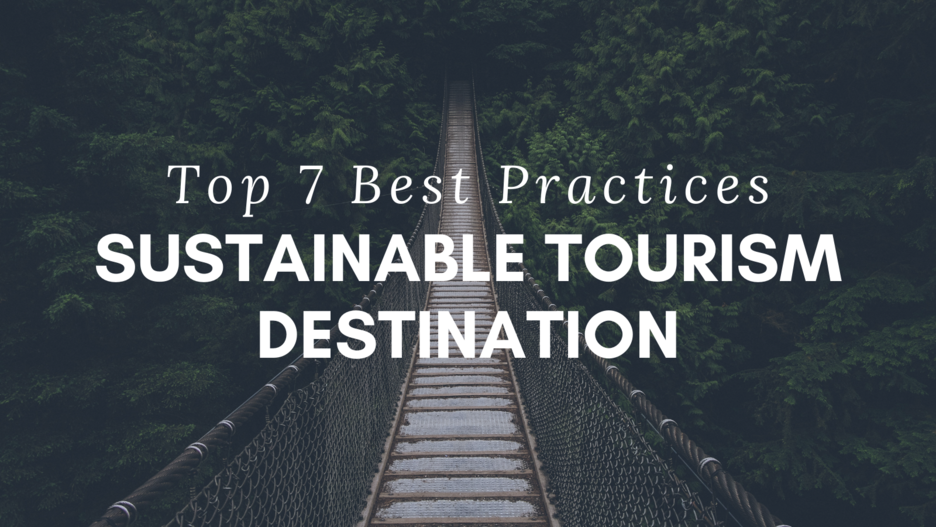
This article originally appeared in the March 2021 edition of TIAC Talk.
By Angela Nagy, CEO
Over the past decade, I have been working with and researching how tourism organizations at the international, national, regional, and local level have been integrating sustainability. Through this work, seven best practices have emerged that we now use as the basis of our Sustainable Tourism programs. Before I dive into these best practices let’s take a step back and look at the origins of what we now define as sustainable tourism.
The United Nations World Tourism Organization defines sustainable tourism as tourism that “meets the needs of present tourists and host regions while protecting and enhancing opportunities for the future. Rather than being a type of product, it is an ethos that underpins all tourism activities. As such, it is integral to all aspects of tourism development and management rather than being an add-on component.”
The term and concept of “sustainable tourism” was formally born at the first World Conference on Sustainable Tourism in 1995, where The World Charter for Sustainable Tourism was originally adopted. Twenty years later, in 2015, the World Summit on Sustainable Tourism (ST+20) updated the terms and objectives of the initial declaration to account for major changes in the industry. Several actions were identified to help guide local communities and destinations; industry; consumers; researchers, developers and trainers; and networks and NGOs, on their path to sustainability.
Ultimately, “the objective of sustainable tourism is to retain the economic and social advantages of tourism development while reducing or mitigating any undesirable impacts on the natural, historic, cultural or social environment. This is achieved by balancing the needs of tourists with those of the destination.”
This early work of the UNWTO and the World Charter for Sustainable Tourism has resulted in several destinations around the world adopting various programs, charters, pledges, and certification programs over the past two decades that focus on environmental, social, cultural and of course, economic sustainability. Through research of these destinations, analysis of various reports, and hands-on work with both tourism destinations and tourism businesses, I have discovered that there are seven best practice steps that tourism destinations should take if they are serious about advancing the sustainability performance of their region. It is the same approach we take when working with our destination clients.
While these best practices don’t necessarily need to be implemented in the order presented below, this process will lead to the highest level of engagement amongst stakeholders.
Best Practice 1: Engage, educate, and consult with stakeholders to help inform and guide future plans and actions. A permanent tourism destination stakeholder committee should be established, which includes representation from the destination management organization (DMO), local government, first nations, community organizations, and tourism businesses. You may also have liaisons from the provincial/state or federal/national government levels. Ideally, initial training on sustainable tourism can be provided to the committee, to help ensure a common understanding of sustainable tourism, the opportunities it presents for the destination, and the risks associated with doing nothing or not moving fast enough. This committee should meet at least quarterly to guide, inform, and learn from the next steps.
Best Practice 2: Establish a baseline. In order to understand your current reality, it is important to undertake a baseline analysis of your current sustainability performance. This will enable the determination of gaps between where the destination is performing well and where there is opportunity for improvement. To establish a baseline of where your destination is, use a framework based upon the Global Sustainable Tourism Council Destination Criteria, which is aligned with the UN Sustainable Development Goals. GreenStep Sustainable Tourism offers a free Sustainability Score for tourism destinations and businesses to help assess their sustainability performance in a number of key areas including management, social and economic, nature and culture, and environment.
Best Practice 3: Set clear goals and identify the specific actions to achieve those goals. Understanding where your destination is doing well and where you have room for improvement will allow for the identification of goals, and then the appropriate actions and strategies to work towards these goals. This strategy and action plan should be understood and ideally approved by impacted stakeholders, and also be designed to compliment and support your existing destination development strategy and goals.
Best Practice 4: Ongoing implementation, monitoring, and measurement of impacts and results. Once you have measured your baseline, established goals, and have created an action plan to achieve those goals, it’s time to implement. Integrating your sustainability efforts into your existing meetings and accountability rhythm will help to make sure that sustainability isn’t siloed and that it becomes part of regular discussions and decision making. At least annually, reassess your sustainability performance against your goals to confirm if your actions are leading you in the right direction, and what impacts you have had on your destination.
Best Practice 5: Publicly Report. Some level of public reporting on impacts and progress towards your goals should be undertaken. Integrating key sustainability performance indicators and metrics into your regular monthly, quarterly and/or annual reporting efforts is ideal. Publish these reports, or summarize them for public consumption, and of course, weave your achievements and future goals into your destination marketing efforts to help build your reputation and brand as a destination that cares about sustainability. These reports can also be used as the basis for awards applications and nominations.
Best Practice 6: Engagement of tourism businesses. Engaging tourism businesses in your destination is essential to a robust destination sustainability strategy. In order to understand where tourism businesses need the most support, consider promoting that they undertake their own baseline analysis on key issues. You can also use the free Sustainability Score for tourism businesses, which is based upon Global Sustainable Tourism Council Recognized criteria, and aggregate the results to identify the areas of strength and opportunity. Once you have an understanding of where your business stakeholders have gaps in their own sustainability performance, you can offer training or other programs on these sustainability issues as part of your destination development efforts. Now businesses in your destination will have a framework through which they can measure and monitor their own impacts and contributions to your destination’s goals, and develop a strong basis from which to embark upon certification of their own operations.
Best Practice 7: Formal assessment and certification of destination. By taking all of the previous steps, your destination will have the key elements in place to support the pursuit of destination certification. This is a big step and requires a significant commitment of time and financial resources. Certification will verify that your destination is in compliance with Global Sustainable Tourism Council criteria, will help to bring added credibility to your destination’s efforts, and is a strong signal to your stakeholders and the rest of the industry.
“In the end it’s all about protecting our product. If the product – our destinations – aren’t protected in environmental and social terms then people won’t want to visit them, it is as simple as that.” John De Vial, Director of Financial Protection and Financial Services, ABTA
Angela Nagy is the CEO of GreenStep Solutions. Through their Sustainable Tourism division, she and her team work with tourism businesses and destinations to assess, accelerate, and provide certification for their sustainability performance.
National Geographic content straight to your inbox—sign up for our popular newsletters here

A train glides past Switzerland's snowcapped mountains, one way travelers can see the world while reducing their carbon footprint.
6 Ways to Be a More Sustainable Traveler
Reduce your impact on the planet, support local economies, and protect wildlife.
The United Nations designated 2017 the International Year of Sustainable Tourism for Development —an opportunity to raise global awareness about how responsible tourism can act as a vehicle for positive change.
The three pillars of sustainable tourism are employing environmentally friendly practices (reduce, reuse, recycle); protecting cultural and natural heritage (restoring historic buildings or saving endangered species); and providing tangible social and economic benefits for local communities (ranging from upholding the rights of indigenous peoples to supporting fair wages for employees). Here are six things globetrotters can do to ease their impact on the planet:
Avoid the plane and take the train.
Become part of the emerging “slow travel” trend by going to fewer places and spending more time in each. Train travel is a good way to do this. Not only will you experience a deeper sense of place, you’ll also decrease your carbon footprint. Some of my favorite travel-by-train destinations include India , Southeast Asia, East Africa, and China .
Give, the right way.
Many well-intentioned travelers bring sweets, used clothing, books, and pencils to hand out to children and villagers in developing nations. Sadly, this kind giving often has unintended consequences—it can sow community conflict and encourage a culture of dependency and begging. I watched two Maasai women in Africa fight over a T-shirt that a smiling tourist had handed out; in some parts of Asia, the first English words children learn are “Give me sweet.”
It is better to give—be it money or goods—to reputable local organizations that work on social welfare programs, or to international groups that partner with them. A good one is Pack for a Purpose .
Say no to plastic.
The Great Pacific Garbage Patch , a swirling mass of human trash stretching across thousands of miles of the ocean, includes gazillions of throw-away plastic bottles and bags that will take hundreds of years, if ever, to break down—all the while wreaking havoc on marine ecosystems.
Be a part of the solution by opting for locally purified water in recyclable glass bottles (in the tropics, I rely mainly on green coconuts to stay hydrated) and carrying tote bags in your luggage that you can use while perusing street markets and shops. Not only will this cut back on plastic waste, it will also reduce your carbon footprint–petroleum-based ingredients are a staple in manufacturing plastic bottles and bags.
Research your tour operators.
I explore on my own most of the time when I travel, but when I do seek out the services of a tour outfitter, I always ask three questions before signing on: What are some of your tour company’s environmentally friendly practices? Can you give me an example of how your trips help to protect and support wildlife or cultural heritage? Do you employ local guides on your trips?
These days, any outfitter that cannot provide a clear answer is behind the times. Find another one.
Support the real local economy.
Locally made crafts and souvenirs are not always cheaper, but purchasing them ensures your contribution to the economy will have a more direct and positive impact.
- Nat Geo Expeditions
In Cancun, for example, some gift shops sell “traditional” Mexican sombreros that are imported from China because they cost less, while village artisans who make the hats by hand charge more. The difference is not just in the price. Buying the real sombreros supports authentic cultural heritage and provides needed jobs for the locals who make them.
Never buy wildlife products—period.
On a trip to Vietnam’s Halong Bay, I watched a group of American tourists haggling with villagers who were selling some of the most beautiful sea shells I have come across in my travels.
Similarly, in Mongolia , I witnessed a couple of backpackers haggling at an outdoor market to buy a hand-stitched eagle hunter’s hat made from plush wolf fur. These travelers were inadvertently helping to support a growing marketplace for trafficking rare and endangered wildlife products as souvenirs. Just say no.
FREE BONUS ISSUE
Related topics.
- SUSTAINABLE TOURISM
You May Also Like

10 whimsical ways to experience Scotland

Looking for a truly remote, off-the-grid adventure? Try Panama.

10 of the best UK destinations for spring travel

They inspire us and teach us about the world: Meet our 2024 Travelers of the Year

Exploring the UK's wild isles: 5 of the best new nature travel books
- Environment
- Perpetual Planet
History & Culture
- History & Culture
- History Magazine
- Mind, Body, Wonder
- Paid Content
- Terms of Use
- Privacy Policy
- Your US State Privacy Rights
- Children's Online Privacy Policy
- Interest-Based Ads
- About Nielsen Measurement
- Do Not Sell or Share My Personal Information
- Nat Geo Home
- Attend a Live Event
- Book a Trip
- Inspire Your Kids
- Shop Nat Geo
- Visit the D.C. Museum
- Learn About Our Impact
- Support Our Mission
- Advertise With Us
- Customer Service
- Renew Subscription
- Manage Your Subscription
- Work at Nat Geo
- Sign Up for Our Newsletters
- Contribute to Protect the Planet
Copyright © 1996-2015 National Geographic Society Copyright © 2015-2024 National Geographic Partners, LLC. All rights reserved
Travel, Tourism & Hospitality
Sustainable tourism worldwide - statistics & facts
What are the effects of global tourism on the climate, traveler awareness of social and environmental responsibility, key insights.
Detailed statistics
Ecotourism market size worldwide 2022-2028
Tourism-related transport's share of carbon emissions worldwide 2016-2030
Global travelers who believe in the importance of green travel 2023
Editor’s Picks Current statistics on this topic
Current statistics on this topic.
Leisure Travel
Global carbon dioxide emissions from energy 1965-2022, by region
Related topics
Recommended.
- Tourism worldwide
- Hotel industry worldwide
- Sustainable tourism in the U.S.
- Sustainable fashion worldwide
Recommended statistics
Industry overview.
- Premium Statistic Ecotourism market size worldwide 2022-2028
- Premium Statistic Global travelers who believe in the importance of green travel 2023
- Premium Statistic Sustainable initiatives travelers would adopt worldwide 2022, by region
- Premium Statistic Conscious travelers' challenges when traveling in a sustainable manner worldwide 2022
Market size of the ecotourism sector worldwide in 2022, with a forecast for 2028 (in billion U.S. dollars)
Share of travelers that believe sustainable travel is important worldwide in 2023
Sustainable initiatives travelers would adopt worldwide 2022, by region
Main sustainable initiatives travelers are willing to adopt worldwide in 2022, by region
Conscious travelers' challenges when traveling in a sustainable manner worldwide 2022
Challenges of travelers when trying to travel in a sustainable and socially conscious manner worldwide as of March 2022
Environmental impact
- Basic Statistic Global carbon dioxide emissions from energy 1965-2022, by region
- Premium Statistic Tourism-related transport's share of carbon emissions worldwide 2016-2030
- Premium Statistic Carbon footprint of tourism-related transport worldwide 2005-2030
- Premium Statistic Carbon footprint of international tourism transport worldwide 2005-2030, by type
- Premium Statistic Carbon footprint of domestic tourism transport worldwide 2005-2030, by type
Carbon dioxide emissions from energy worldwide from 1965 to 2022, by region (in million metric tons of carbon dioxide)
Tourism-related transport's share of carbon emissions worldwide 2016-2030
Share of carbon dioxide emissions coming from tourism-related transport worldwide in 2016, with a forecast for 2030
Carbon footprint of tourism-related transport worldwide 2005-2030
Carbon dioxide emissions from tourism-related transport worldwide in 2005 and 2016, with a forecast for 2030 (in million metric tons of carbon dioxide)
Carbon footprint of international tourism transport worldwide 2005-2030, by type
Transport-related emissions from international tourist arrivals worldwide in 2005 and 2016, with a forecast for 2030, by mode of transport (in million metric tons of carbon dioxide)
Carbon footprint of domestic tourism transport worldwide 2005-2030, by type
Transport-related emissions from domestic tourist arrivals worldwide in 2005 and 2016, with a forecast for 2030 (in million metric tons of carbon dioxide), by mode of transport
International tourism figures
- Premium Statistic Number of international tourist arrivals worldwide 1950-2023
- Basic Statistic Number of international tourist arrivals worldwide 2005-2023, by region
- Premium Statistic Countries with the highest number of inbound tourist arrivals worldwide 2019-2022
- Premium Statistic Global air traffic - number of flights 2004-2024
- Premium Statistic Global air traffic - scheduled passengers 2004-2022
Number of international tourist arrivals worldwide 1950-2023
Number of international tourist arrivals worldwide from 1950 to 2023 (in millions)
Number of international tourist arrivals worldwide 2005-2023, by region
Number of international tourist arrivals worldwide from 2005 to 2023, by region (in millions)
Countries with the highest number of inbound tourist arrivals worldwide 2019-2022
Countries with the highest number of international tourist arrivals worldwide from 2019 to 2022 (in millions)
Global air traffic - number of flights 2004-2024
Number of flights performed by the global airline industry from 2004 to 2023, with a forecasts for 2024 (in millions)
Global air traffic - scheduled passengers 2004-2022
Number of scheduled passengers boarded by the global airline industry from 2004 to 2022 (in millions)
Opinions and behavior
- Premium Statistic Main drivers for visiting a country by people worldwide 2023
- Premium Statistic Share of outbound travelers planning to spend more worldwide 2022, by category
- Premium Statistic Share of global travelers that want to use green lodging in the next year 2016-2022
- Premium Statistic Interest in accommodation with high sustainability standard globally 2023, by country
- Premium Statistic Reasons global travelers stayed in sustainable lodging at least once last year 2022
- Premium Statistic Demand for sustainable hotels by global corporate travel managers 2022
Main drivers for visiting a country by people worldwide 2023
Reasons to visit a country according to respondents worldwide in 2023
Share of outbound travelers planning to spend more worldwide 2022, by category
Share of travelers planning to spend more on trips abroad in selected countries worldwide in 2022, by type of expenditure
Share of global travelers that want to use green lodging in the next year 2016-2022
Distribution of global travelers intending to stay at least once in an eco-friendly or green accommodation when looking at the year ahead from 2016 to 2022
Interest in accommodation with high sustainability standard globally 2023, by country
Share of travelers who look for accommodation with impressive sustainability innovation worldwide as of July 2023, by country
Reasons global travelers stayed in sustainable lodging at least once last year 2022
Main reasons travelers stayed in sustainable accommodation at least once over the past year worldwide in as of February 2022
Demand for sustainable hotels by global corporate travel managers 2022
Importance of hotel sustainability for business travel buyers worldwide as of October 2022
Further reports Get the best reports to understand your industry
Get the best reports to understand your industry.
Mon - Fri, 9am - 6pm (EST)
Mon - Fri, 9am - 5pm (SGT)
Mon - Fri, 10:00am - 6:00pm (JST)
Mon - Fri, 9:30am - 5pm (GMT)
UN Tourism | Bringing the world closer
Share this content.
- Share this article on facebook
- Share this article on twitter
- Share this article on linkedin
EU Guidebook on Sustainable Tourism for Development
In recognition of the considerable opportunities and issues involved in the development of tourism, in 2012 the European Commission's Directorate-General for Development and Cooperation – EuropeAid established the project “Enhancing capacities for sustainable tourism for development in developing countries”. The project was undertaken in collaboration with the World Tourism Organization (UNWTO) which was commissioned to prepare a Guidebook on Sustainable Tourism, as an engine for development, trade in services, job creation and poverty reduction.
The Guidebook is intended to enhance the understanding of tourism in all its dimensions, how it relates to the EU Agenda for Change so as to enable EU services in Brussels and the EU Delegations in 180 countries as well as other development institutions to include sustainable tourism development in their programme cycles.
UNWTO endeavours to maximize tourism’s contribution to, inter alia, development and international understanding, while minimizing its negative impacts, paying particular attention to the growth potential of developing countries. Likewise, the European Union is well placed to support developing countries in identifying and implementing interventions in sustainable tourism.
The approach has been based on the experience of UNWTO and its work with a wide range of partner agencies and governments. In particular, the results of the study have been field tested in six countries during and following the preparation of the document, namely Kenya, India, Vietnam, Senegal, Botswana and Timor-Leste . The guidebook was publicly launched with the EU on the 27th of June 2013 in Brussels.
Background- Sustainable Tourism for Development
Over the last decades, tourism has experienced continued growth and increased diversification, becoming one of the fastest growing economic sectors in the world. The business volume of tourism today equals or even surpasses that of oil exports, food products or automobiles, offering millions of direct entry points into the workforce, particularly for youth and women, and a diversity of investment opportunities for young entrepreneurial talents. Tourism has become one of the major sectors in international trade, at the same time representing one of the main income sources for many developing countries. It is their only service sector with recorded surpluses in trade compared to the rest of the world.
However, tourism can also be a source of environmental damage and pollution, a threat to the socio-cultural structure, a heavy user of scarce resources and a potential cause of negative externalities in society. What must be done?
Tourism in the Global Development Agenda: The future we want Rio+20 outcome document
" Sustainable tourism is highlighted in the final outcome document of Rio+20 as a thematic area and a cross-sectorial issue within the framework for action and follow-up.
130. We emphasize that well-designed and managed tourism can make a significant contribution to the three dimensions of sustainable development, has close linkages to other sectors, and can create decent jobs and generate trade opportunities (…)
131. We encourage the promotion of investment in sustainable tourism, including eco-tourism and cultural tourism, which may include creating small and medium sized enterprises and facilitating access to finance, including through microcredit initiatives for the poor, indigenous peoples and local communities in areas with high eco-tourism potential (…)"
- Rio+20: The Future We Want
- Green Economy Report leaflet
In recent years, sustainability has emerged as a critical concern that must be addressed in any viable tourism development strategy. Expressed simply, sustainable tourism can be defined as “Tourism that takes full account of its current and future economic, social and environmental impacts, addressing the needs of visitors, the industry, the environment, and host communities”. Tourism is one of the ten economic sectors identified in the UNEP Green Economy Report, whose greening could increase prosperity, create employment and reduce poverty. In addition, tourists are increasingly demanding the greening of tourism. Tourism development should hence have a sustainable approach , to be able to promote growth in the long-term while maintaining a balanced use of resources. This should be supported at local, national, regional and international levels.
Developing Countries surpassing advanced economies’ international tourist arrivals in 2015
Although developed countries remain both the major tourism destinations and source of international tourism, developing countries are reducing the gap. In recent decades there has been a substantial diversification in international tourism destinations, and many developing countries have registered phenomenal growth in tourist arrivals and receipts. Tourism also particularly thrives on assets such as natural environment, warm climate, rich cultural heritage and plentiful human resources, where developing countries have a comparative advantage.
- Tourism is the first or second source of export earnings in 20 of the 48 LDCs
- In some developing countries, notably small island states, tourism can account for over 25% of GDP.
- From 2015, emerging economies will, for the first time receive more international tourist arrivals than advanced economies
- By 2030, 58% of international arrivals will be to emerging economy destinations of Asia, Latin America, Central and Eastern Europe, the Middle East and Africa

However, tourism can also be a source of environmental damage and pollution , a heavy consumer of scarce resources and a cause of negative impacts in society. For these reasons, it is imperative that it is well planned and managed , embracing the principles of sustainable tourism which is defined as “tourism that takes full account of its current and future economic, social and environmental impacts, addressing the needs of visitors, the industry the environment and host communities” .
The Purpose of the Guidebook- Sustainable Tourism for Development

The document is aimed at two main audiences:
- The EU and other development assistance agencies – to help them understand and identify opportunities to assist the tourism sector in delivering sustainable development.
- Governments and other stakeholders within developing countries – to help them identify where they may need to strengthen their approach to sustainable tourism, and if necessary to seek assistance, within the context of international priorities and policies for sustainable development.
In particular the document provides a basis for discussion between the above two groups in agreeing on priorities and actions for supporting sustainable tourism.
The study is seen as informing the existing cooperation frameworks and common assessment and coordination processes in Official Development Assistance and Aid for Trade . This applies particularly in the field of trade, in which tourism plays an important part, including the work of the Enhanced Integrated Framework in promoting Diagnostic Trade Integration Studies and in the delivery of Aid for Trade.
The study contributes to the positioning of tourism within the overarching framework for action on green growth, poverty eradication and sustainable development post-2015 , stemming from Rio+20 and addressed by the European Commission in Communication (2013) 92 A Decent Life for All: Ending poverty and giving the world a sustainable futur e
Related links
- A Decent Life for All: Ending poverty and giving the world a sustainable future
“Sustainable Tourism for development in developing countries”: A document in three interlinking parts
The Guidebook takes a comprehensive approach to tourism, covering a wide range of topics relating to its planning, development, management and impact. By working through the whole document, users are able to identify priorities for intervention across a spectrum of issues.
The Guidebook’s aim is to mainstream tourism by:
- Enhancing understanding and commitment to sustainable tourism.
- Providing guidance to assess the tourism sector’s importance, identifying opportunities for sustainable tourism development, planning actions, and enhancing sustainability of projects.
- Delivering a “Sustainable Tourism for Development Study” which will enable the EU and other development institutions to include sustainable tourism development in their programme cycles.
The guidebook is divided in the three parts described below:
- GUIDANCE NOTE: Relates the UE framework for development, e.g. the EU Agenda for Change and Tourism pillars (methodology) and relates to EU priorities. It aims at providing guidance to EU services on the approaches required to ensure the effective implementation of priorities for sustainable tourism in developing countries.
- SITUATION ANALYSIS : Describes the macro-economic dimensions of tourism; its contrubution to improve the situation of a country and its relation with other sectors; policies in place to develop the sector and its contribution to sustainable development and reviews the existing policies and programmes auming at developing sustainable tourism in developing countries.
- METHODOLOGY: Designes to ptovide EU delagrions with a sustematics approach to understand the impact and value of the tourism sector in the country and the way it is managed and operated; and to understand which actions are appropriate to improve the situation through tailored interventions.
“The Methodology”: How to assess priorities for Sustainable Tourism in Developing Countries?
The Methodology follows a systematic structure which, through a series of questions * under each issue, enables the situation to be assessed, weaknesses and gaps identified and possible actions considered, while also pointing to existing services that are available. It focuses on five key pillars of sustainable tourism in developing countries:

Assess your needs!
- Questionnaire Pillar 1- Tourism policy and governance
- Questionnaire Pillar 2- Trade Investment, Data and Competitiveness
- Questionnaire Pillar 3- Employment, Decent Work and Capacity Building
- Questionnaire Pillar 4- Poverty Reduction and Social Inclusion
- Questionnaire Pillar 5- Sustainability of natural and cultural environment
The World Symposium on Sustainable Tourism (WSST) 2025 will bring together participants to chart a course towards a more sustainable future for tourism. WSST aims to foster collaboration, innovation, and collective action to ensure that tourism is a force for good for people and the planet.
The Research and Transfer Centre ‘Sustainable Development and Climate Change Management’ at the Hamburg University of Applied Sciences (Germany) and Manchester Metropolitan University (UK) are organizing the event with the School of Economics, Business Administration and Accounting at Ribeirao Preto of the University of Sao Paulo (Brazil), which will host the event.
The event will bring together stakeholders from the tourism sector, including tourism industry professionals and academics specializing in topics related to sustainable tourism, government representatives, non-governmental organizations (NGOs), and Indigenous communities and local stakeholders. Participants will present their work in sustainable tourism and discuss best practices, challenges, emerging trends, and success stories in sustainable tourism.
To receive SDG event notices, news, and analysis in your inbox, subscribe .
To share information about your organization’s activities related to this event, subscribe to our peer-to-peer SDG list.
dates: 8-9 May 2025 location: Ribeirao Pires, Sao Paulo, Brazil www: https://www.haw-hamburg.de/en/university/newsroom/news-details/news/news/show/world-symposium-on-sustainable-tourism-wsst-2025/
related posts
Sustainable blue economy conference concludes with 62 commitments 4 december 2018 0 then 4 else u.id end as user_id , u.user_email as user_email , case when u.user_nicename like '%-account' then '' when left(u.user_login,2) = 'z_' or u.id=64 then 'guest-authors' else 'thematic-experts' end as user_link_role , case when u.user_nicename like '%-account' then '' else u.user_nicename end as user_link_slug , p.pid, p.uid from wp_2_posts_authors p join wp_users u on u.id=case when find_in_set(p.post_author,'228,8,9,22,421,373')>0 then 4 else p.post_author end where p.id in (379648) ) pu join wp_usermeta fn on pu.user_id = fn.user_id join wp_usermeta ln on pu.user_id = ln.user_id join wp_usermeta dl on pu.user_id = dl.user_id join wp_usermeta ur on pu.user_id = ur.user_id left join (select * from wp_usermeta where meta_key = 'description_short') ds on pu.user_id = ds.user_id left join (select * from wp_usermeta where meta_key = 'user_prefix') px on pu.user_id = px.user_id left join (select * from wp_usermeta where meta_key = 'user_suffix') sx on pu.user_id = sx.user_id where fn.meta_key = 'first_name' and ln.meta_key = 'last_name' and dl.meta_key = 'description' and ur.meta_key = 'wp_capabilities' order by pu.pid desc, pu.uid asc;--> |, sustainable blue economy conference concludes with... 4 december 2018 0 then 4 else u.id end as user_id , u.user_email as user_email , case when u.user_nicename like '%-account' then '' when left(u.user_login,2) = 'z_' or u.id=64 then 'guest-authors' else 'thematic-experts' end as user_link_role , case when u.user_nicename like '%-account' then '' else u.user_nicename end as user_link_slug , p.pid, p.uid from wp_2_posts_authors p join wp_users u on u.id=case when find_in_set(p.post_author,'228,8,9,22,421,373')>0 then 4 else p.post_author end where p.id in (379648) ) pu join wp_usermeta fn on pu.user_id = fn.user_id join wp_usermeta ln on pu.user_id = ln.user_id join wp_usermeta dl on pu.user_id = dl.user_id join wp_usermeta ur on pu.user_id = ur.user_id left join (select * from wp_usermeta where meta_key = 'description_short') ds on pu.user_id = ds.user_id left join (select * from wp_usermeta where meta_key = 'user_prefix') px on pu.user_id = px.user_id left join (select * from wp_usermeta where meta_key = 'user_suffix') sx on pu.user_id = sx.user_id where fn.meta_key = 'first_name' and ln.meta_key = 'last_name' and dl.meta_key = 'description' and ur.meta_key = 'wp_capabilities' order by pu.pid desc, pu.uid asc;--> |, fifth our ocean conference generates us$10.7 billion in pledges 6 november 2018 0 then 4 else u.id end as user_id , u.user_email as user_email , case when u.user_nicename like '%-account' then '' when left(u.user_login,2) = 'z_' or u.id=64 then 'guest-authors' else 'thematic-experts' end as user_link_role , case when u.user_nicename like '%-account' then '' else u.user_nicename end as user_link_slug , p.pid, p.uid from wp_2_posts_authors p join wp_users u on u.id=case when find_in_set(p.post_author,'228,8,9,22,421,373')>0 then 4 else p.post_author end where p.id in (378239) ) pu join wp_usermeta fn on pu.user_id = fn.user_id join wp_usermeta ln on pu.user_id = ln.user_id join wp_usermeta dl on pu.user_id = dl.user_id join wp_usermeta ur on pu.user_id = ur.user_id left join (select * from wp_usermeta where meta_key = 'description_short') ds on pu.user_id = ds.user_id left join (select * from wp_usermeta where meta_key = 'user_prefix') px on pu.user_id = px.user_id left join (select * from wp_usermeta where meta_key = 'user_suffix') sx on pu.user_id = sx.user_id where fn.meta_key = 'first_name' and ln.meta_key = 'last_name' and dl.meta_key = 'description' and ur.meta_key = 'wp_capabilities' order by pu.pid desc, pu.uid asc;--> |, fifth our ocean conference generates us$10.7 billi... 6 november 2018 0 then 4 else u.id end as user_id , u.user_email as user_email , case when u.user_nicename like '%-account' then '' when left(u.user_login,2) = 'z_' or u.id=64 then 'guest-authors' else 'thematic-experts' end as user_link_role , case when u.user_nicename like '%-account' then '' else u.user_nicename end as user_link_slug , p.pid, p.uid from wp_2_posts_authors p join wp_users u on u.id=case when find_in_set(p.post_author,'228,8,9,22,421,373')>0 then 4 else p.post_author end where p.id in (378239) ) pu join wp_usermeta fn on pu.user_id = fn.user_id join wp_usermeta ln on pu.user_id = ln.user_id join wp_usermeta dl on pu.user_id = dl.user_id join wp_usermeta ur on pu.user_id = ur.user_id left join (select * from wp_usermeta where meta_key = 'description_short') ds on pu.user_id = ds.user_id left join (select * from wp_usermeta where meta_key = 'user_prefix') px on pu.user_id = px.user_id left join (select * from wp_usermeta where meta_key = 'user_suffix') sx on pu.user_id = sx.user_id where fn.meta_key = 'first_name' and ln.meta_key = 'last_name' and dl.meta_key = 'description' and ur.meta_key = 'wp_capabilities' order by pu.pid desc, pu.uid asc;--> |, brics declaration calls for full implementation of paris agreement and 2030 agenda 2 august 2018 0 then 4 else u.id end as user_id , u.user_email as user_email , case when u.user_nicename like '%-account' then '' when left(u.user_login,2) = 'z_' or u.id=64 then 'guest-authors' else 'thematic-experts' end as user_link_role , case when u.user_nicename like '%-account' then '' else u.user_nicename end as user_link_slug , p.pid, p.uid from wp_2_posts_authors p join wp_users u on u.id=case when find_in_set(p.post_author,'228,8,9,22,421,373')>0 then 4 else p.post_author end where p.id in (372770) ) pu join wp_usermeta fn on pu.user_id = fn.user_id join wp_usermeta ln on pu.user_id = ln.user_id join wp_usermeta dl on pu.user_id = dl.user_id join wp_usermeta ur on pu.user_id = ur.user_id left join (select * from wp_usermeta where meta_key = 'description_short') ds on pu.user_id = ds.user_id left join (select * from wp_usermeta where meta_key = 'user_prefix') px on pu.user_id = px.user_id left join (select * from wp_usermeta where meta_key = 'user_suffix') sx on pu.user_id = sx.user_id where fn.meta_key = 'first_name' and ln.meta_key = 'last_name' and dl.meta_key = 'description' and ur.meta_key = 'wp_capabilities' order by pu.pid desc, pu.uid asc;--> |, brics declaration calls for full implementation of... 2 august 2018 0 then 4 else u.id end as user_id , u.user_email as user_email , case when u.user_nicename like '%-account' then '' when left(u.user_login,2) = 'z_' or u.id=64 then 'guest-authors' else 'thematic-experts' end as user_link_role , case when u.user_nicename like '%-account' then '' else u.user_nicename end as user_link_slug , p.pid, p.uid from wp_2_posts_authors p join wp_users u on u.id=case when find_in_set(p.post_author,'228,8,9,22,421,373')>0 then 4 else p.post_author end where p.id in (372770) ) pu join wp_usermeta fn on pu.user_id = fn.user_id join wp_usermeta ln on pu.user_id = ln.user_id join wp_usermeta dl on pu.user_id = dl.user_id join wp_usermeta ur on pu.user_id = ur.user_id left join (select * from wp_usermeta where meta_key = 'description_short') ds on pu.user_id = ds.user_id left join (select * from wp_usermeta where meta_key = 'user_prefix') px on pu.user_id = px.user_id left join (select * from wp_usermeta where meta_key = 'user_suffix') sx on pu.user_id = sx.user_id where fn.meta_key = 'first_name' and ln.meta_key = 'last_name' and dl.meta_key = 'description' and ur.meta_key = 'wp_capabilities' order by pu.pid desc, pu.uid asc;--> |, innovative climate change solutions award winners announced 24 october 2017 0 then 4 else u.id end as user_id , u.user_email as user_email , case when u.user_nicename like '%-account' then '' when left(u.user_login,2) = 'z_' or u.id=64 then 'guest-authors' else 'thematic-experts' end as user_link_role , case when u.user_nicename like '%-account' then '' else u.user_nicename end as user_link_slug , p.pid, p.uid from wp_2_posts_authors p join wp_users u on u.id=case when find_in_set(p.post_author,'228,8,9,22,421,373')>0 then 4 else p.post_author end where p.id in (355231) ) pu join wp_usermeta fn on pu.user_id = fn.user_id join wp_usermeta ln on pu.user_id = ln.user_id join wp_usermeta dl on pu.user_id = dl.user_id join wp_usermeta ur on pu.user_id = ur.user_id left join (select * from wp_usermeta where meta_key = 'description_short') ds on pu.user_id = ds.user_id left join (select * from wp_usermeta where meta_key = 'user_prefix') px on pu.user_id = px.user_id left join (select * from wp_usermeta where meta_key = 'user_suffix') sx on pu.user_id = sx.user_id where fn.meta_key = 'first_name' and ln.meta_key = 'last_name' and dl.meta_key = 'description' and ur.meta_key = 'wp_capabilities' order by pu.pid desc, pu.uid asc;--> |, innovative climate change solutions award winners ... 24 october 2017 0 then 4 else u.id end as user_id , u.user_email as user_email , case when u.user_nicename like '%-account' then '' when left(u.user_login,2) = 'z_' or u.id=64 then 'guest-authors' else 'thematic-experts' end as user_link_role , case when u.user_nicename like '%-account' then '' else u.user_nicename end as user_link_slug , p.pid, p.uid from wp_2_posts_authors p join wp_users u on u.id=case when find_in_set(p.post_author,'228,8,9,22,421,373')>0 then 4 else p.post_author end where p.id in (355231) ) pu join wp_usermeta fn on pu.user_id = fn.user_id join wp_usermeta ln on pu.user_id = ln.user_id join wp_usermeta dl on pu.user_id = dl.user_id join wp_usermeta ur on pu.user_id = ur.user_id left join (select * from wp_usermeta where meta_key = 'description_short') ds on pu.user_id = ds.user_id left join (select * from wp_usermeta where meta_key = 'user_prefix') px on pu.user_id = px.user_id left join (select * from wp_usermeta where meta_key = 'user_suffix') sx on pu.user_id = sx.user_id where fn.meta_key = 'first_name' and ln.meta_key = 'last_name' and dl.meta_key = 'description' and ur.meta_key = 'wp_capabilities' order by pu.pid desc, pu.uid asc;--> |, un biodiversity conference adopts 70 decisions 19 december 2016 0 then 4 else u.id end as user_id , u.user_email as user_email , case when u.user_nicename like '%-account' then '' when left(u.user_login,2) = 'z_' or u.id=64 then 'guest-authors' else 'thematic-experts' end as user_link_role , case when u.user_nicename like '%-account' then '' else u.user_nicename end as user_link_slug , p.pid, p.uid from wp_2_posts_authors p join wp_users u on u.id=case when find_in_set(p.post_author,'228,8,9,22,421,373')>0 then 4 else p.post_author end where p.id in (339707) ) pu join wp_usermeta fn on pu.user_id = fn.user_id join wp_usermeta ln on pu.user_id = ln.user_id join wp_usermeta dl on pu.user_id = dl.user_id join wp_usermeta ur on pu.user_id = ur.user_id left join (select * from wp_usermeta where meta_key = 'description_short') ds on pu.user_id = ds.user_id left join (select * from wp_usermeta where meta_key = 'user_prefix') px on pu.user_id = px.user_id left join (select * from wp_usermeta where meta_key = 'user_suffix') sx on pu.user_id = sx.user_id where fn.meta_key = 'first_name' and ln.meta_key = 'last_name' and dl.meta_key = 'description' and ur.meta_key = 'wp_capabilities' order by pu.pid desc, pu.uid asc;--> |, un biodiversity conference wgs discuss strategic plan, compliance and indicators as rcp focuses on protected areas 13 december 2016 0 then 4 else u.id end as user_id , u.user_email as user_email , case when u.user_nicename like '%-account' then '' when left(u.user_login,2) = 'z_' or u.id=64 then 'guest-authors' else 'thematic-experts' end as user_link_role , case when u.user_nicename like '%-account' then '' else u.user_nicename end as user_link_slug , p.pid, p.uid from wp_2_posts_authors p join wp_users u on u.id=case when find_in_set(p.post_author,'228,8,9,22,421,373')>0 then 4 else p.post_author end where p.id in (339288) ) pu join wp_usermeta fn on pu.user_id = fn.user_id join wp_usermeta ln on pu.user_id = ln.user_id join wp_usermeta dl on pu.user_id = dl.user_id join wp_usermeta ur on pu.user_id = ur.user_id left join (select * from wp_usermeta where meta_key = 'description_short') ds on pu.user_id = ds.user_id left join (select * from wp_usermeta where meta_key = 'user_prefix') px on pu.user_id = px.user_id left join (select * from wp_usermeta where meta_key = 'user_suffix') sx on pu.user_id = sx.user_id where fn.meta_key = 'first_name' and ln.meta_key = 'last_name' and dl.meta_key = 'description' and ur.meta_key = 'wp_capabilities' order by pu.pid desc, pu.uid asc;--> |, un biodiversity conference wgs discuss strategic p... 13 december 2016 0 then 4 else u.id end as user_id , u.user_email as user_email , case when u.user_nicename like '%-account' then '' when left(u.user_login,2) = 'z_' or u.id=64 then 'guest-authors' else 'thematic-experts' end as user_link_role , case when u.user_nicename like '%-account' then '' else u.user_nicename end as user_link_slug , p.pid, p.uid from wp_2_posts_authors p join wp_users u on u.id=case when find_in_set(p.post_author,'228,8,9,22,421,373')>0 then 4 else p.post_author end where p.id in (339288) ) pu join wp_usermeta fn on pu.user_id = fn.user_id join wp_usermeta ln on pu.user_id = ln.user_id join wp_usermeta dl on pu.user_id = dl.user_id join wp_usermeta ur on pu.user_id = ur.user_id left join (select * from wp_usermeta where meta_key = 'description_short') ds on pu.user_id = ds.user_id left join (select * from wp_usermeta where meta_key = 'user_prefix') px on pu.user_id = px.user_id left join (select * from wp_usermeta where meta_key = 'user_suffix') sx on pu.user_id = sx.user_id where fn.meta_key = 'first_name' and ln.meta_key = 'last_name' and dl.meta_key = 'description' and ur.meta_key = 'wp_capabilities' order by pu.pid desc, pu.uid asc;--> |.
The SDG Update compiles the news, commentary and upcoming events that are published on the SDG Knowledge Hub each day, delivering information on the implementation of the 2030 Agenda for Sustainable Development to your inbox.
Welcome to IISD's SDG Knowledge Hub

Small Towns, Big Impact: 10 Examples Of Sustainable Tourism in Picturesque Locations
- Small towns like Giethoorn, Hallstatt, and Cinque Terre showcase sustainable tourism practices with car-free streets, eco-friendly transportation, and a focus on waste management, preserving natural beauty while promoting responsible travel.
- Travelers can appreciate the commitment to sustainability in towns like Sintra, Gimmelwald, and Bled, where eco-friendly transportation, regional products, and conservation efforts ensure a minimal impact on the environment and support local communities.
- Tasiilaq and Portree exemplify sustainable living with self-sufficiency, renewable energy sources, traditional practices, and preservation of cultural heritage, setting a standard for eco-conscious practices and responsible exploration.
Sustainable tourism has never been so discussed, and people have been significantly seeking trips that support sustainable tourism . Luckily, many small towns are committed to sustainability , promoting responsible travel practices that respect local communities, protect fragile ecosystems, and preserve cultural heritage.
When it comes to eco-friendly tourism, small towns have a lot to teach the world. From car-free streets and efficient public transportation to encouraging local producers, these places prove that finding a balance between tourism and preservation is possible.
Embracing sustainable tourism is an ethical choice and a crucial step towards ensuring a harmonious coexistence between humans and the environment, forging a path to a more balanced and resilient world. Here are 10 examples of sustainable tourism in some of the world's most scenic towns.
RELATED: Here Are 10 Ways You Can Be Eco-Minded When Visiting National Parks Sustainably
Giethoorn, The Netherlands
Giethoorn, often called the "Venice of the North," is a picturesque village in the Netherlands. The only way to navigate this town where cars aren't allowed is by bike, boat, or foot.
Giethoorn stands out as a model of sustainable tourism, promoting eco-friendly practices such as electric boat transportation and maintaining a car-free town center. This commitment to preserving its idyllic waterways and natural surroundings has earned Giethoorn a reputation as a leading example of how tourism and environmental conservation coexist.
Visitors can explore this tranquil village while appreciating its dedication to sustainability.
- Population: 2,135
There are no train stations in Giethoorn , and the closest station is located in Steenwijk, where travelers can get a bus or rent a bike.
Hallstatt, Austria
Travelers spending the weekend in Hallstatt , Austria, will discover more than a breathtaking Alpine scenery, but a place committed to sustainability.
This village has implemented various eco-friendly initiatives, such as restricting car access in the center during the daytime. It's a way to encourage cycling and promote renewable energy sources.
Additionally, Hallstatt emphasizes waste management and conservation of its pristine environment. Visitors can explore the village's stunning lakeside setting and charming architecture while appreciating its dedication to preserving natural beauty for generations to come.
- Population: 734
Cinque Terre, Italy
Cinque Terre is arguably Italy's most stunning coastal area . Despite its popularity and increasing number of tourists, the country created rules to mitigate the environmental impact. Initiatives focus on waste management, protecting the marine environment, and educating both residents and visitors about sustainable practices.
The use of cars is limited, with an efficient train system connecting the villages. Businesses focus on sustainability, promoting local products like wine producers , farmers, and fishermen.
- Population: 3,500
Sintra, Portugal
Sintra is a lovely town in Portugal where travelers can spend at least two days . It attracts visitors due to its colorful constructions and history heritage, as it's a UNESCO World Heritage site.
When visiting, many travelers might not be aware of Portugal's efforts to make it a sustainable destination, as it ranks among the world's 100 Green Destinations . The town promotes eco-friendly transportation and encourages visitors to explore on foot or via electric trams, and strict zoning laws prevent overdevelopment, ensuring the historic charm remains intact.
Local businesses emphasize regional products, reducing the carbon footprint. Efforts are made to manage waste effectively, and conservation programs protect the lush surrounding forests.
- Sustainable accommodations: Penha Longa , Rosegarden House
RELATED: 10 Countries In Europe Perfect For Sustainable Tourism
Gimmelwald, Switzerland
Gimmelwals is located 300 meters above sea level, and its small-scale tourism bolsters the local economy and fosters a sense of community. Tourism became possible by creating an efficient local train and cable car. Nestled in the Swiss Alps, the villages in this region are entirely car-free , which helps to preserve the clean mountain air.
Hiking trails lead through pristine landscapes, and traditional wooden chalets seamlessly blend with the scenery. Locally-owned accommodations and eateries prioritize regional fare, reducing food miles.
- Population: 130
- Sustainable accommodations: Pension Gimmelwald , Mountain Hostel Gimmelwald
Bled, Slovenia
Bled, Slovenia, has been committed to sustainable tourism for many years. It also ranks among the Top 100 Sustainable Destinations thanks to initiatives such as efficient public transportation, allowing travelers to leave their cars behind.
Some areas in the city have walking-only areas so people won't damage the site. The pristine Lake Bled is central to the community's commitment to conservation, with electric boats available, leaving no environmental footprint.
Bled's compact size encourages exploration on foot or by bike, minimizing reliance on motorized transportation. Additionally, efforts to preserve cultural heritage and support the local economy further contribute to its sustainable ethos.
- Sustainable accommodations: Hotel & Glamping RIBNO Bled
Jalapão, Brazil
Located in the heart of Brazil, Jalapão has been recently discovered by the tourism hub. This paradise is home to South America's largest savanna, waterfalls, vast fields of golden grass, dunes, and natural water springs where it's impossible to sink.
The best thing about Jalapão is that locals run tourism, including tourism agencies, hotels, and restaurants in local communities. The locals are committed to preserving the fragile ecosystem, and it's forbidden to use sunscreen when entering the natural water springs as it can affect the fish.
- Recommended agency: Jalapão Brasil
Portree, Scotland
Portree is a coastal town that thrives on renewable energy sources, harnessing wind and water power. Locals are also committed to sustainability and are familiar with eco-conscious practices, from recycling initiatives to community gardens.
Portree's compact layout encourages walking or cycling, reducing car needs. The town's rich Gaelic heritage is preserved through cultural events and initiatives.
Accommodations often prioritize energy efficiency and local sourcing. By harmonizing with its breathtaking natural surroundings, Portree showcases a model of sustainability for small communities worldwide.
- Sustainable accommodations: Skeabost Country House Hotel
Tasiilaq, Greenland
Tasiilaq, Greenland, is home to several Viking settlements , and it's a beacon of sustainable living in the Arctic. With a mere 2,000 residents, this remote town champions self-sufficiency. Energy is primarily sourced from renewable hydroelectric power, minimizing reliance on fossil fuels.
Locals engage in traditional hunting and fishing practices, respecting ecological balance. The Visit Greenland's website highlights the country has been recognized as an "Eco-tourism and Responsible Travel Destination."
- Sustainable accommodations: The Red House
RELATED: Eco-Tourism For Dummies: 10 Ways To Get Involved With Sustainable Missions While Traveling Abroad
Tahoma, California ( Vikingsholm)
Nestled in the picturesque town of Tahoma, Vikingsholm, located on the shores of Lake Tahoe, California, embraces the historic Scandinavian-style mansion and showcases early 20th-century architectural brilliance while prioritizing eco-conscious practices. Surrounded by the Emerald Bay State Park, it encourages responsible exploration and education on local flora and fauna. Visitors can access the site through emission-reducing shuttle services, minimizing individual carbon footprints. Vikingsholm serves as a testament to preserving natural beauty while offering a glimpse into the past.
They encourage visitors to take the Traveler Responsibility Pledge .


Solidaridad Network
- Organization
- Our history
- Quality & control
- Central America
- East and Central Africa
- North America
- South America
- Southern Africa
- West Africa
- Cotton & Textiles
- Fruit & vegetables
- Livestock & dairy
- Where We Work
- Commodities
Sustainable tourism in Sri Lanka gets a boost from responsible practices project
24 April 2024
Sri Lanka’s tourism sector is growing fast, with roughly 200,000 tourist arrivals over the past three months and a targeted total of 2 million visitors in 2024. However, this demand has brought into focus a number of environmental challenges which threaten the country’s tourist businesses. In response, a new tourism assessment framework has been launched to support businesses and to promote eco-friendly practices while positioning Sri Lanka as a leader in responsible travel.
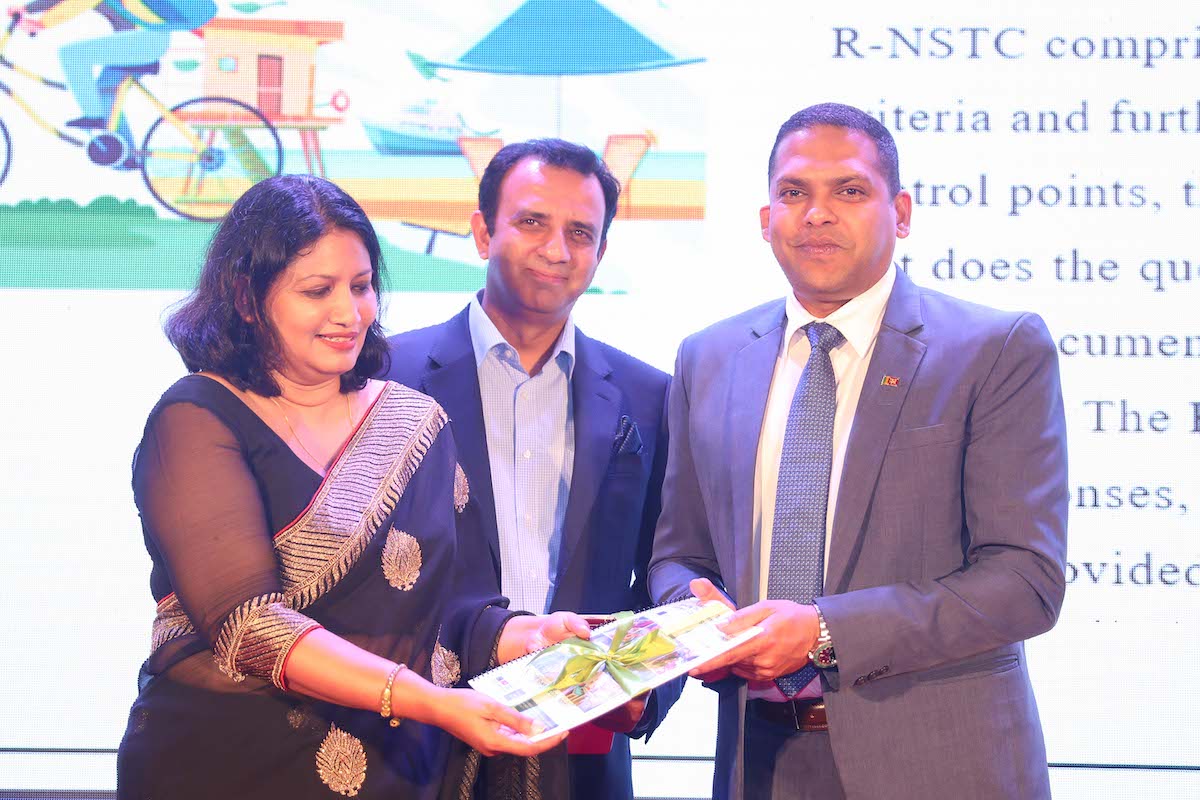
Harin Fernando, Minister of Tourism and Lands, Government of Sri Lanka with Solidaridad Asia’s senior leadership at the launch event .
The Sri Lankan tourism industry celebrated its new momentum in Colombo at the end of March, 2024. At the event the Sri Lanka Tourism Development Authority (SLTDA), together with Solidaridad Asia, launched the Readiness for National Sustainable Tourism Certification (R-NSTC) framework.
This pioneering initiative, with its focus on small and medium-scale tourism accommodation and service providers, plans to galvanize the tourism sector and steer it towards a responsible and sustainable tourism industry.
The government plans to play a role in establishing tourist infrastructure and facilities. As SLTDA Chairman Priantha Fernando said in his address, “The tourism sector brings livelihood to the citizens of Sri Lanka, earns much-needed foreign exchange, and contributes more than 10 percent to the GDP. It also brings with it responsibilities – to protect the environment, biodiversity, and wildlife.”
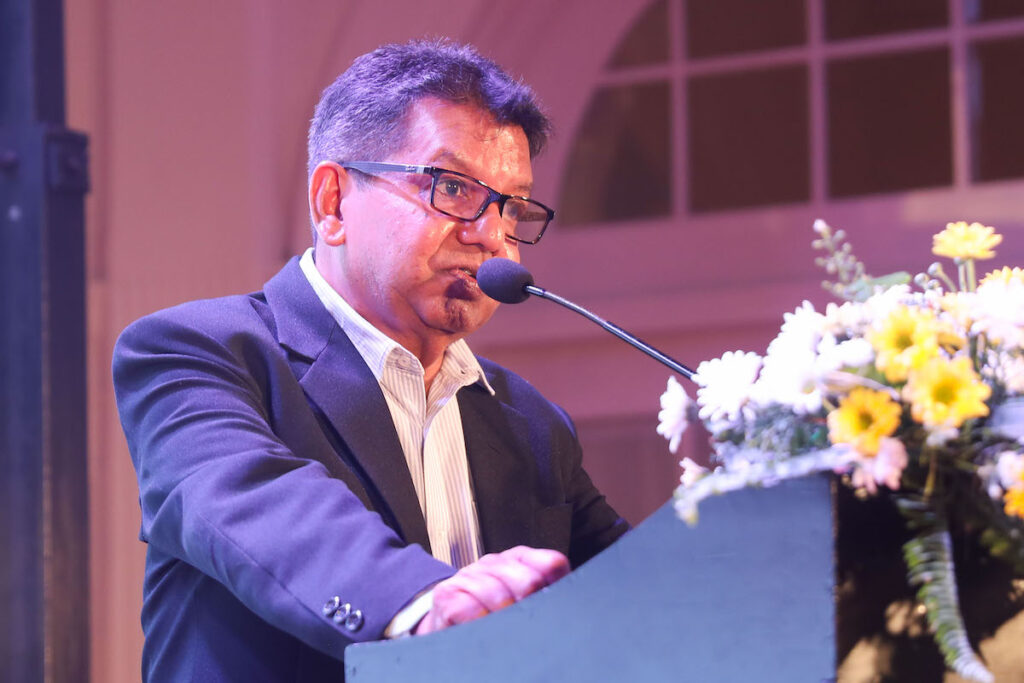
There are several challenges to be addressed within the tourism sector in Sri Lanka. It was found that hotels and resorts consume nine times more water than a household per night per person, and the tourism industry as a whole generates double the volume of solid waste produced by municipalities.
Against this backdrop, SLTDA and Solidaridad Asia have introduced the R-NSTC framework to create a template for incorporating sustainable practices in the country’s tourism sector. The framework has been developed in alignment with the larger goals, shared by both organizations, to ensure livelihood for citizens, while also preserving the environment and the island’s biodiversity.
Sustainable tourism isn’t just about protecting the environment; it’s about harnessing the transformative power of travel to build bridges between cultures and foster mutual understanding. Dr. Johann Hesse, Head of Cooperation, Delegation of the European Union to Sri Lanka and the Maldives
The R-NSTC was inaugurated on 28 March 2024 in the presence of Harin Fernando, Minister of Tourism and Lands, Government of Sri Lanka, who expressed hope for the future of tourism in the island nation in light of the recent rise in the number of visitors.
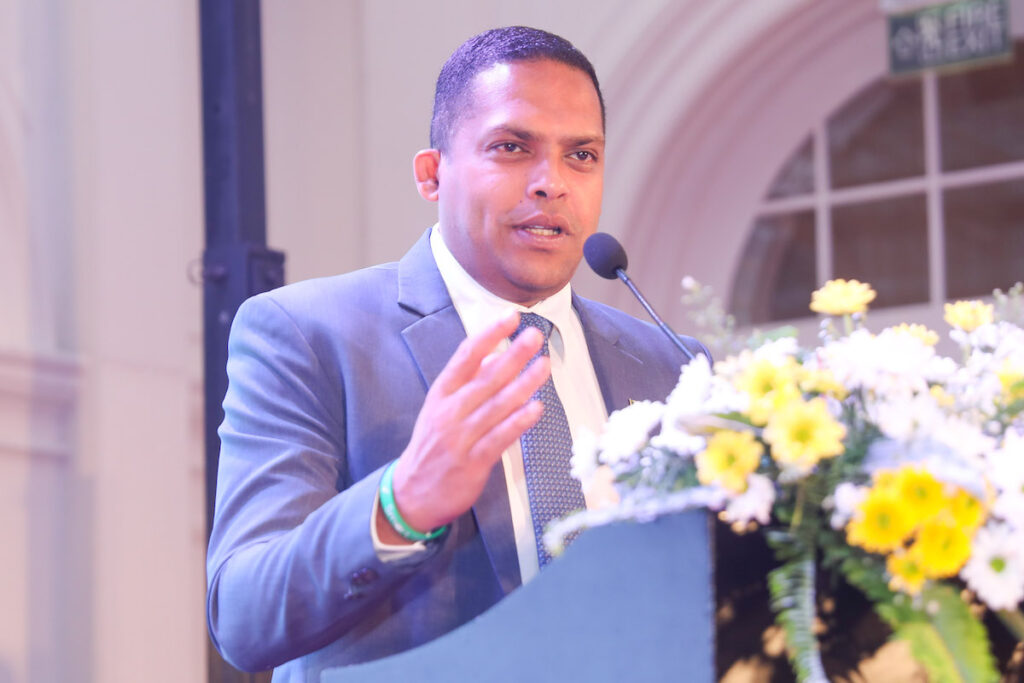
The R-NSTC framework is a self-assessment tool that allows tourism industry players and operators to assess their compliance against social, economic, environmental, and cultural parameters. These are based on nine principles that serve as ‘criteria’ or ‘control points’ — namely, Sustainability Management, Legal Compliances, Staff and Workers, Local Community Engagement and Heritage, Solid Waste Management, Water Management, Energy Conservation, Environment Conservation, and Safety and Security.
The framework will help entities evaluate their level of preparedness for complying with Sri Lanka’s National Sustainable Tourism Certification (NSTC) and the Global Sustainable Tourism Certification (GSTC) programmes.
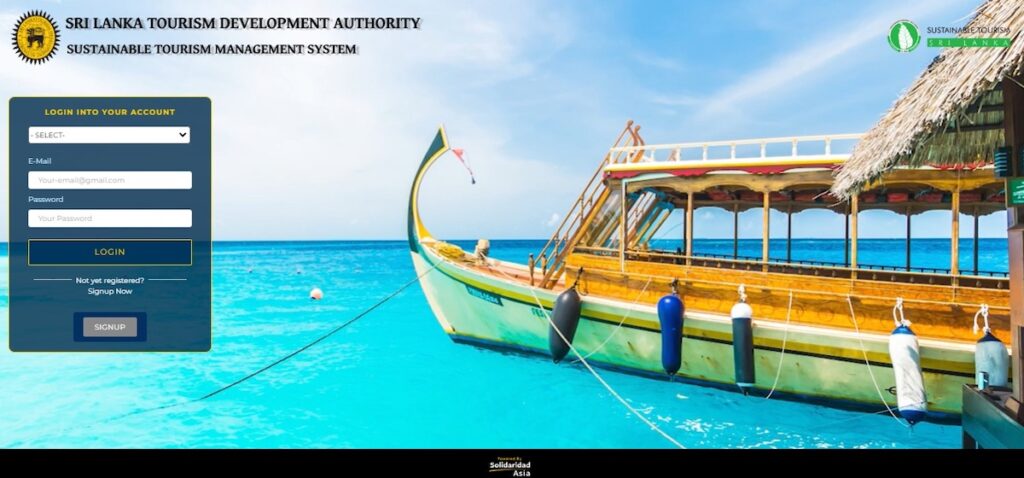
Before an entity decides to invest in the NSTC and GSTC certification process, the framework is designed to encourage corrective measures within the tourism sector that will actively protect biodiversity, workers’ rights, while reducing pollution, improving water efficiency, and promoting local culture and heritage. Upon completion of the R-NSTC self-assessment, the tourism entities will be awarded a Self-Assured Status certificate, which will permit them to apply for NSTC certification.
Promoting travel tool to Uva province at the event
The second highlight of the event was the launch of the Uva Provincial Tourism Promotional website , which is a part of the European Union-funded initiative, Developing Resources and Empowering Communities ( DeREC ), in the Uva province of Sri Lanka. The site, serving as a guide, an information resource, and a means to connect with essential services, promotes signature tourism sites within the province and provides an exceptional experience for visitors.
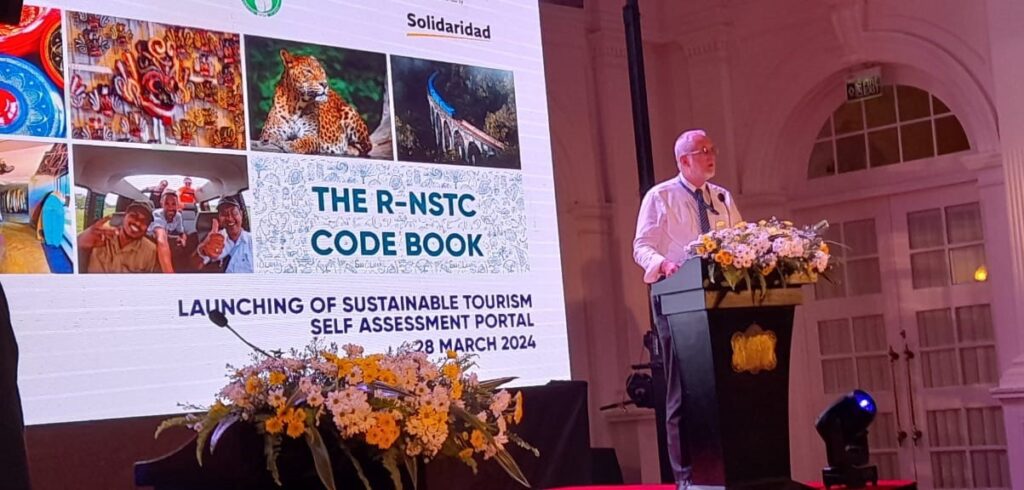
In his keynote address inaugurating the Uva website, Dr. Johann Hesse, Head of Cooperation, Delegation of the European Union to Sri Lanka and the Maldives, said, “By embracing sustainable practices, Sri Lanka can position itself as a beacon of ethical tourism, attracting conscientious travelers eager to immerse themselves in authentic experiences while leaving a positive impact on the places they visit.”
He added, “However, the journey toward sustainability is not without its challenges. It requires a collective effort, a shared vision, and unwavering dedication from all stakeholders. The EU stands ready to walk alongside Sri Lanka on this path, offering guidance, support, and solidarity.”
The launch event for R-NSTC and the new Uva website was attended by over 100 guests from the government, the private sector, corporations, international and local NGOs, stakeholders from the tourism industry, and end-beneficiaries from the small and medium-sized enterprise (SME) sector.
With its natural beauty and cultural heritage, Sri Lanka is ready to emerge as a leader in responsible travel.
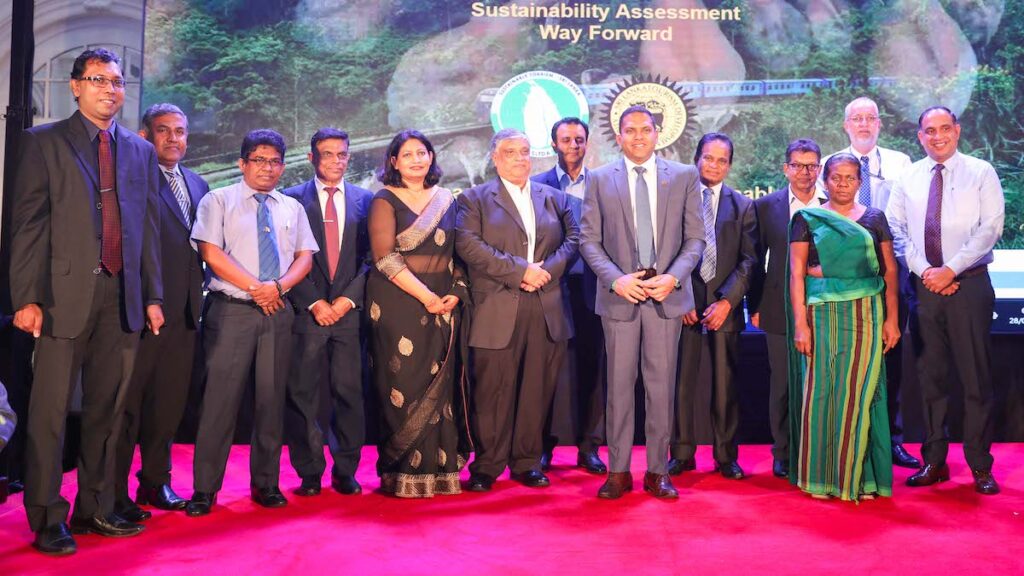
SHARE THIS ARTICLE
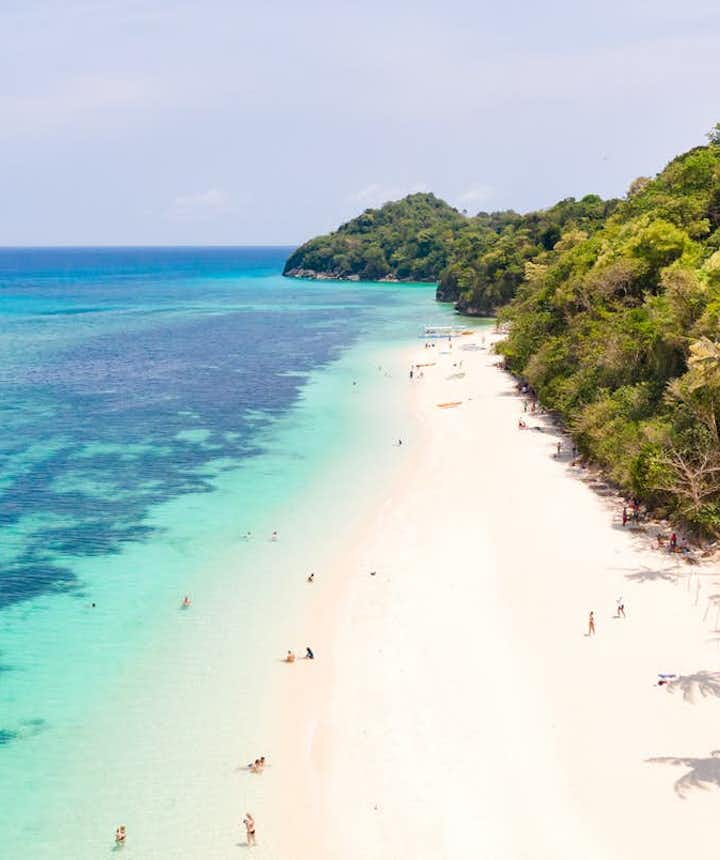
Sustainable Tourism in the Philippines: How to be a Responsible Traveler

What is Sustainable Tourism?
15 ways to be a responsible traveler in the philippines, 1. visit ecotourism destinations and attractions in the philippines, 2. stay at eco-friendly hotels and resorts in the philippines, 3. book with dot-accredited local tour operators, 4. leave no trace, 5. bring reusable utensils and refillable bottles, 6. go on cultural immersions, 7. try farm tours, 8. eat at local restaurants, 9. follow proper interaction with wildlife, 10. reduce your carbon footprint with your transport choices, 11. explore nearby destinations, 12. spend more time in destinations, 13. support local when buying souvenirs, 14. use environment-friendly travel products, 15. go digital.
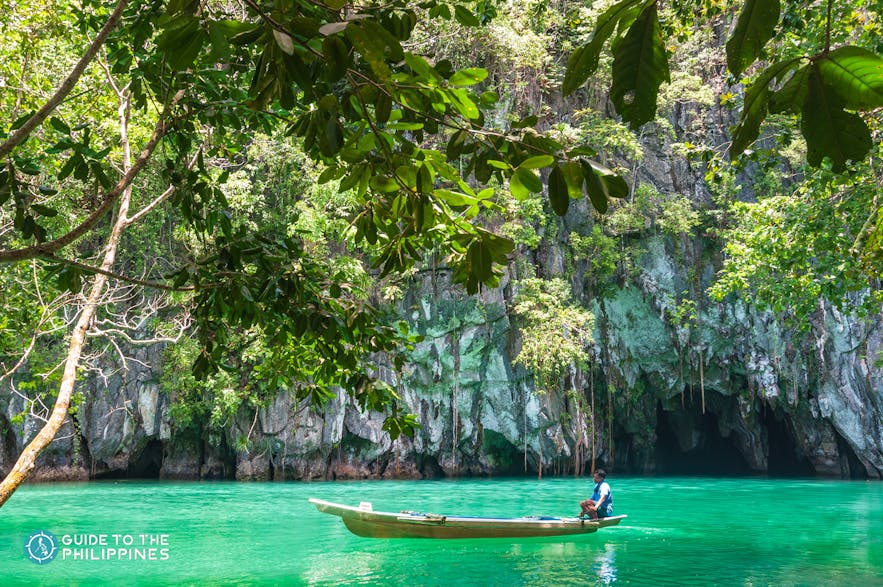
Puerto Princesa Underground River in Palawan
With over 7,000 islands, the Philippines is home to many natural tourist spots . Stunning islands, spectacular beaches, breathtaking mountains, and rare endemic wildlife are just some of the reasons why you should visit the Philippines . It’s no surprise that the Philippines attracts millions of tourists every year, and while this is great for the country’s economy, it could affect its natural attractions, especially if tourists do not follow responsible travel and sustainable tourism practices.
In fact, in 2020, it was reported that the Philippines was ranked 94th out of 99 countries when it comes to promoting sustainable tourism. In 2018, the top island Philippine destination called Boracay was closed to the general public for six months for rehabilitation.
See our popular Philippines Tour Packages
Relaxing 4-day beachfront mithi resort bohol package from manila, amazing 4-day movenpick boracay 5-star resort package with airfare from manila or clark & transfers, fuss-free 3-day bohol package at mithi resort with airfare from manila & transfers.
Boracay, one of the most popular Visayas tourist spots , was suffering from deteriorating environmental conditions, partly due to the millions of tourists who visit it every year. These are just some reasons why practicing and promoting sustainable tourism in the Philippines is important.
Through campaigns like Save our Spots , the Department of Tourism has encouraged domestic and foreign tourists to travel responsibly and sustainably. The least we can do as tourists is to follow sustainable practices in the Philippines to help protect our environment. But there’s more to sustainable travel than just following the leave no trace principles.
In this article, we give you more ways you can help conserve the Philippines’ best natural assets on your next vacation in the Philippines .
See our popular Philippines Vacation Packages

El Nido, Palawan
Sustainable tourism is the practice of considering the impact of tourism on the environment, the economy, and society while at the same time taking into account the needs of the tourists, the host communities, and the industry.
Why is sustainable tourism important? If we don’t take care of the natural resources in our tourist spots, it will lead to their deterioration and destruction, and future generations won’t be able to appreciate their beauty, while those from the tourism industry can potentially lose their jobs and source of income.
Being a responsible tourist is just one way to ensure that the best places to visit in the Philippines remain beautiful and open for everyone to enjoy.
See our popular Boracay Vacation Packages
Luxurious 5-day boracay package at 5-star movenpick resort & spa with airfare & chocolate hour, stress-free 4-day boracay package at tides hotel with airfare from manila or clark & island hopping.
What are the 15 principles of sustainable tourism? There are many ways to be a responsible tourist in the Philippines and here are just some of them:

Basco Lighthouse in Batanes
The Philippines is home to many tourist attractions, and apart from the top tourist spots in the Philippines , there are ecotourism destinations and attractions like Batanes , The Masungi Georeserve in Rizal, Palaui Island in Cagayan, and Apo Island in Negros Oriental. These places and spots not only offer amazing local experiences but also give you the chance to practice responsible tourism as the local communities and stakeholders follow some of the best practices in sustainable tourism.
The people of Batanes, for example, have done a wonderful job of preserving the culture of the Ivatans by keeping their stone houses intact. The locals here also practice sustainable fishing and farming, while the local government prioritizes local culture and investors, which is why instead of 5-star hotels, you’ll mostly find homestays here.
See our popular Eco Tours
Shared puerto princesa underground river tour in palawan with lunch & hotel transfers, bohol chocolate hills countryside private tour with transfers & add-on loboc river cruise lunch, manila intramuros historical express 90-minute tour in eco-friendly bamboo bike + optional upgrades.
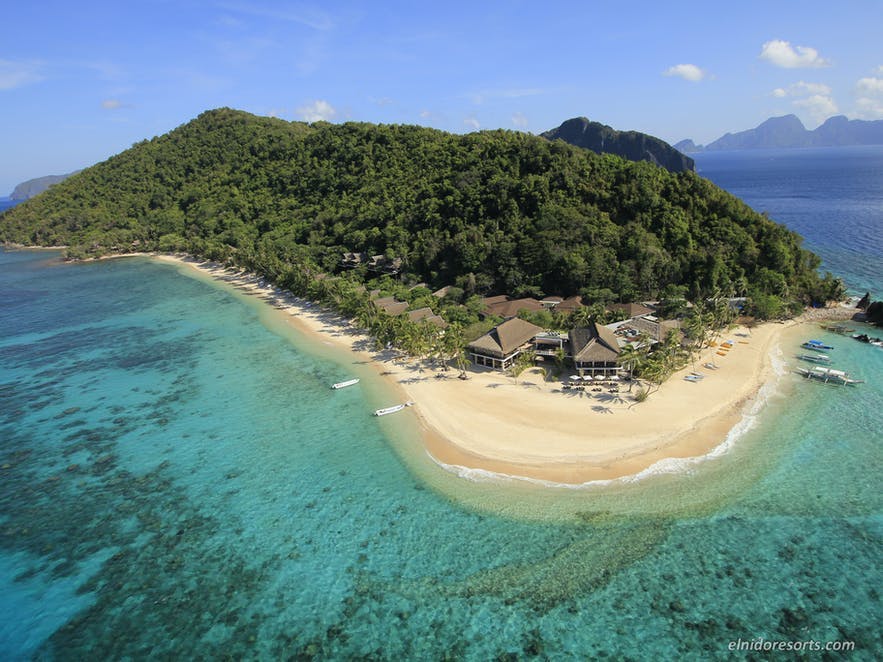
Photo by El Nido Resorts group
Your choice of accommodations is also another way how to practice sustainable tourism. Staying at some of the best eco-friendly resorts in the Philippines allows you to reduce your carbon footprint when traveling. Eco-friendly hotels follow sustainable practices such as organic farming, tree planting, rainwater recycling, solid waste segregation, composting, coastal clean-ups, farm-to-table dining, using local building materials, and using solar energy.
See our popular Philippine Luxury Vacation Packages
Upscale 4-day coron club paradise palawan resort island package with flights from manila or clark, luxurious 3-day coron club paradise palawan resort island package with flights from manila.
Look for properties that have certification or awards from the Philippine Green Building Initiative, Inc, the ASEAN Green Hotel Awards, or the DOT’s ANAHAW Philippine Sustainable Tourism Certification.
Of course, you can also do more beyond just booking and staying at these hotels and resorts. You can turn off all the electronic devices, including the air conditioner, when leaving your hotel room. Let the staff know you will be reusing your towels, bed linen, and sheets. If your room is clean anyway, hang the “Don’t Disturb” sign to prevent unnecessary vacuuming and cleaning.
See our popular El Nido Tours and Activities
Private el nido palawan lio airport to or from any el nido town hotel transfer service, palawan el nido shared island hopping tour a with lunch & transfers | secret lagoon, shimizu island, private puerto princesa airport to or from el nido town transfer service.

ATV Ride in Mt. Mayon, Legazpi, Albay
The Department of Tourism has advised local hotels, resorts, and tour operators to seek DOT accreditation so the department can help them adopt sustainable tourism practices. DOT-accredited accommodations and tour operators get access to technical tools that will help them become sustainable. This is part of the DOT’s plan on how to develop sustainable tourism in the country.
When you tour the Philippines , book with DOT-accredited travel agencies like Guide to the Philippines. We partner with DOT-accredited hotels, resorts, and tour operators and help them to widen their global reach by showcasing their products online in our platform.
See our popular Legazpi Tours and Activities
Mayon volcano legazpi atv ride black lava wall trail with guide & transfers, albay best views of mayon sightseeing & culture tour with snacks & transfers from legazpi, albay private half-day tour from legazpi with lunch | cagsawa ruins, daraga church, sumlang lake.

Daku Island in Siargao
The “Clean as you go” or CLAYGO rule should be followed not only when you travel but in your everyday life. Simply put, leave no trace means you don’t leave any item when you visit a natural tourist destination. This rule is mainly for litter like tissue, food wrappers, and plastic bottles, but be mindful of unintentionally leaving behind personal belongings, which could also end up harming the environment.
Some tourist destinations like the Pink Beach in Zamboanga have their own strict leave no trace policies, and those who violate them can be charged fines or put in jail and/or community service.
See our popular Zamboanga Tours and Activities
Zamboanga pink sand sta. cruz island private tour with vinta ride, lunch & transfers, zamboanga city private historical day tour with transfers, dapitan zamboanga del norte day tour with optional side trip to dipolog city.
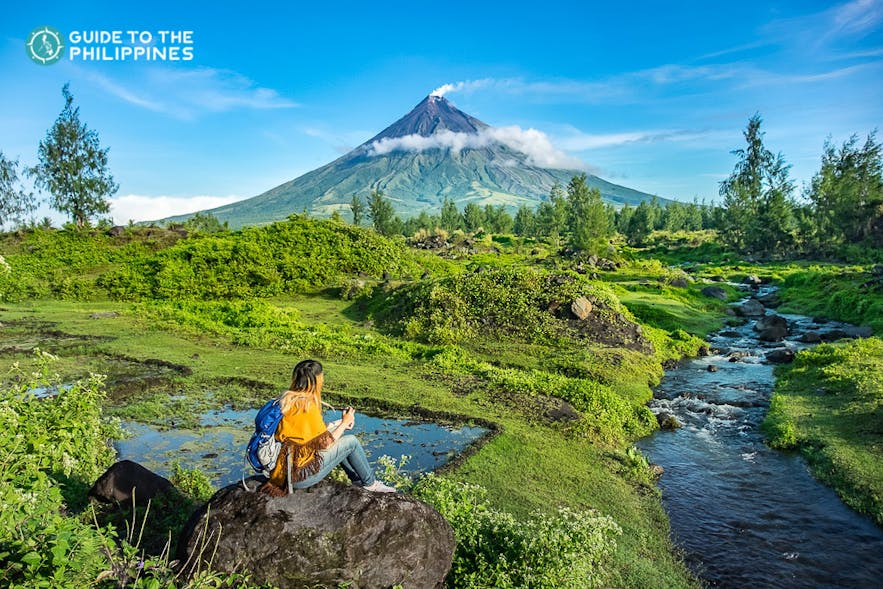
Mt. Mayon in Legazpi, Albay
One simple way to practice how to be a responsible traveler is to bring your own reusable utensils and water bottles when you travel. This will help reduce your use of single-use plastics and lessen your carbon footprint when traveling. If you’re worried about these items taking too much space in your bag, you should consider foldable travel spoons, forks, and chopsticks and collapsible water bottles.
Similar to the leave no trace policy, some places in the Philippines have tried reducing waste by banning single-use plastics. In Siargao , for example, plastic bags are not allowed, and restaurants are prohibited from selling water in plastic bottles. El Nido also has a plastic ban which requires all boat passengers to surrender their single-use plastic bottles and bags before boarding.
See our popular Siargao Tours and Activities
Private siargao tri island hopping tour with hotel transfers | guyam, naked, daku islands, siargao airport to/from any hotel in general luna | private transfers, siargao land tour to magpupungko rock pools, cloud 9, coconut mountain view & more with transfers.
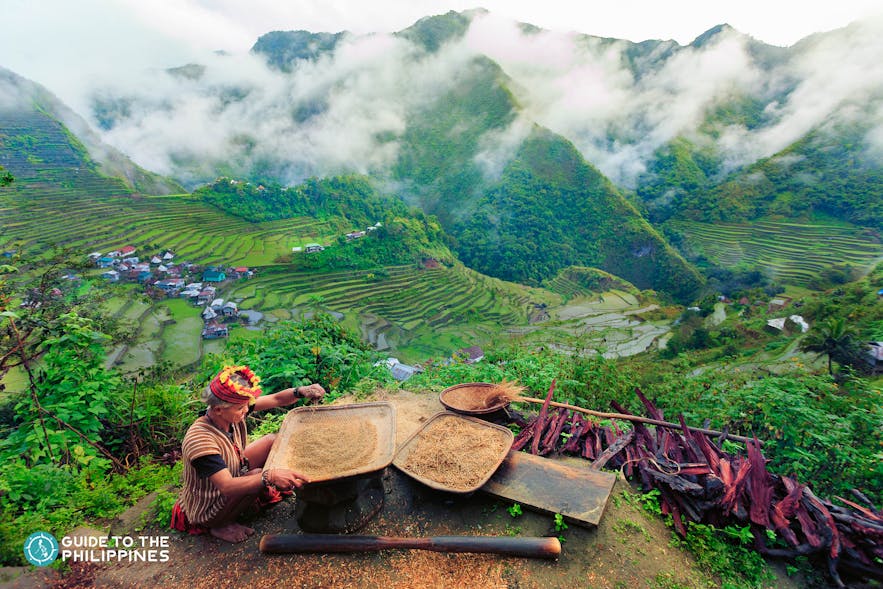
Ifugao native at the Banaue Rice Terraces
The Philippines is home to many different cultures, and one way to experience some of these cultures and how to encourage sustainable tourism is to go on a cultural immersion in an indigenous village. Cultural immersion can be as simple as sharing a meal with some of the locals or participating in their local activities or as immense as living with the locals in their homes for a period of time. Many Luzon tourist spots like Buscalan, Batad, Banaue , and Sagada offer homestays for tourists.
Whatever path you choose, make sure to always be respectful of the traditions, rituals, and the locals themselves. Learning about another culture and way of life will not only be a learning experience, but it will also help you appreciate the destination even more.
See our popular Cultural Tours
Bohol countryside private tour & shared loboc river lunch cruise with transfers, bohol countryside private tour with loboc river cruise lunch & transfers from cebu city.

Photo by Bohol Bee Farm
When we think about what are the characteristics of a sustainable tourism destination, many of them can actually be found on a farm, so staying at or touring a farm is a no-brainer when it comes to traveling responsibly.
The Philippine agrotourism industry has bloomed, thanks to the country’s best farm tour destinations . Agrotourism in the Philippines offers agricultural activities like feeding animals, picking your own fruits and vegetables, and various workshops, including cooking demonstrations.
Take it to the next level by staying at farm resorts in the Philippines . Spending a couple of days in these farm stays will not only teach you how to achieve sustainable tourism, but it will also teach you ways of how to be more sustainable in your daily routine.
See our popular Farm Tours
Bohol countryside tour with loboc river cruise lunch & panglao island tour, tagaytay palace in the sky taal view & farms shared day tour with lunch & transfers from manila, guimaras top attractions & island hopping tour with lunch & transfers from iloilo city.

Filipino cuisine offers a variety of tastes, smells, and textures, and if you can’t have a meal at an actual Filipino home, the next best way to experience it is in a local Filipino restaurant. Not only will you experience a more authentic meal, but you will also help out small businesses thrive.
Patronizing local restaurants also help the environment. Local restaurants that source their ingredients locally have a smaller carbon footprint because the produce doesn’t have to travel far to reach their destination. While eating at any restaurant, remember that you can help reduce your food waste and promote sustainability by only ordering food that you can finish and ordering dishes with ingredients that are in season.
See our popular Food Tours
Coffee farm tour at amadeo cavite near manila & tagaytay with live brewing & tasting sampler, manila binondo & intramuros full-day tour with guide & transfers, iloilo city food tour & sightseeing with transfers | la paz batchoy, pancit molo, jaro church.

Tarsier in Bohol
Not all wildlife attractions are created equal. Do your research and look for those that consider the welfare of the creatures that they feature. Show that you know how to travel responsibly by following all the rules set by the guides.
For example, when visiting the Philippine Tarsier Sanctuary in Bohol , you will be told to stay quiet as much as possible, not use flash when taking photos, and refrain from touching the tarsiers to ensure that they won’t get stressed.
See our popular Bohol Tours and Activities
Bohol countryside tour chocolate hills to loboc river cruise lunch with hotel transfers, bohol island hopping private tour to balicasag & virgin islands with dolphin watching & transfers.
If you want to see and swim with whale sharks in Donsol, you will be told to keep your distance from the animals and not use flash photography to avoid startling and hurting them.
See our popular Sorsogon Tours and Activities
Sorsogon donsol firefly tour with transfers, sorsogon matnog island hopping tour with lunch & transfers | tikling island, juag marine sanctuary, sorsogon tour package to bulusan park & top attractions with lunch & transfers from legazpi.
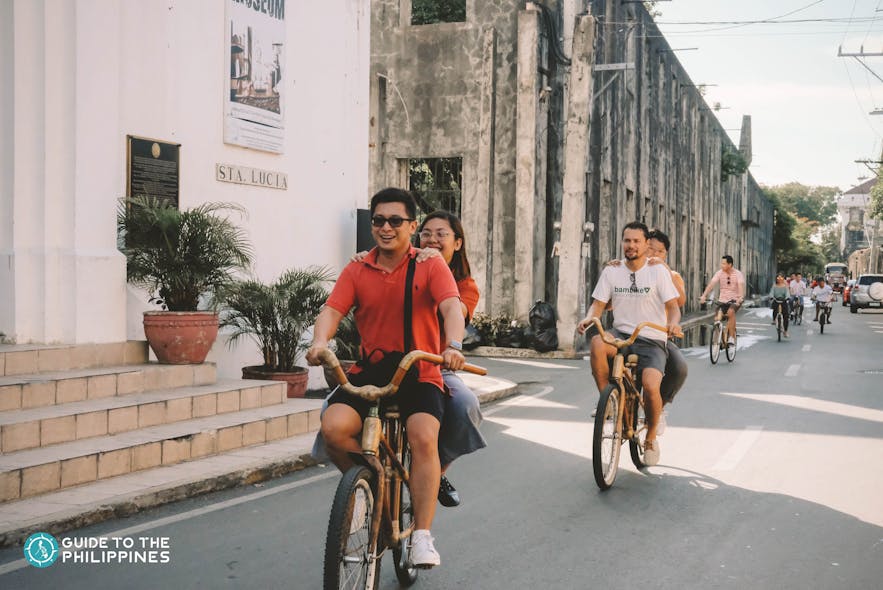
Bamboo bike ride in Intramuros, Manila
Transportation can greatly add to your carbon footprint, but with many options for traveling to and within a destination, your choices can help you lessen that. When taking flights, choose direct flights over those with layovers. Heavier airplanes also consume more fuel, so do your part and pack as light as you can.
How to achieve sustainable tourism while exploring a destination? Choose to walk or bike whenever possible. Not only do you help reduce your carbon footprint, but you’ll also get to appreciate your surroundings more since you are passing by them at a slower pace. Destinations like Boracay and Intramuros in Manila offer bike tours in the Philippines where you can explore attractions while burning some calories!
If your stops are not close enough to bike or walk to, use public transportation or shared rides instead of using a private vehicle.
See our popular Manila Tours & Activities
Manila binondo shared walking food tour with guide, manila intramuros shared half-day walking tour with guide.
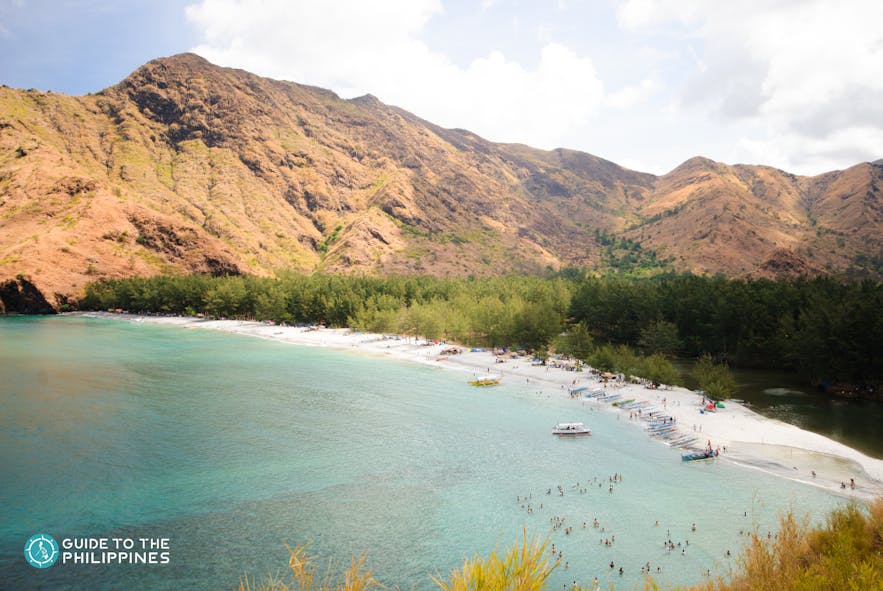
Anawangin Cove in Zambales
Of course, if you can forego the flights altogether, the better, as this means your carbon footprint will be lower. The Philippines is full of amazing destinations that, chances are, you don’t need to board a flight to see at least one of the best beaches near Manila or the best beaches in the Philippines . If you want to explore Luzon, you can go on a road trip near Manila and enjoy nearby places like Pampanga , Bataan , Batangas , and Tagaytay .
Posting about your trips is also a simple way of how to promote sustainable tourism. If more people knew about the amazing destinations that are near where they live, more travelers would be willing to explore these, which helps distribute tourists across several destinations more evenly.
See our popular Tagaytay Vacation Packages
Relaxing 3-day tagaytay package at quest hotel with breakfast & massage at nurture wellness village, amazing 7-day volcano adventure tour package to tagaytay, tarlac & albay with accommodations.
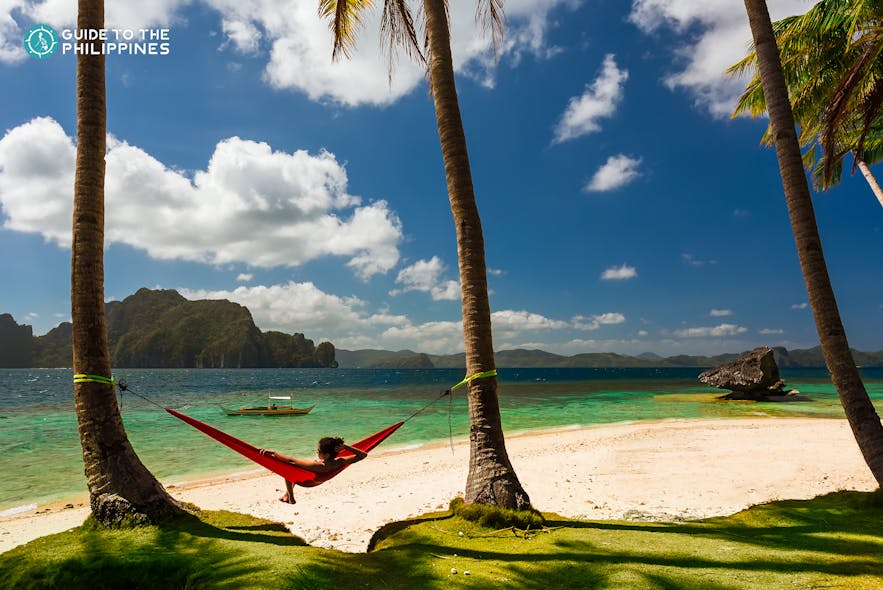
While it is sometimes tempting to pack a lot of destinations in your travel itinerary, consider limiting your vacation to just one area. Staying in one location reduces your carbon emissions since you don’t need to travel from one destination to the next. Booking a holiday in one place also means less time actually traveling and more time exploring, which allows you to spend more time in attractions because your visits aren’t rushed.
For an even more convenient vacation, you can book Philippine tour packages . Some of these packages already include accommodations and tours, so you can focus on taking in and appreciating the destination itself.

Whether you visit Luzon, Visayas, or Mindanao tourist spots , you’ll likely find a shop or even roving vendors selling unique and locally made souvenirs. Patronizing these small businesses will not only help the local industry thrive, but the items you will buy will more likely have a smaller carbon footprint compared to those that you can find in big shops since locally made souvenirs don’t need to travel far to reach the customers.
See our popular Baguio Tours and Activities
Baguio city shared cultural & outdoor tour with lunch & snack | mines view park, tam-awan village, atok gardens day tour with transfers from baguio | northern blossom, sakura park & tayao gardens, baguio top cultural & heritage attractions tour with lunch & transfers.
If you can, visit shops that actually allow tourists to see the production process so you can learn about and understand the local heritage more. In places like Zamboanga City , Vigan , and Baguio , you can visit weaving centers and villages to see how local fabric is made.
See our popular Vigan Tours and Activities
Ilocos sur vigan city heritage & sightseeing tour with horse-drawn carriage ride & transfers, vigan historical sightseeing city day tour with transfers & kalesa ride, ilocos sur tour to vitalis villas resort, historical & outdoor adventure with transfers from vigan.
It is also better to buy souvenirs that you will actually use so you can lessen waste and save money. For example, when visiting Laguna tourist spots , it is advisable to drop by Liliw so you can shop for affordable but sturdy slippers and shoes.
See our popular Laguna Tours and Activities
Enchanted kingdom day pass with unlimited rides and optional bus transfers, laguna mt. romelo & waterfalls shared minor day hike with transfers from manila, san pablo laguna tour to heritage and museum sites with snacks & souvenir.
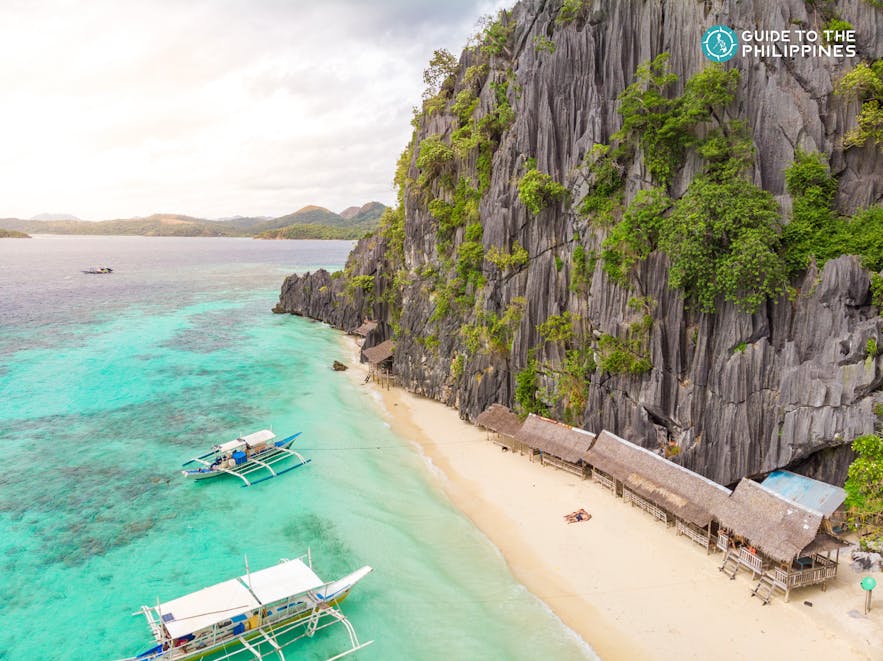
Banol Beach in Coron, Palawan
Sometimes the products we use on our travels affect the environment negatively. The chemicals on our sunblock and our insect repellant can have chemicals that are harmful to the reefs, the sea, and the rest of the environment. Before your trip, look for sunscreen and insect repellants made from natural ingredients that won’t harm the planet.
Sand- and water-repelling towels are also good to use when you’re traveling to the best beaches in the Philippines . Bringing home sand stuck to your towel may be just a mild annoyance to you, but put together all the sand travelers accidentally bring home, and you have a beach eroding faster than usual.
See our popular Coron Vacation Packages
Budget-friendly 4-day coron palawan package at skylodge resort with flights from manila & tour, stress-free 5-day coron palawan package at bacau bay resort with flights from manila, comfy 4-day coron palawan budget package at ruhe suites with flights from manila, tour & transfers.
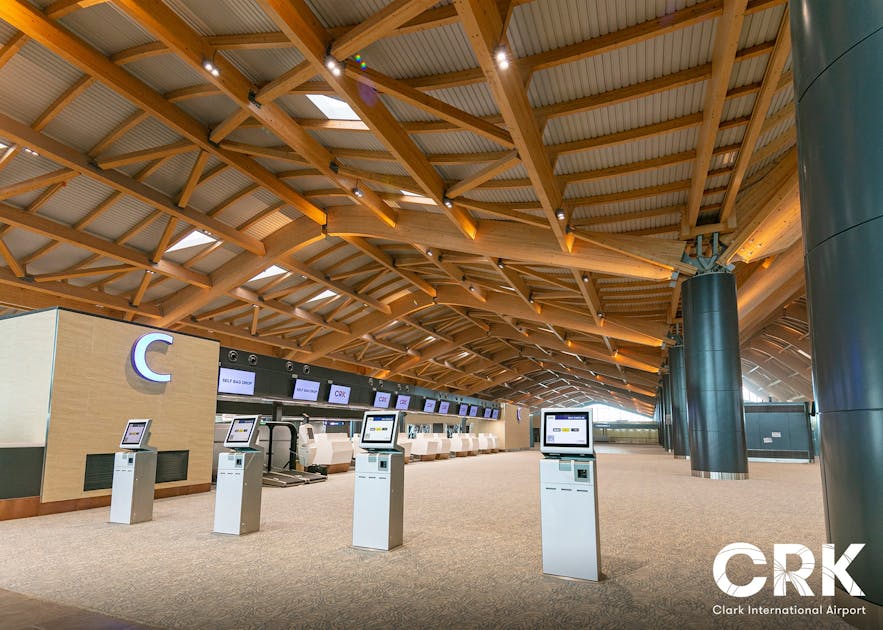
Photo by Clark International Airport
What is the aim of sustainable tourism? It is to ultimately protect the environment while also taking into consideration the need of travelers and tourism stakeholders. One of the simplest ways you can help is to ditch the printed itineraries and tickets and go fully digital.
Most airlines and hotels now accept digital copies of itineraries or QR codes, so there’s no reason for you to print out something that you could actually misplace. If you’re worried about not being able to download what you need because of poor or no internet connection, access what you need when you have connectivity and save a screenshot so it becomes available even when you’re offline.
While digital activities also have their own carbon footprint, at least they don’t have a physical output that could eventually end up in the trash.
Practice Sustainable Tourism in the Philippines
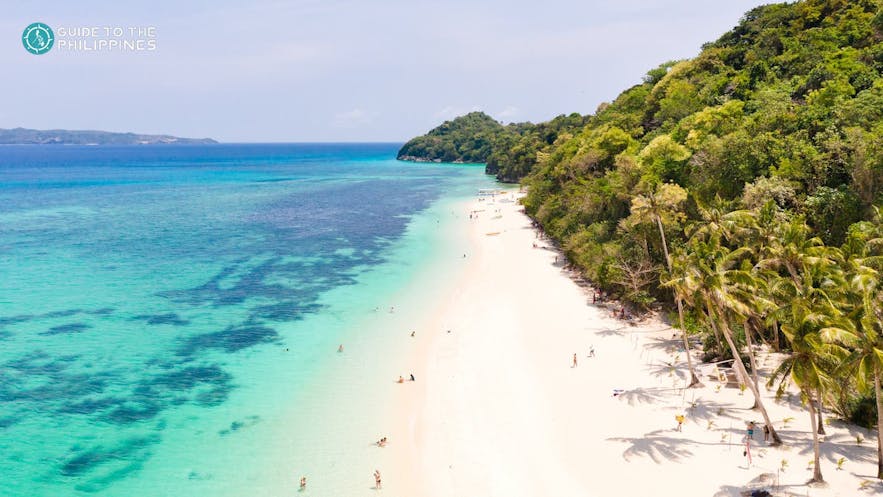
With the effects of climate change becoming harsher with every passing day, we need to rethink the way we live, and that includes how we travel. We need to understand what is sustainable tourism development and do our part as travelers to help preserve the beauty of our favorite travel destinations.
Traveling sustainably and responsibly is the only way that we and future generations can keep enjoying all the attractions and the best islands in the Philippines for many years to come.
Popular articles

Best Palawan Guide: Top Tours, Where to Stay, How to Get Around
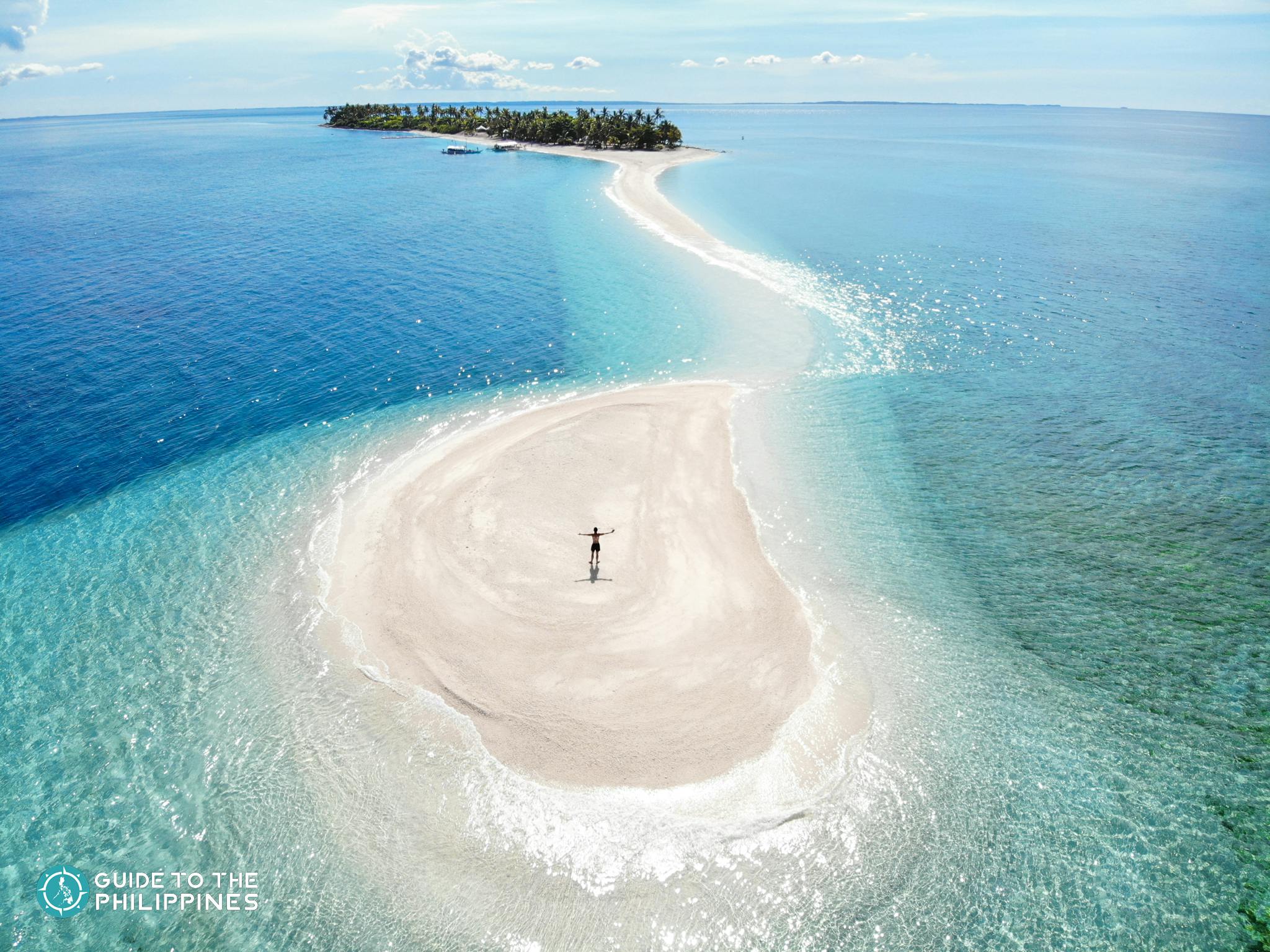
20 Most Beautiful Sandbars in the Philippines: White Sand, Longest, Vanishing
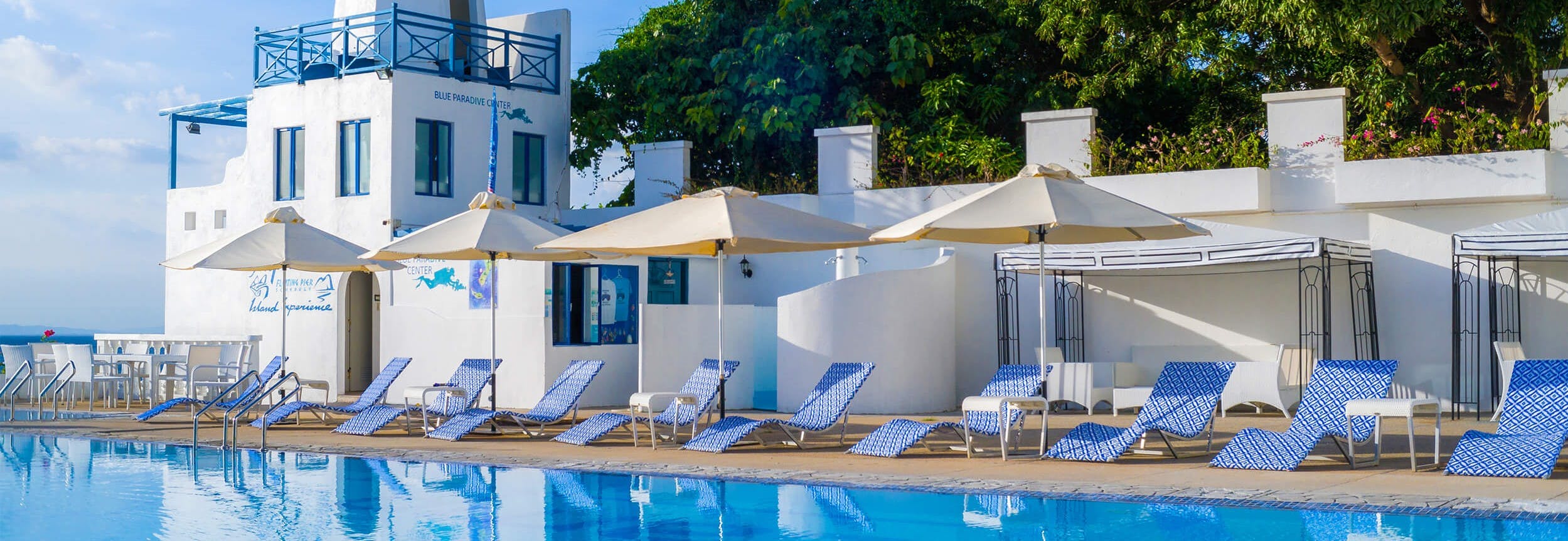
11 Best Santorini-Like Resorts in the Philippines: Near Manila, Cebu, Palawan, Vigan
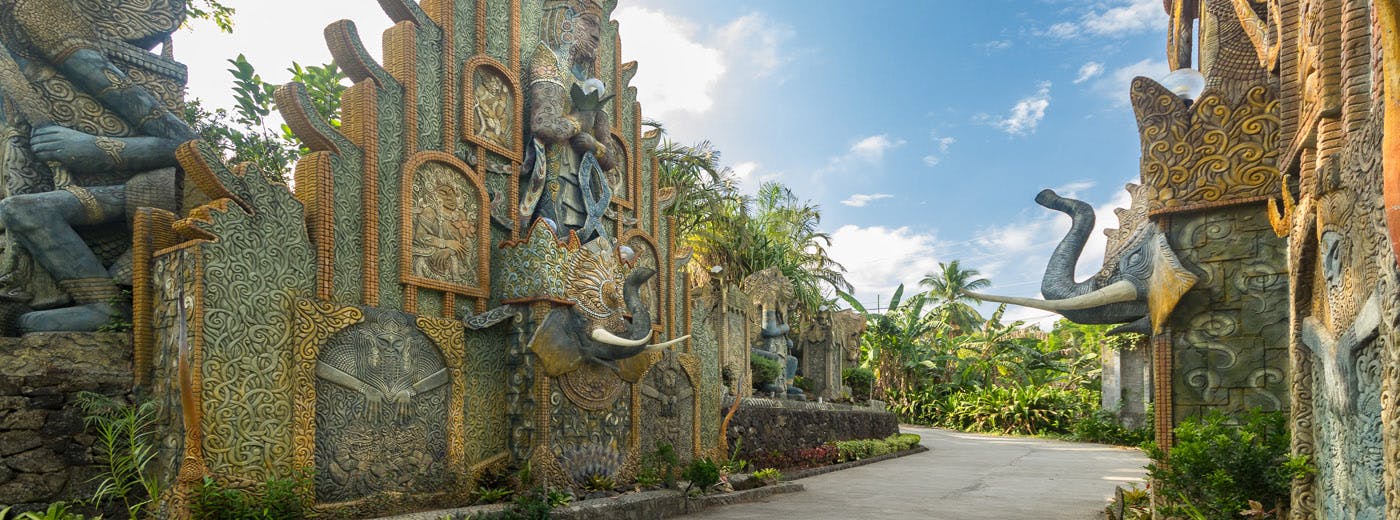
15 Best Tropical Bali-Like Resorts in the Philippines: Near Manila, Siargao, Cebu, Bohol
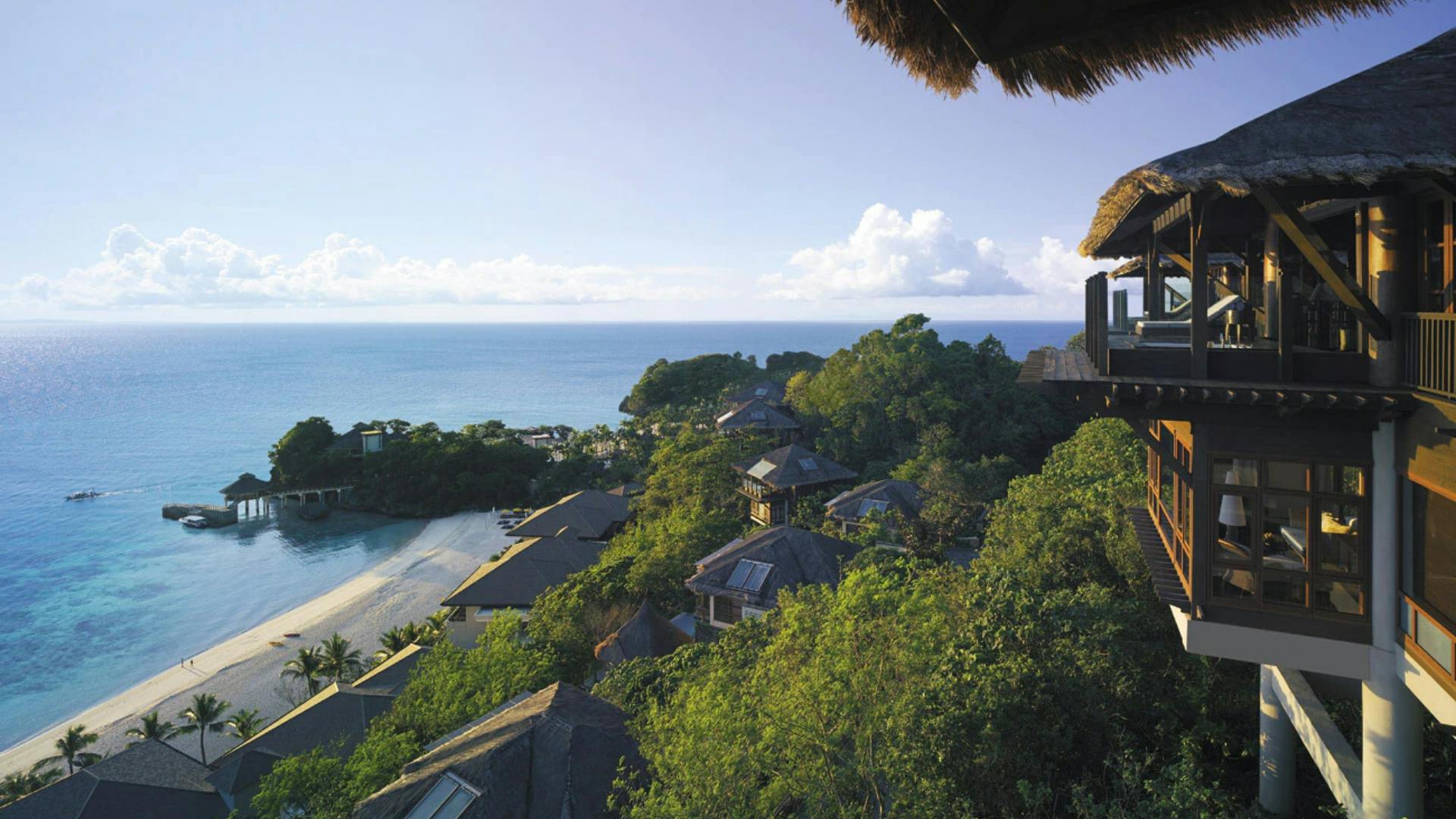
10 Best Treehouse Resorts in the Philippines for a Scenic Getaway at Mountains, Beaches & Rivers
Other interesting articles.
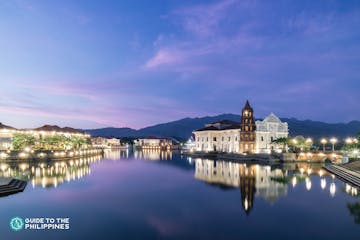
Bataan Philippines Travel Guide: Beach Resorts + Tourist Spots
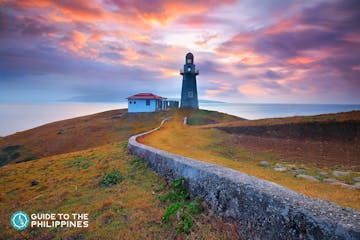
Batanes Travel Guide: Smallest & Northernmost Philippine Province

10 Best Budget-Friendly Quality Resorts Near Manila: Batangas, Zambales, La Union, Bataan

Download the Philippines’ biggest travel marketplace to your phone to manage your entire trip in one place
Scan this QR code with your phone camera and press the link that appears to add the Philippines’ biggest travel marketplace into your pocket. Enter your phone number or email address to receive an SMS or email with the download link.
Top things to do in the Philippines
Discover all the adventures you can experience in the Philippines
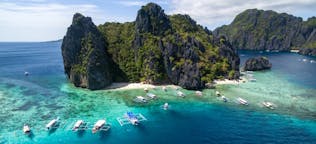
Philippines Tour Packages
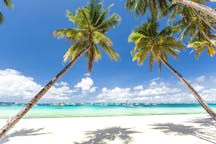
Boracay Island

Bohol Island
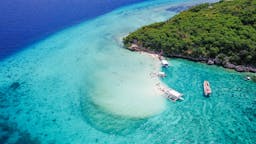
Cebu Island
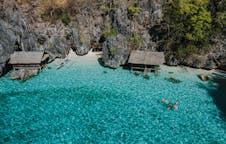
Coron Palawan
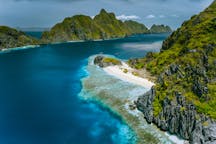
El Nido Palawan
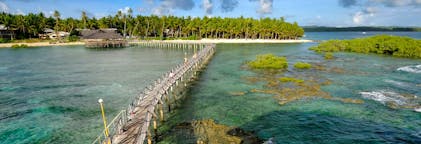
Siargao Island
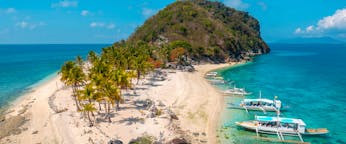
Iloilo City and Nearby

What sustainable tourism means in practice
A 4-day family trek last month was vivid proof of the truth in the old adage: it is the journey and the people that truly matter, not just the destination.
It was word-of-mouth recommendation that brought us to the sustainable tourism company Three Sisters, owned and run by women. The guides assured us our children would be well taken care of and our group of novice trekkers would not be rushed.
As we negotiated the uphill steps, passing gushing waterfalls and forests ablaze with rhododendron, we had plenty of time to get to know our two experienced guides and the eight support staff. Their life stories highlighted the transformative power of sustainable, ethical, and empowering tourism in shaping lives and journeys.
Yasudhara is literally a trailblazer. A mother of a 7-year-old, she has had to seamlessly blend her caring role at home with her professional responsibilities as a guide in a male dominated and uncertain industry. Besides leading the pack, Yasudhara kept our children motivated and entertained, leaving an indelible mark on them.
By the journey’s end, the little ones of our foreign friends soaked Nepali phrases. “hfd hfd” became their spirited rallying cry as we moved up and down the trails. Even as Yasudhara sometimes told them to slow down with “la:tf/} la:tf/}” it was the rhythmic chant of “hfd hfd” that followed.

When she first became a guide, Yasudhara recalled she had to defy her family’s wishes. They were skeptical of her choice of career to lead foreigners through Nepal’s remote, rural landscapes. The workplace was equally challenging. At that time, no one was accustomed to female guides, and accommodations were scarce.
Yasudhara slept in dining rooms and outdoors, keeping her distance from male guides who often drank and indulged in unwelcome behaviour. But times have changed. Female-led teams from Three Sisters now guide trekkers all over Nepal.
But now, Yasudhara grapples with the guilt of leaving her child behind, even though she is shaping a future where her son will understand the power of gender equality and women’s economic empowerment. “I want to earn my keep, without having to rely on my brothers and husband,” Yasudhara tells us during a rest stop.
Tila is in her mid-30s, and thrived as a guide before the pandemic, navigating and overcoming many gender stereotypes and challenges in her profession. Starting as an assistant at the agency, she steadily climbed the ranks to become a permanent guide, earning a modest base salary and commissions.
She enjoys preferential access to trips involving foreign visitors. During peak seasons, work flows steadily, allowing her to hibernate during quieter times. She also seized learning opportunities provided by her employer. She participated in courses on the ecosystems of trekking regions, cultural sensitivity, first aid and emergency response, navigation and route knowledge, and sharpening her English proficiency.

Then, the pandemic struck. Trekkers vanished. Tila’s gratitude for finally returning to work is tempered by the reality that Nepal’s trekking industry has not fully recovered. This was her fourth consecutive trek, leaving her cautiously optimistic. Yet the trail ahead remains uncertain.
THE ASSISTANTS
The eight assistants who accompanied us, three women and five men, were more than ‘porters’. This was a group of eight remarkable individuals, distinct from traditional porters found on trekking trails and their significance extended far beyond carrying our gear.
Kusum, 19, harbours dreams of being the first in her family to pursue a Bachelor’s degree in Commerce from a college in Pokhara. Her motivation for joining the trek was twofold: to earn enough to pay for her accommodation expenses, and eventually to earn the experience to be a guide herself one day. With every step she took, she carried not only her backpack but also her aspiration for a brighter future.
Sita, 36, is a single mother with three children. She is from a landless Dalit family, and lives in a rented house by the highway. Entrusting her 17-year-old to care for younger siblings, she works for Three Sisters during peak trekking season and returns to her village to take up the odd agricultural work with meagre wages. Despite challenges, she finds solace in the decent work provided by the trekking company. For women like her from disadvantaged backgrounds, these opportunities are lifelines. “There is so little work in my village, and the money I earn on these treks helps educate and feed my children,” she says.
Yogesh, like many young Nepali men, wants to migrate abroad. He is at the crossroads of his past and an unwritten future. “Our villages are empty, there are few young people left,” he says. “All my friends have gone overseas for work. I am thinking of doing the same.” For Yogesh, this trek symbolised a bridge between two worlds, a chance to bear the costs of recruitment fees for a job overseas instead of his family having to pay.
Khem is an older migrant returnee. His weathered hands bear the calluses of hard labour, each crease etched with memories from 15 years at a construction site in Dubai and two years in Qatar. He recounts how limited opportunities in Nepal drove him out, and his experience in the Gulf: “It was backbreaking work, so far away from my loved ones.”
Dhak Bahadur is in his late-40s and carries the weight of responsibility for his Dalit family back home. His two sons and daughter, on the cusp of adulthood, look up to him. “I want my children to have a better life, they should not endure the hardship I have known,” he says. His broad shoulders carry not only our rucksack, but dreams of education, stability and dignity for the next generation.

Three Sisters upholds a strict rule: Assistants carry no more than 10-12kg each. As customers, we also left a small space in our own rucksacks for their belongings. However, this essential work practice remains far from universal. Despite laws against heavy loads, most ‘porters’ are made to carry 30kg or more of trekking gear. After decades of carrying heavy loads up and down mountains, many have chronic spinal problems and headaches.
At rest stops, the men conversed among themselves, and I glimpsed the value they embraced: women led the way. The Three Sisters are leaving a legacy. Dhak Bahadur confides, “I want my daughter to be fluent in English and become part of a women-led tourism company too.”
A Nepal trek gives visitors a glimpse of the impact of migration and remittance on rural areas. Nearly half of the households have at least one family member working abroad, or someone who has returned from overseas or India. They are predominantly men aged 20-44, and form the backbone of the country’s most productive workforce.
Along the trail, we can see evidence of newfound prosperity from remittances, allowing many families to break free from poverty and deprivation. Yet migration is far from being a seamless journey. It begins with the challenge of pooling resources to cover direct and indirect costs. Upon return, a lingering question returns, 'what next?' as migrant returnees grapple with reintegration.
Migrants, dreamers, carriers of hope shuffle along with silent footsteps along stone steps amidst a stunning backdrop of Annapurna and Machapuchre suffused in the golden light of sunrise. Each step is a promise that every ascent, every descent, is a collective endeavour towards a world where equality, opportunity and compassion bloom brightly like the rhododendron.
- sustainable tourism
The return of the natives
The rise of high-rises, kathmandu’s gravity-defying chariot festival, putting dalits back in business.

IMAGES
VIDEO
COMMENTS
The Netherlands - A country that is promoting sustainable tourism through initiatives such as green hotels, bike-friendly cities, and nature conservation programs. New Zealand - A country that has a strong focus on sustainable tourism, including eco-tourism, conservation efforts, and responsible travel practices.
The importance of sustainable tourism is also highlighted in SDG target 12.b. which aims to "develop and implement tools to monitor sustainable development impacts for sustainable tourism that creates jobs and promotes local culture and products". ... A Compilation of Good Practices. Although it is widely recognized that tourism is not the ...
with UNEP, UNWTO and UNESCO, an Expert Group Meeting on Sustainable Tourism: Ecotourism, Poverty Reduction and Environmental Protection, held in New York, October 2013. To further facilitate the dialogue, DESA commissioned the compendium of best practices for promotion of sustainable (eco)tourism. This compendium, as a supplementary document to
Sustainable tourism should also maintain a high level of tourist satisfaction and ensure a meaningful experience to the tourists, raising their awareness about sustainability issues and promoting sustainable tourism practices amongst them. Reference: Making Tourism More Sustainable - A Guide for Policy Makers, UNEP and UN Tourism, 2005, p.11-12
This day highlights the importance of sustainable tourism —a framework for engaging travelers and the travel industry at large in supporting goals that include protecting the environment ...
Sustainable tourism considers its current and future economic, social, and environmental impacts by addressing the needs of its ecological surroundings and the local communities. This is achieved ...
The One Planet Sustainable Tourism Programme is currently guided by the Global Strategy for Sustainable Consumption and Production 2023-2030 which identifies tourism as a key sector to accelerate sustainability across the multiple stages of its value chain. SCP is about fulfilling the needs of all while using fewer natural resources, including ...
WTTC, UN Tourism and the Sustainable Hospitality Alliance join forces to support Nature Positive Tourism ... This pivotal new collaboration among key global players sets a robust framework for sustainable practices that not only drive significant impact but also exemplify the power of united efforts in conserving biodiversity. This report is a ...
Tourism is a major economic force whose development can have a fundamental impact on societies and the environment, both positive and negative. This guide shows governments how they can make tourism more sustainable. It sets out 12 aims for sustainable tourism and their implications for policy, and describes the collaborative structures and strategies that are needed at the national and local ...
While "sustainable tourism" is a concept, the term "responsible tourism" refers to the behaviors and practices that can lead to sustainable tourism. For example, backpacker tourism is a trend that contributes to sustainability from the various environmental, economic, and cultural activities associated with it. [19]
The International Air Transport Association (IATA) forecasts a 50.4% improvement on 2020 air travel demand, which would bring the industry to 50.6% of 2019 levels. However, a more pessimistic outlook based on the persistence of travel restrictions suggests that demand may only pick up by 13% this year, leaving the industry at 38% of 2019 levels.
Sustainable Tourism refers to sustainable practices in and by the tourism industry. It is an aspiration to acknowledge all impacts of tourism, both positive and negative. It aims to minimize the negative impacts and maximize the positive ones. Negative impacts to a destination include economic leakage, damage to the natural environment and ...
The study identified 31 sustainable tourism practices falling within the categories of "sustainable destination management" and "sustainable business management." The findings revealed that while some tour operators in emerging markets have embraced sustainable business management practices to a certain extent, there are still areas ...
This paper aims to study the progress of research on Sustainable Tourism and to outline and identify the key disciplines, journals, articles and authors. This is carried out through a wide, in-depth, and structured examination of published scholarly papers. In recent decades, sustainable tourism has been one of the most significant subjects ...
Summary. Sustainable development is the foundational principle for enhancing human and economic development while maintaining the functional integrity of ecological and social systems that support regional economies. Tourism has played a critical role in sustainable development in many countries and regions around the world.
GreenStep Sustainable Tourism offers a free Sustainability Score for tourism destinations and businesses to help assess their sustainability performance in a number of key areas including management, social and economic, nature and culture, and environment. Best Practice 3: Set clear goals and identify the specific actions to achieve those goals.
The three pillars of sustainable tourism are employing environmentally friendly practices (reduce, reuse, recycle); protecting cultural and natural heritage (restoring historic buildings or saving ...
Results. Based on the interviews with tourists and residents, four sustainable experience dimensions were identified of the stakeholders: (1) interacting with the natural environment; (2) interacting with the cultural environment; (3) insights and views; and (4) lake-based activities. Figure 2. .
Issues that have triggered discussions over the necessity of more sustainable and ethical tourism practices include the global rise in greenhouse gas emissions, overcrowding, and a loss of socio ...
The Guidebook's aim is to mainstream tourism by: Enhancing understanding and commitment to sustainable tourism. Providing guidance to assess the tourism sector's importance, identifying opportunities for sustainable tourism development, planning actions, and enhancing sustainability of projects. Delivering a "Sustainable Tourism for ...
Travel and tourism are bouncing back from Covid-19 and are expected to reach $17 trillion by 2027. The increasing demand for sustainable tourism is not limited to eco-warriors who choose niche experiences and exclusive sustainability offerings. It is simply an appetite to travel sustainably and make more responsible choices.
The World Symposium on Sustainable Tourism (WSST) 2025 will bring together participants to chart a course towards a more sustainable future for tourism. ... Participants will present their work in sustainable tourism and discuss best practices, challenges, emerging trends, and success stories in sustainable tourism. To receive SDG event notices ...
According to the World Tourism Organisation (UNWTO), the principle of sustainability refers to the economic, socio-cultural, and environmental aspects of tourism development (UNWTO, 2005).Therefore, for sustainable tourism, an appropriate balance must be struck between benefits and issues in economic, socio-cultural, and environmental dimensions of tourism development (Stoddard et al., 2012).
Here are 10 examples of sustainable tourism in some of the world's most scenic towns. Giethoorn, often called the "Venice of the North," is a picturesque village in the Netherlands. is by bike ...
SBTi is an organization that develops criteria and provides tools and guidance for companies to set science-based greenhouse gas (GHG) emissions-reduction targets in line with what scientists have indicated is needed to halve emissions by 2030 and achieve net zero before 2050. (Note: As of press time, recent revisions to SBTI's emissions ...
Sustainable tourism isn't just about protecting the environment; it's about harnessing the transformative power of travel to build bridges between cultures and foster mutual understanding. ... "By embracing sustainable practices, Sri Lanka can position itself as a beacon of ethical tourism, attracting conscientious travelers eager to ...
2. Stay at eco-friendly hotels and resorts in the Philippines. Photo by El Nido Resorts group. Your choice of accommodations is also another way how to practice sustainable tourism. Staying at some of the best eco-friendly resorts in the Philippines allows you to reduce your carbon footprint when traveling.
sustainable development goals. Tourism has been included as targets in Goals 8, 12 and 14 on inclusive and sustainable economic growth, sustainable consumption and production and the sustainable use of oceans and marine resources, respectively. Tourism, however, has the potential to contribute, directly or indirectly, to all of the sustainable ...
What sustainable tourism means in practice An Annapurna trek is a vivid illustration of how tourism, if done well, transforms livelihoods. 27 April 2024. ... It was word-of-mouth recommendation that brought us to the sustainable tourism company Three Sisters, owned and run by women. The guides assured us our children would be well taken care of ...
The Philippines was named as Sustainable Dive Destination of the Year at Asia Dive Expo in Singapore, in recognition of its unwavering commitment to environmental conservation and sustainable ...